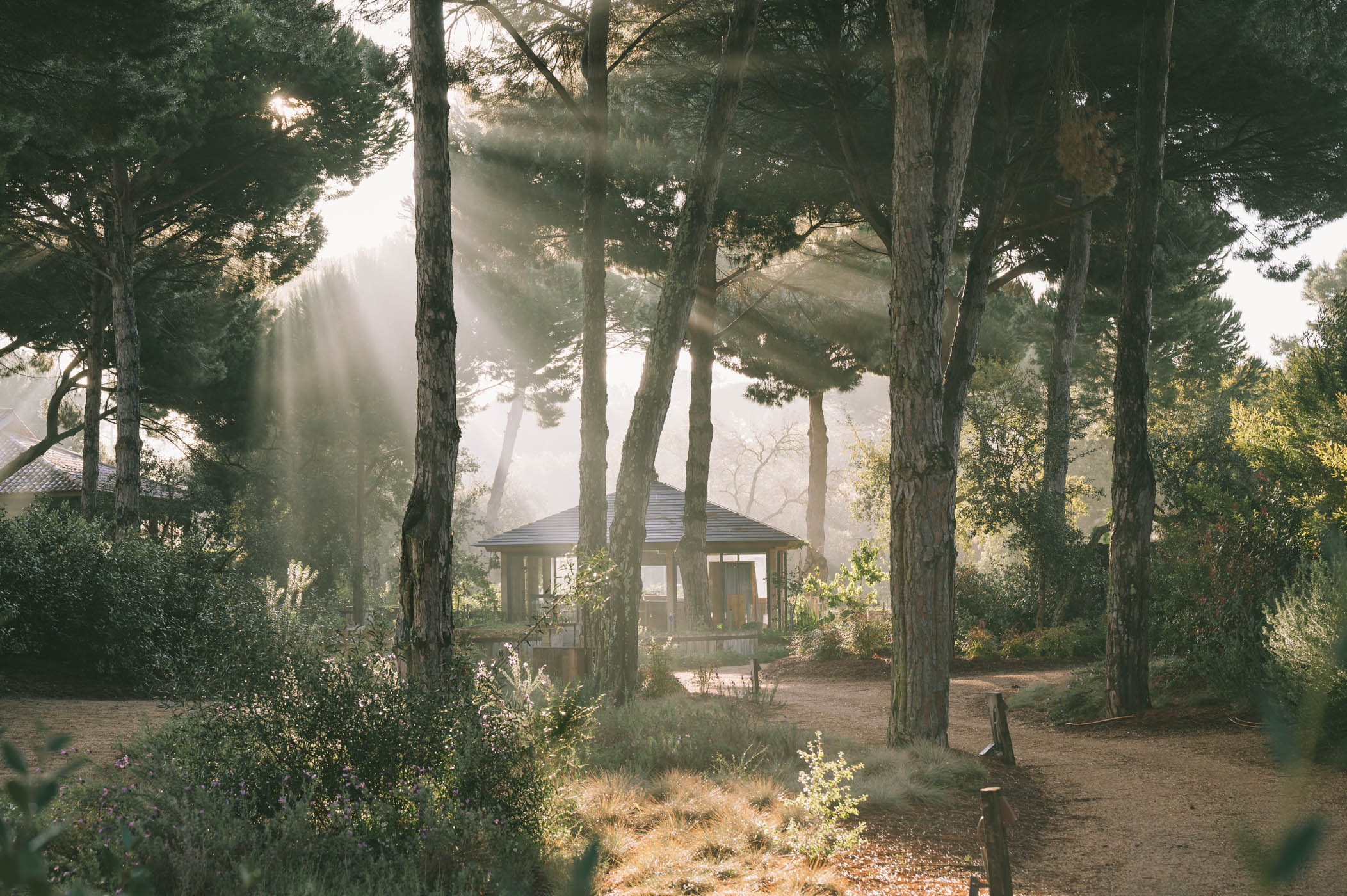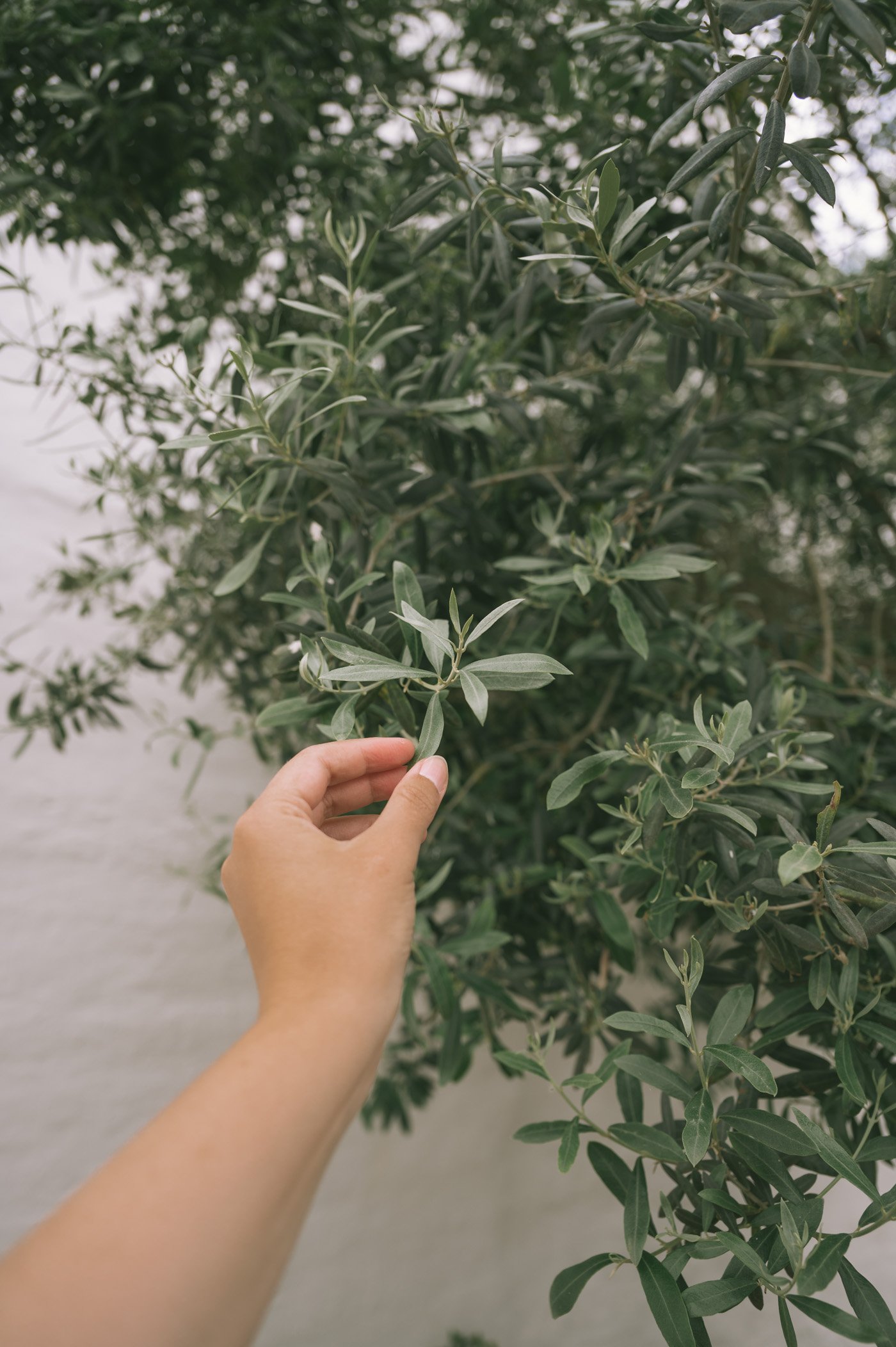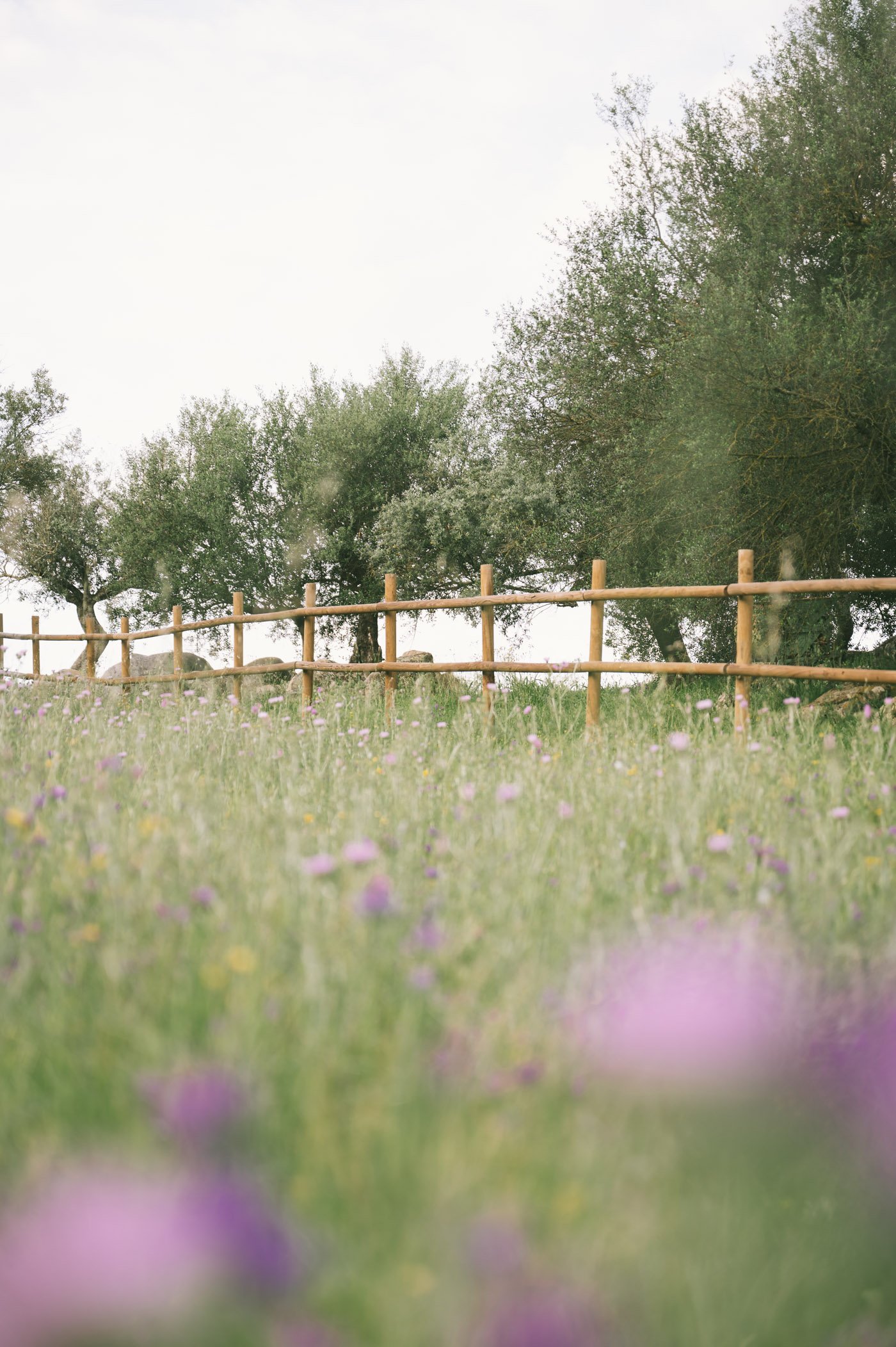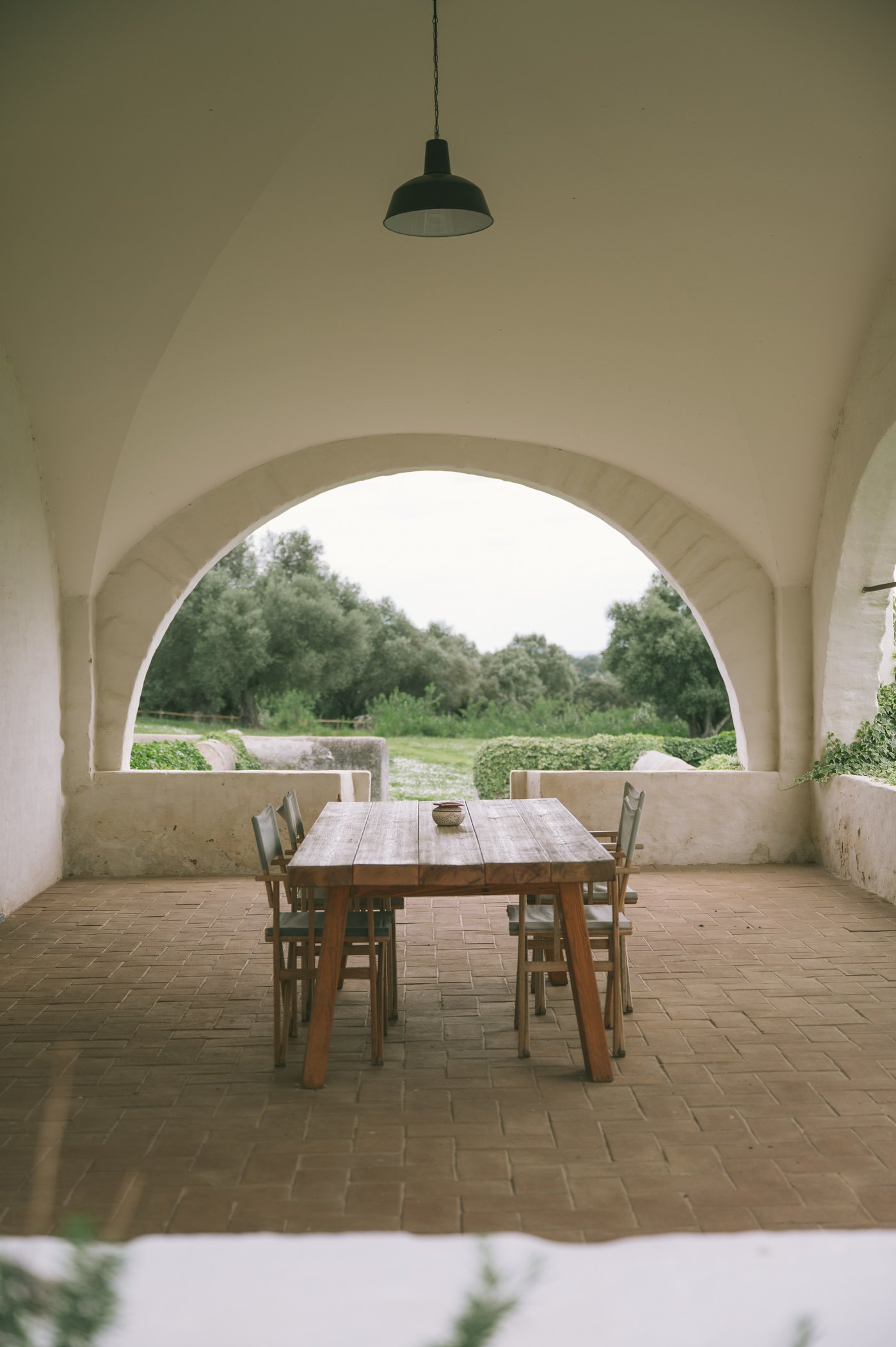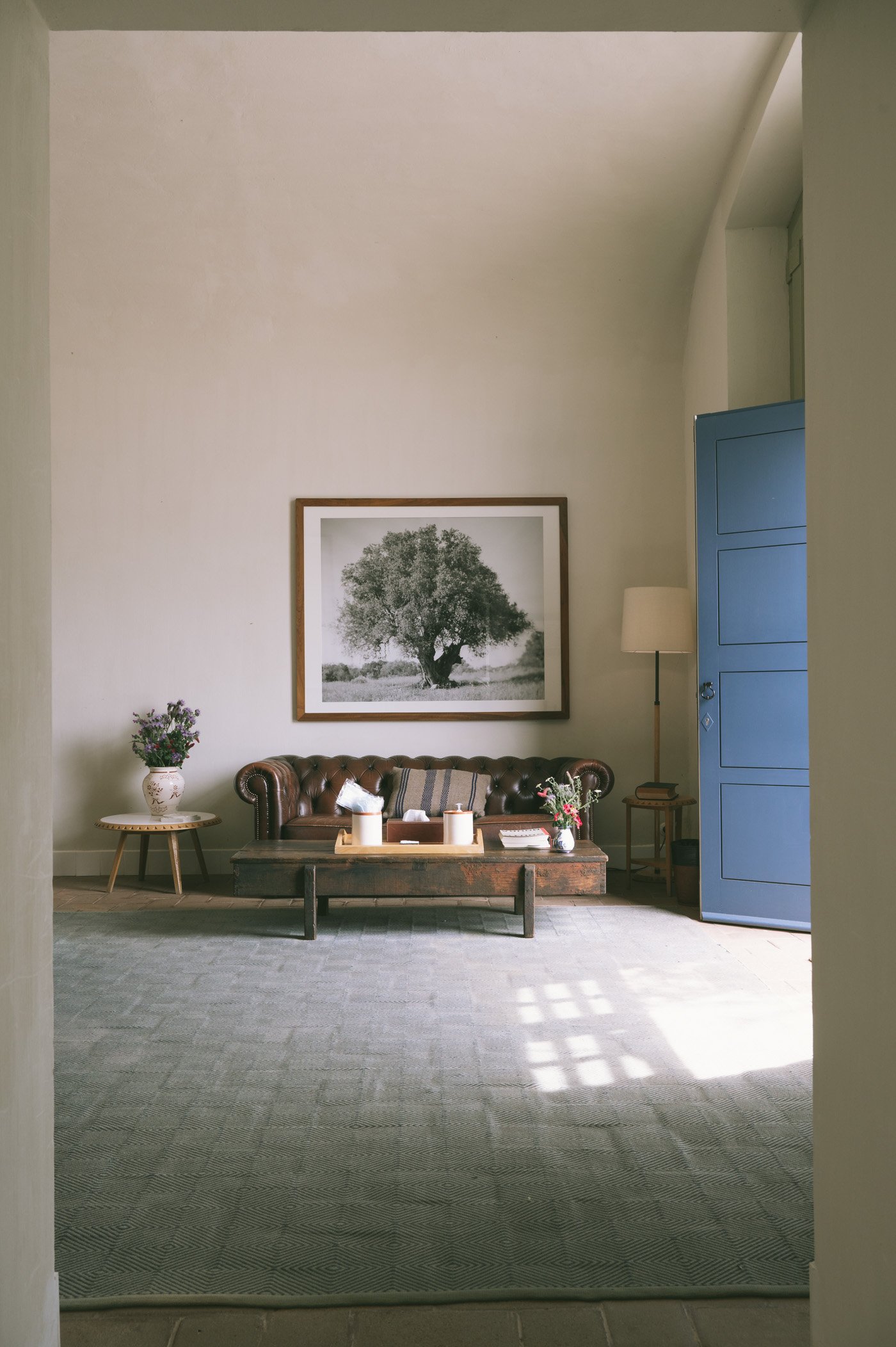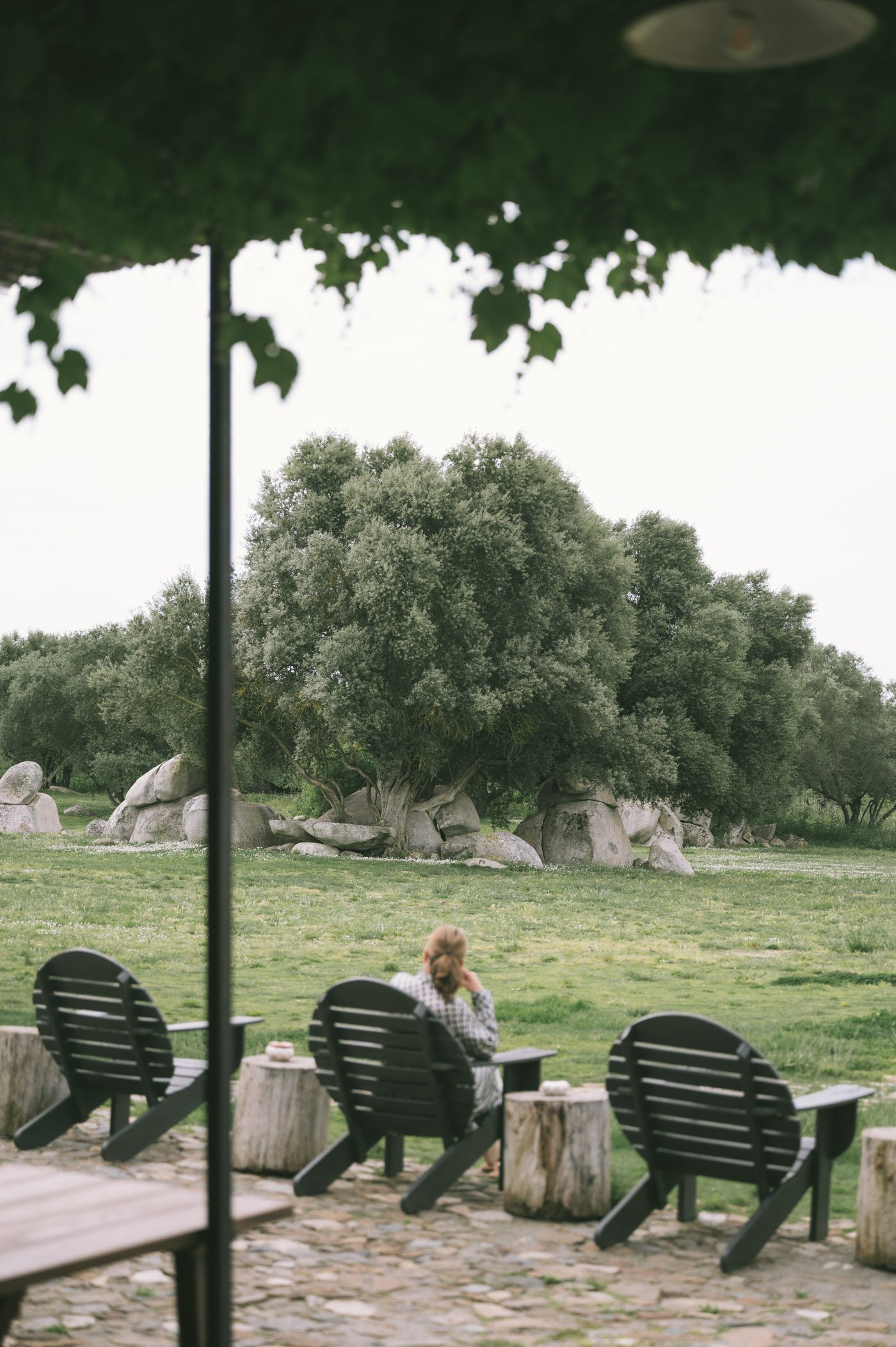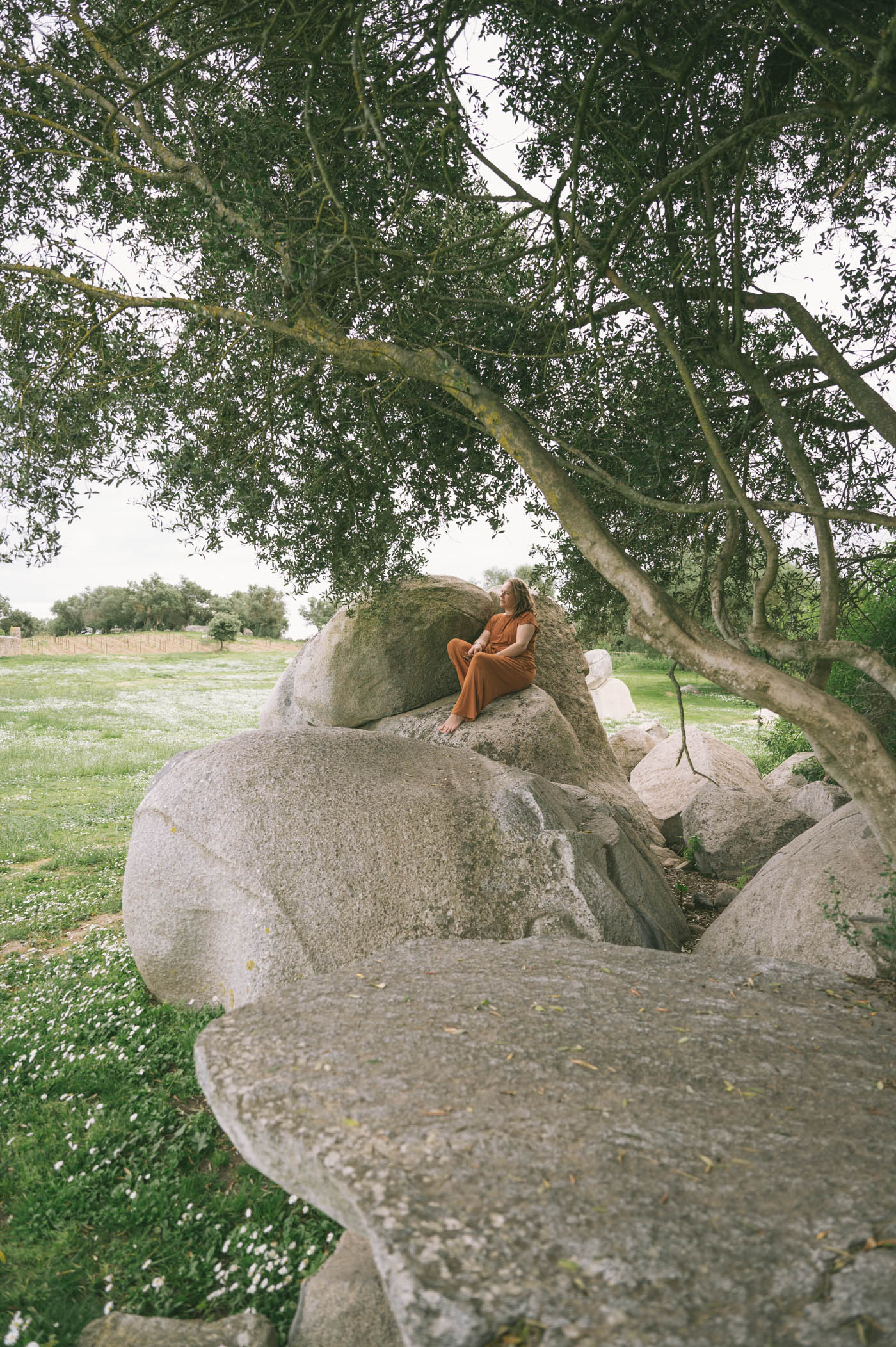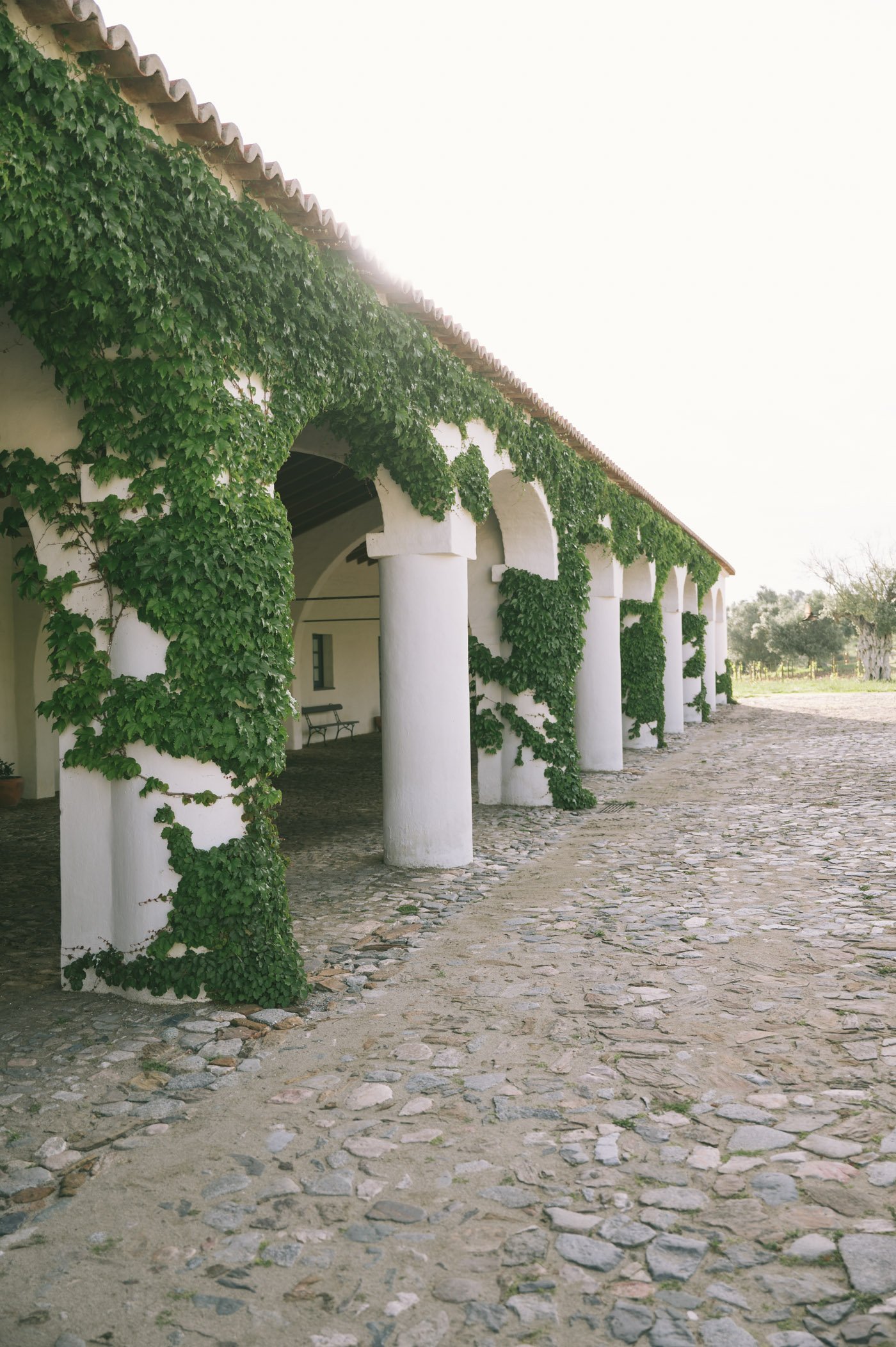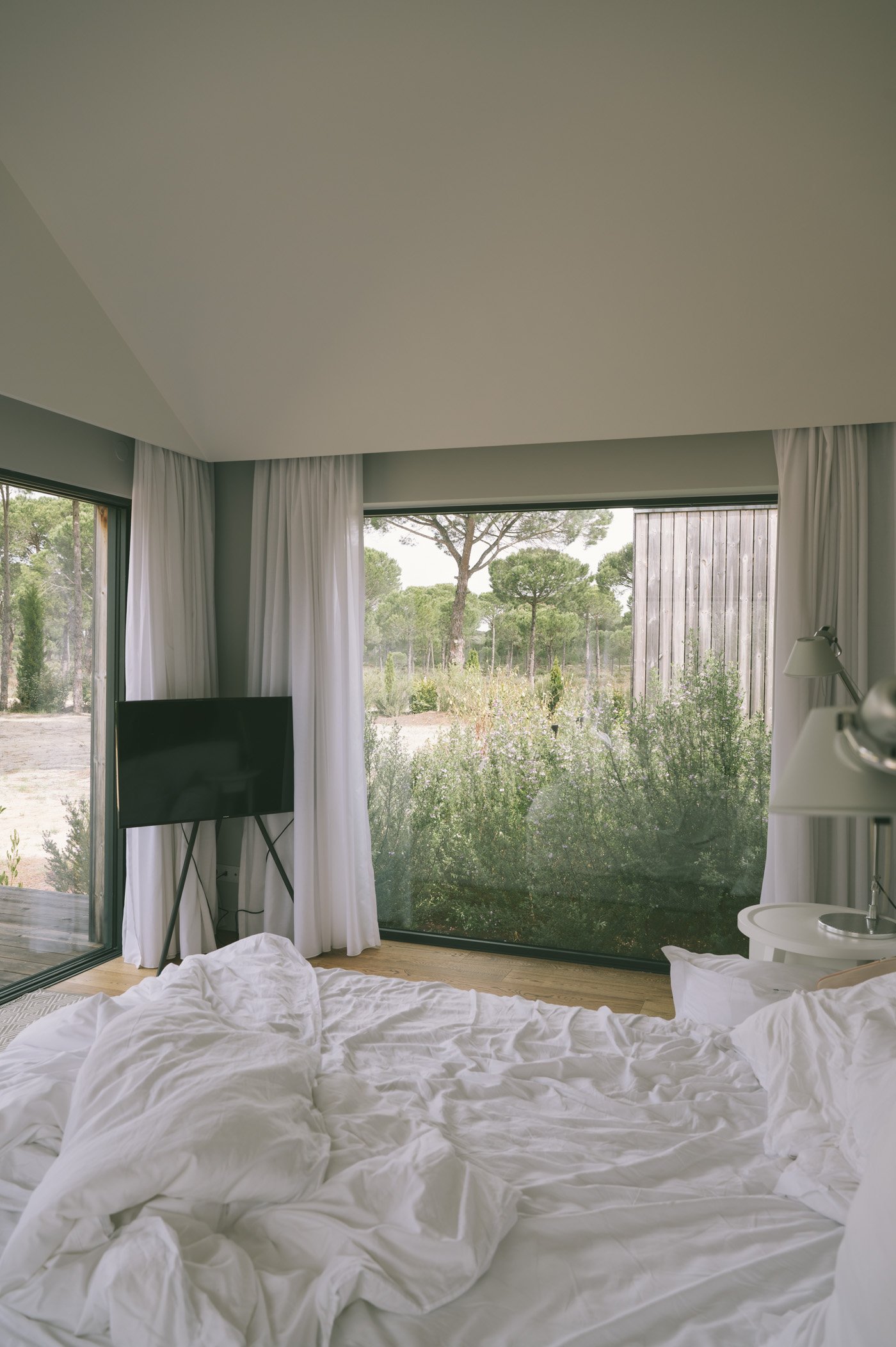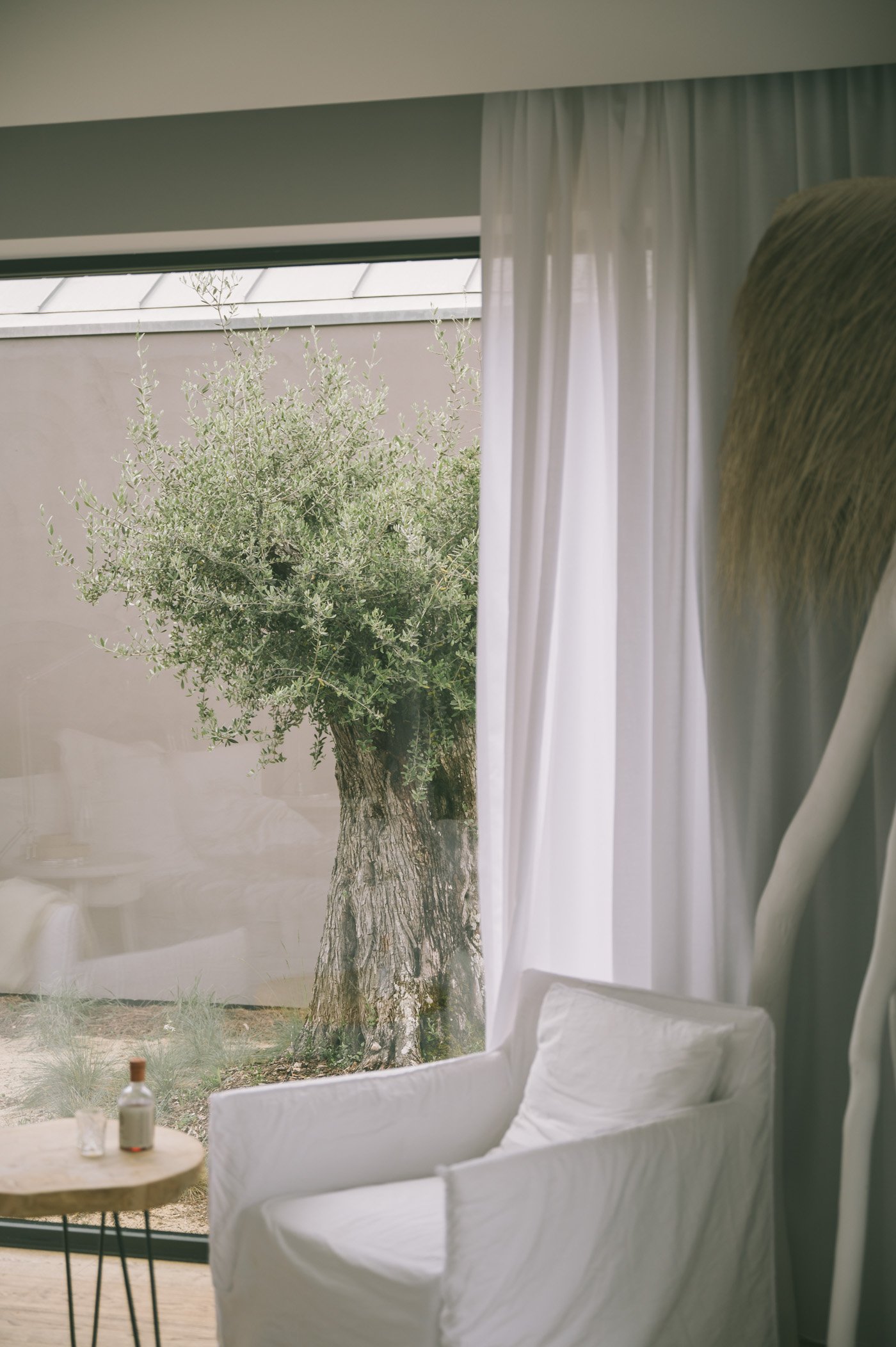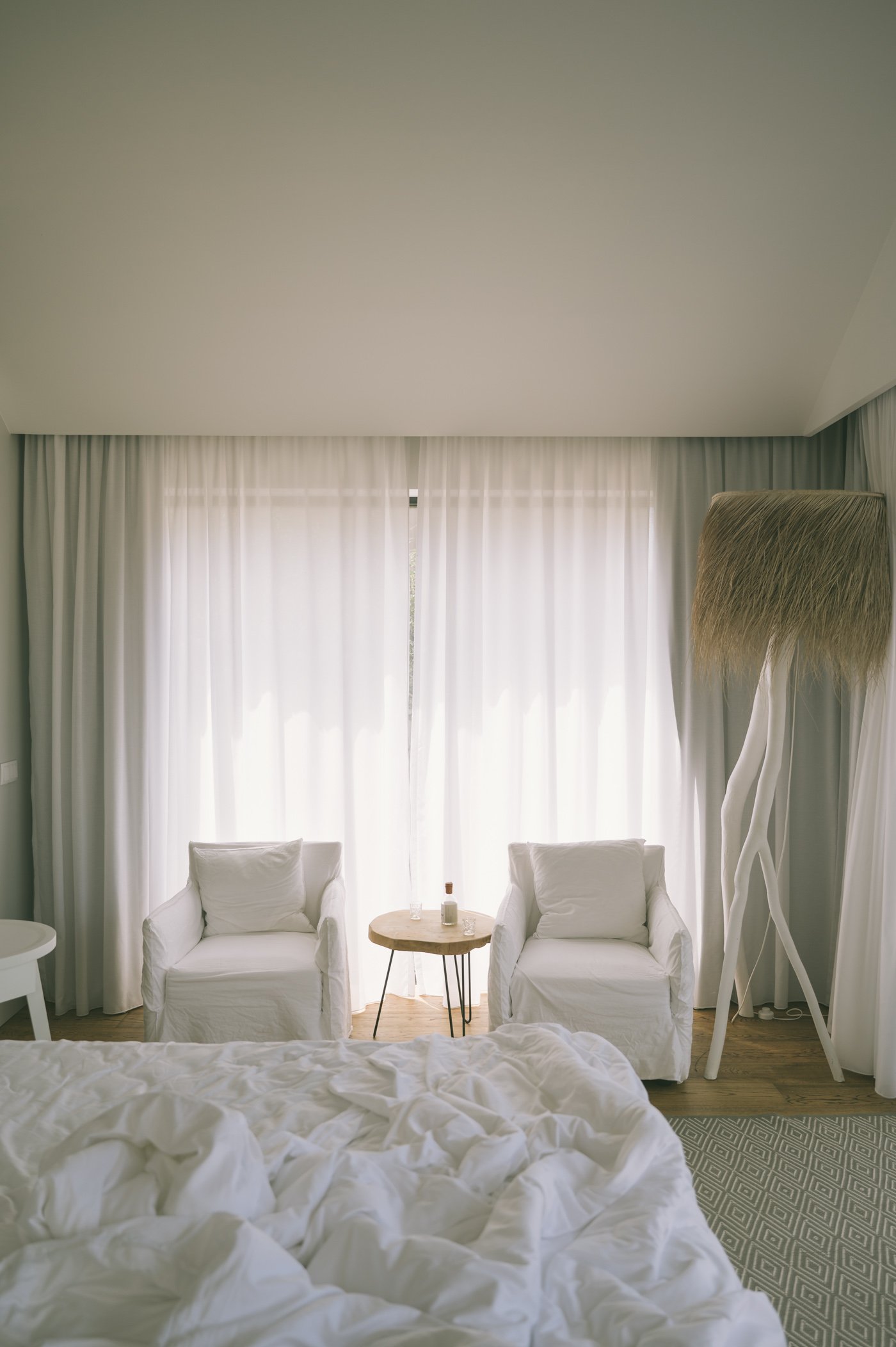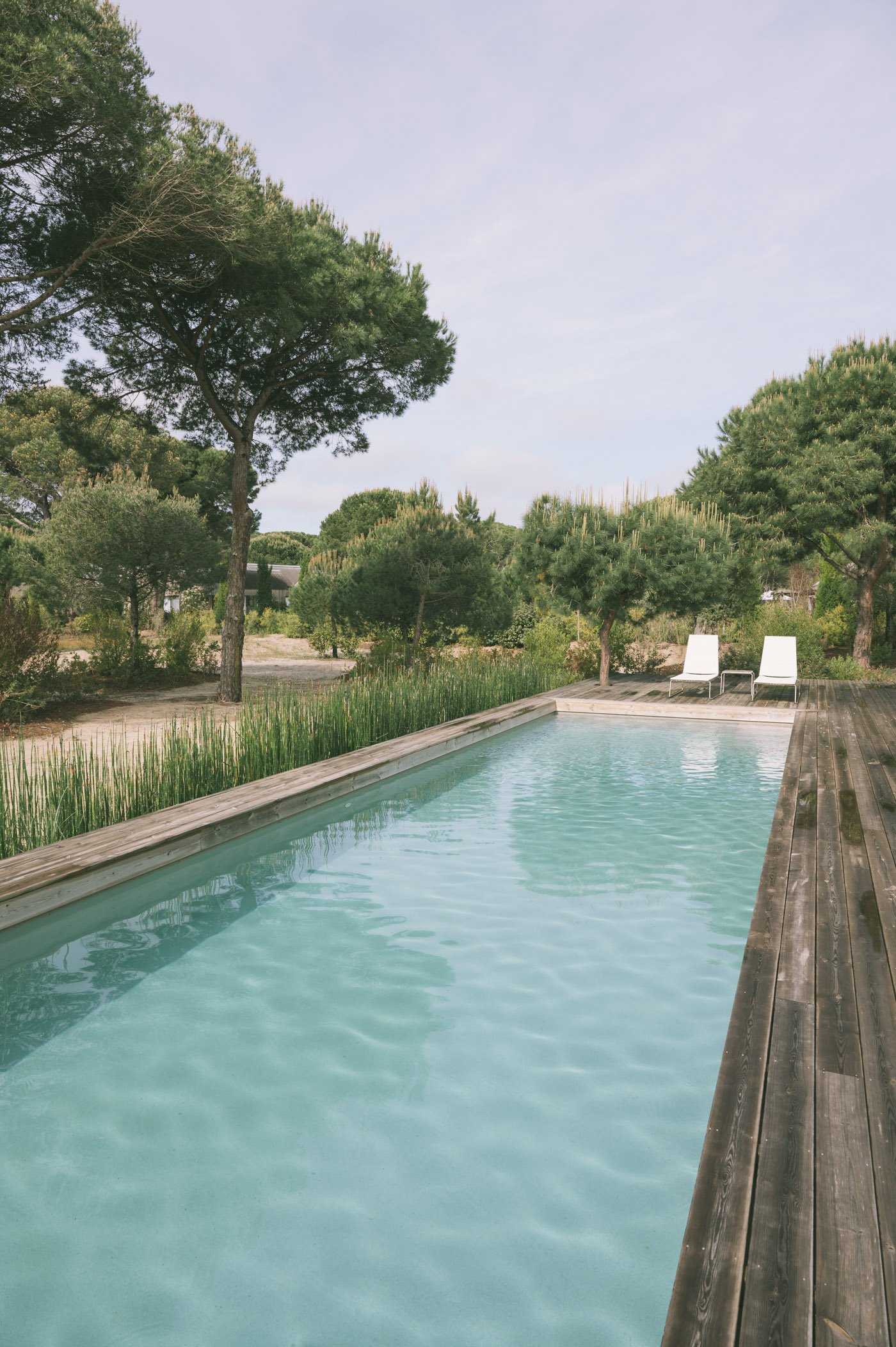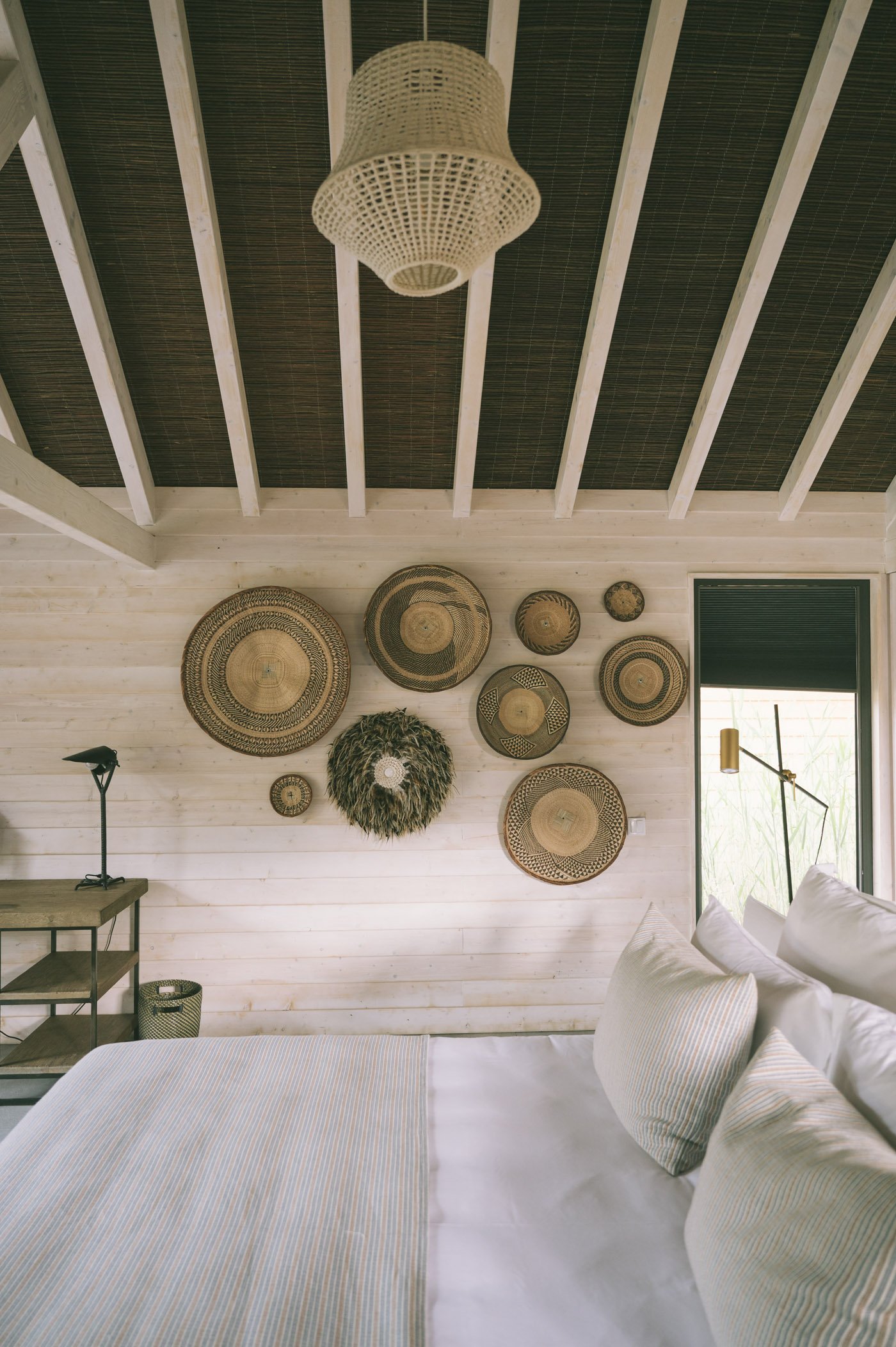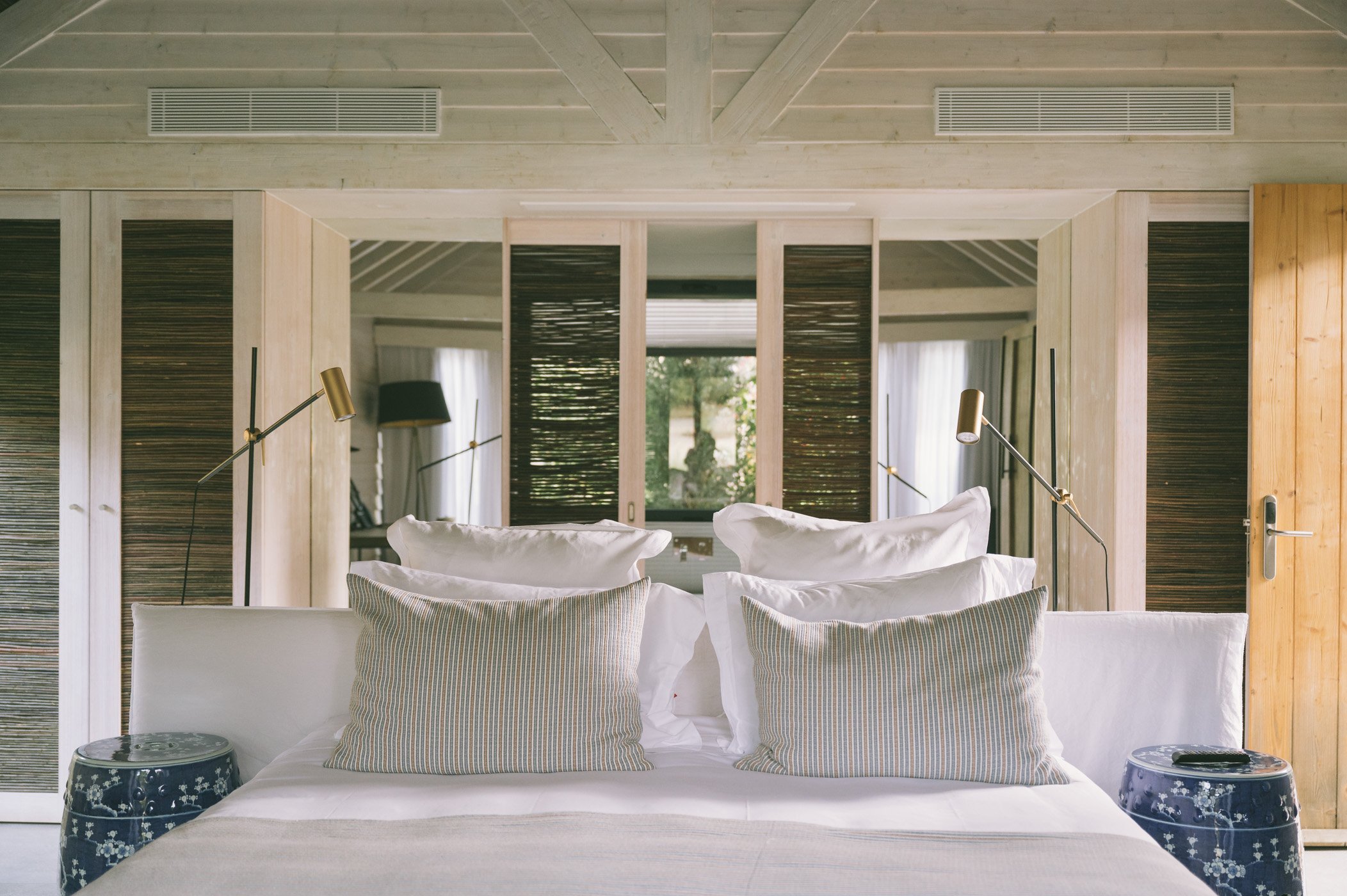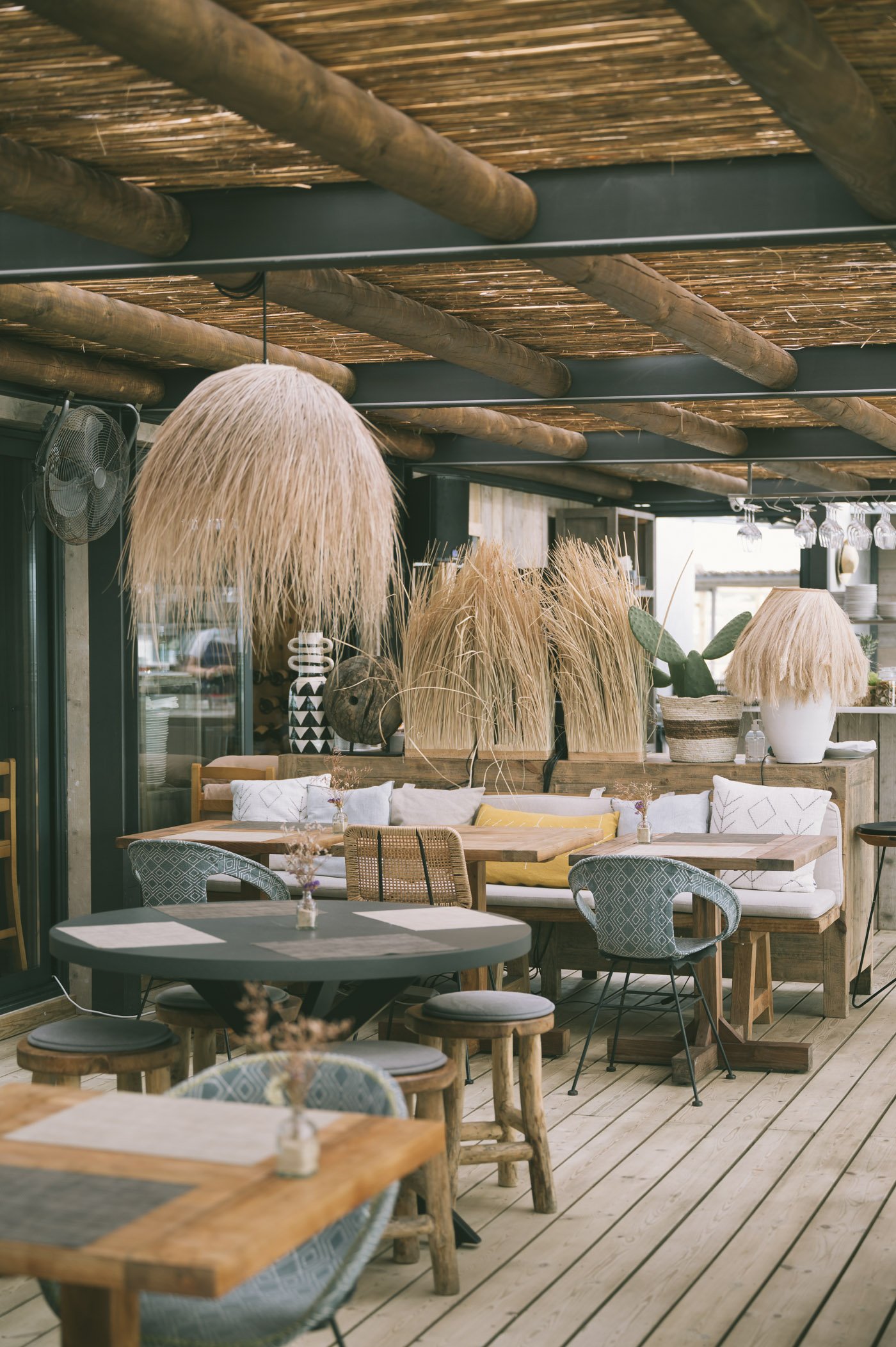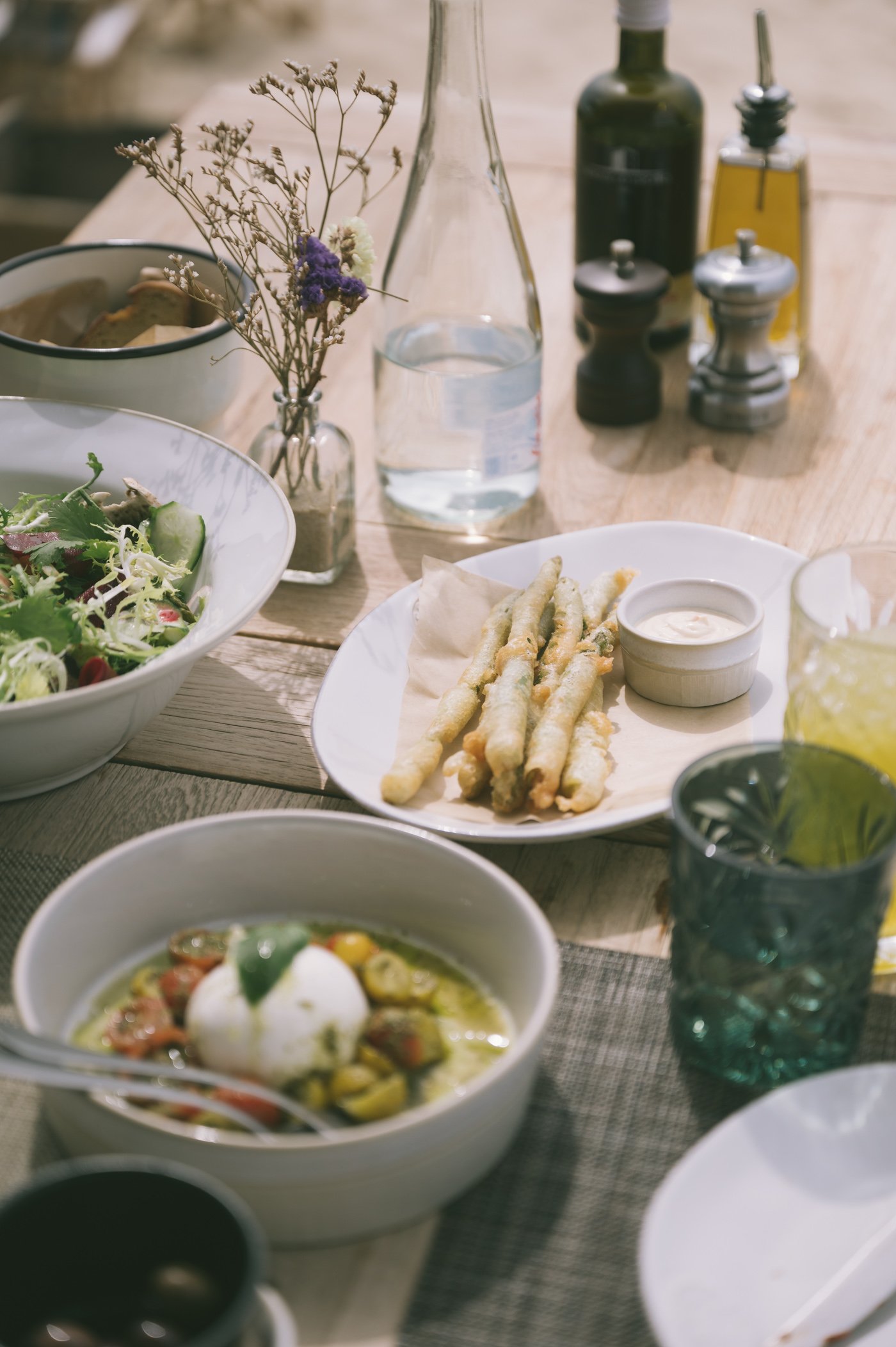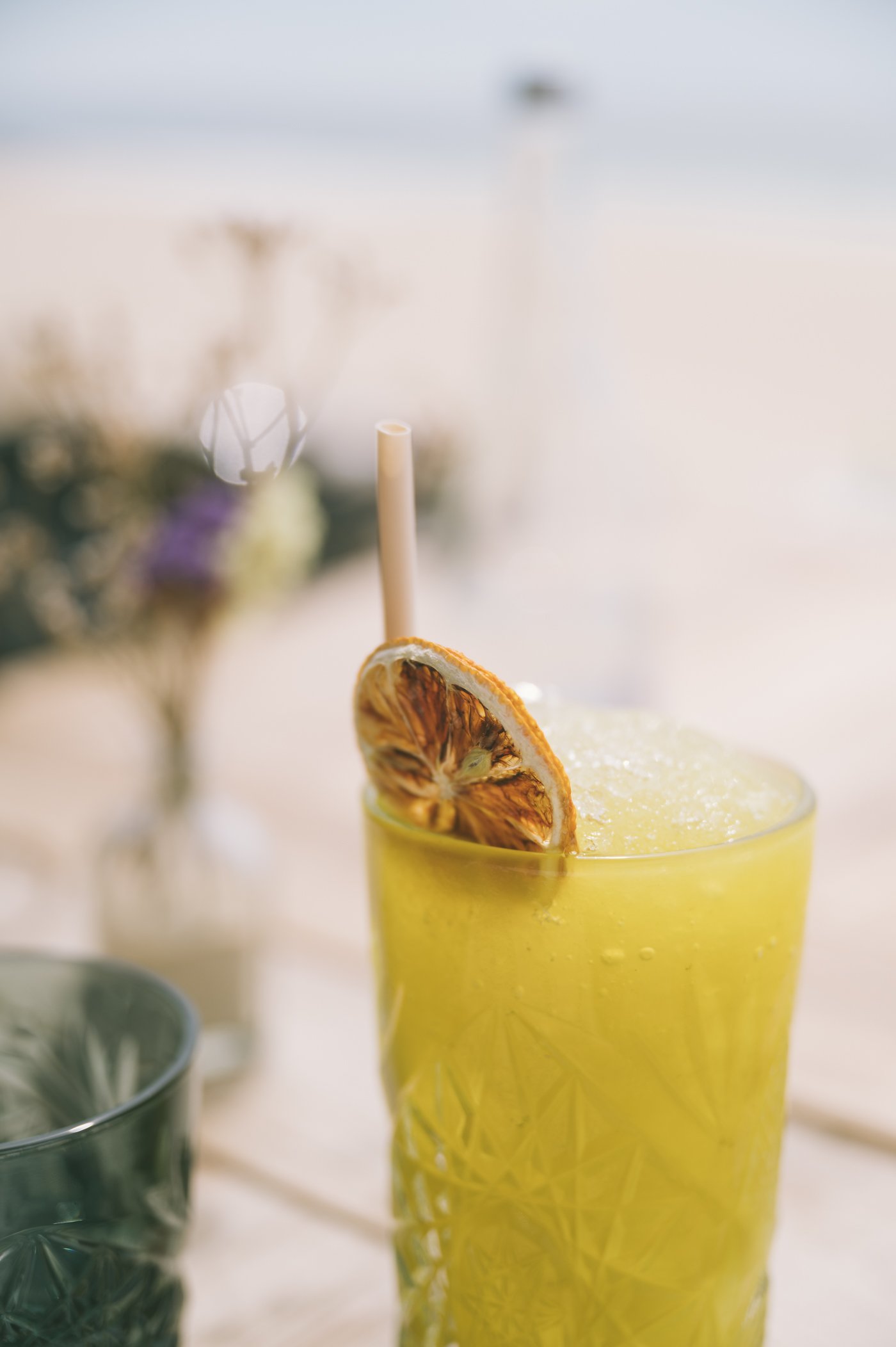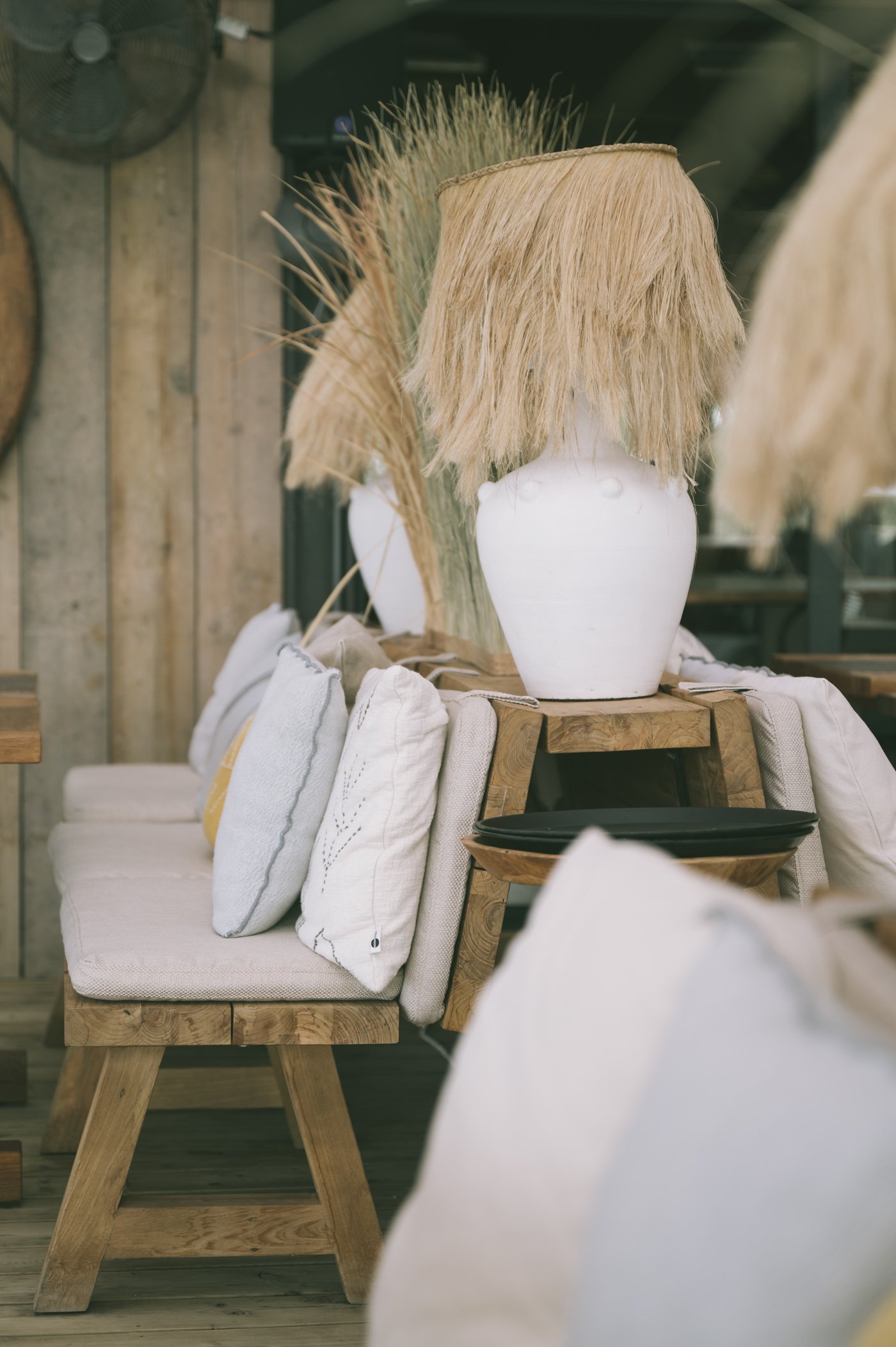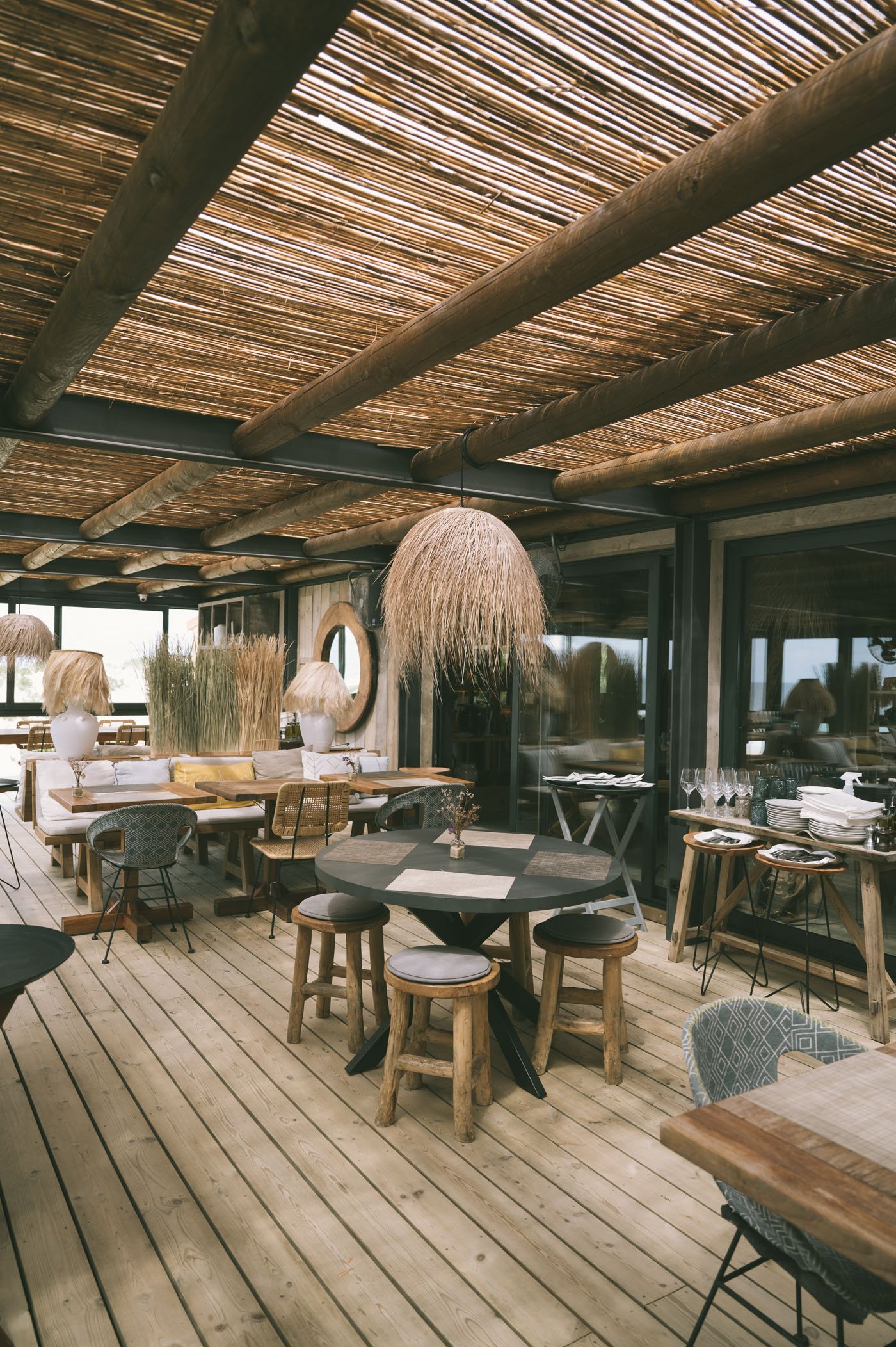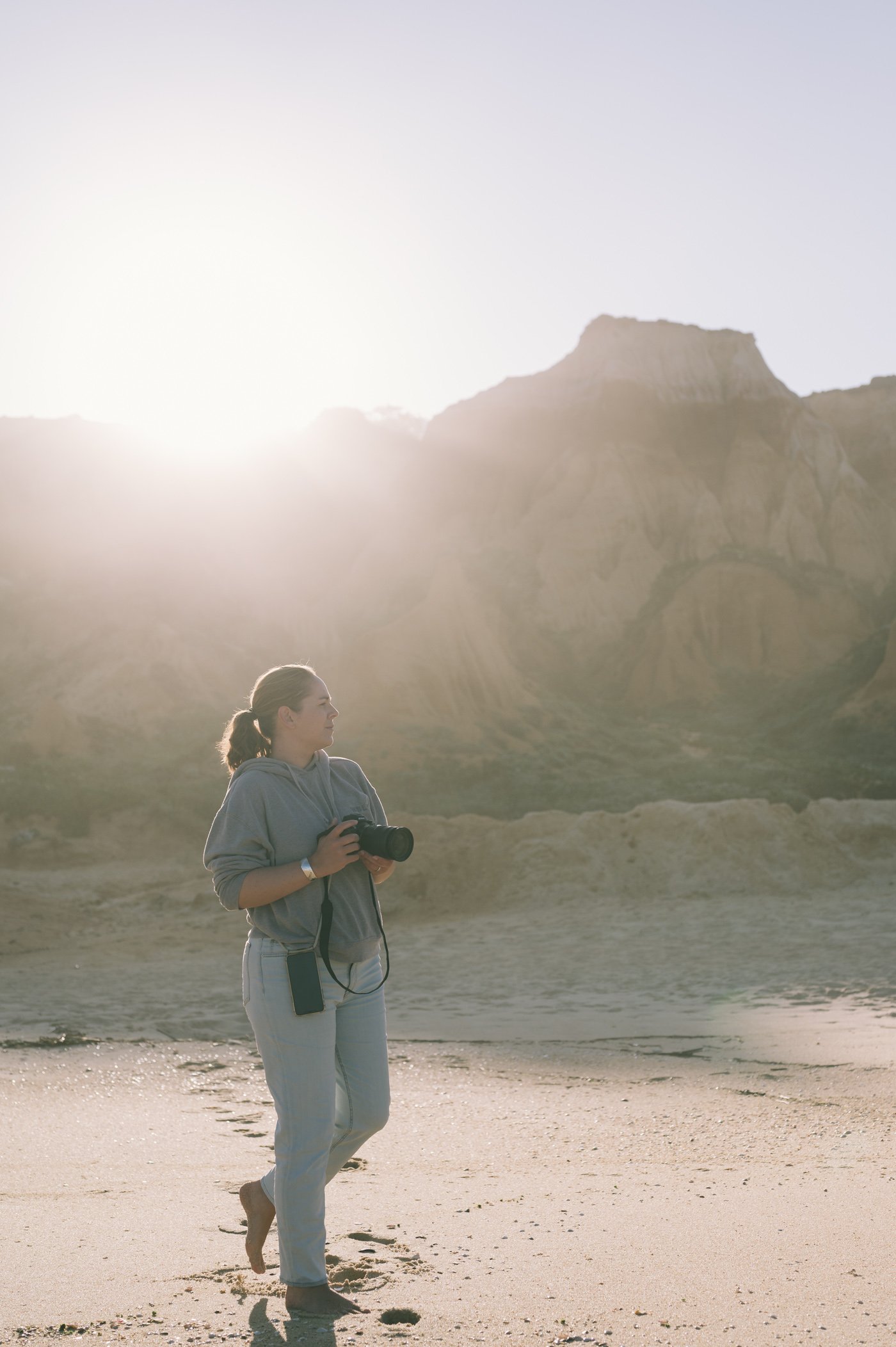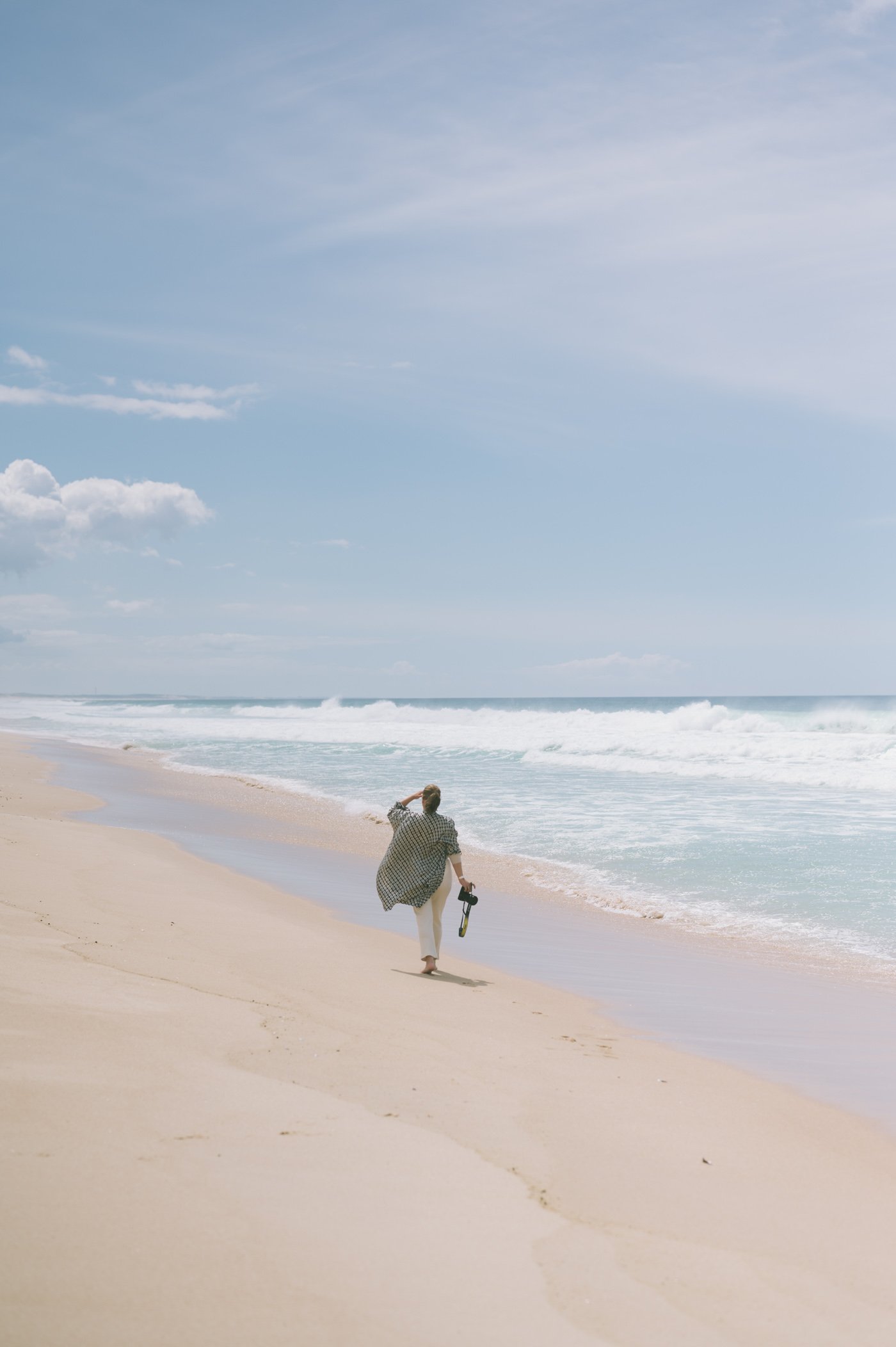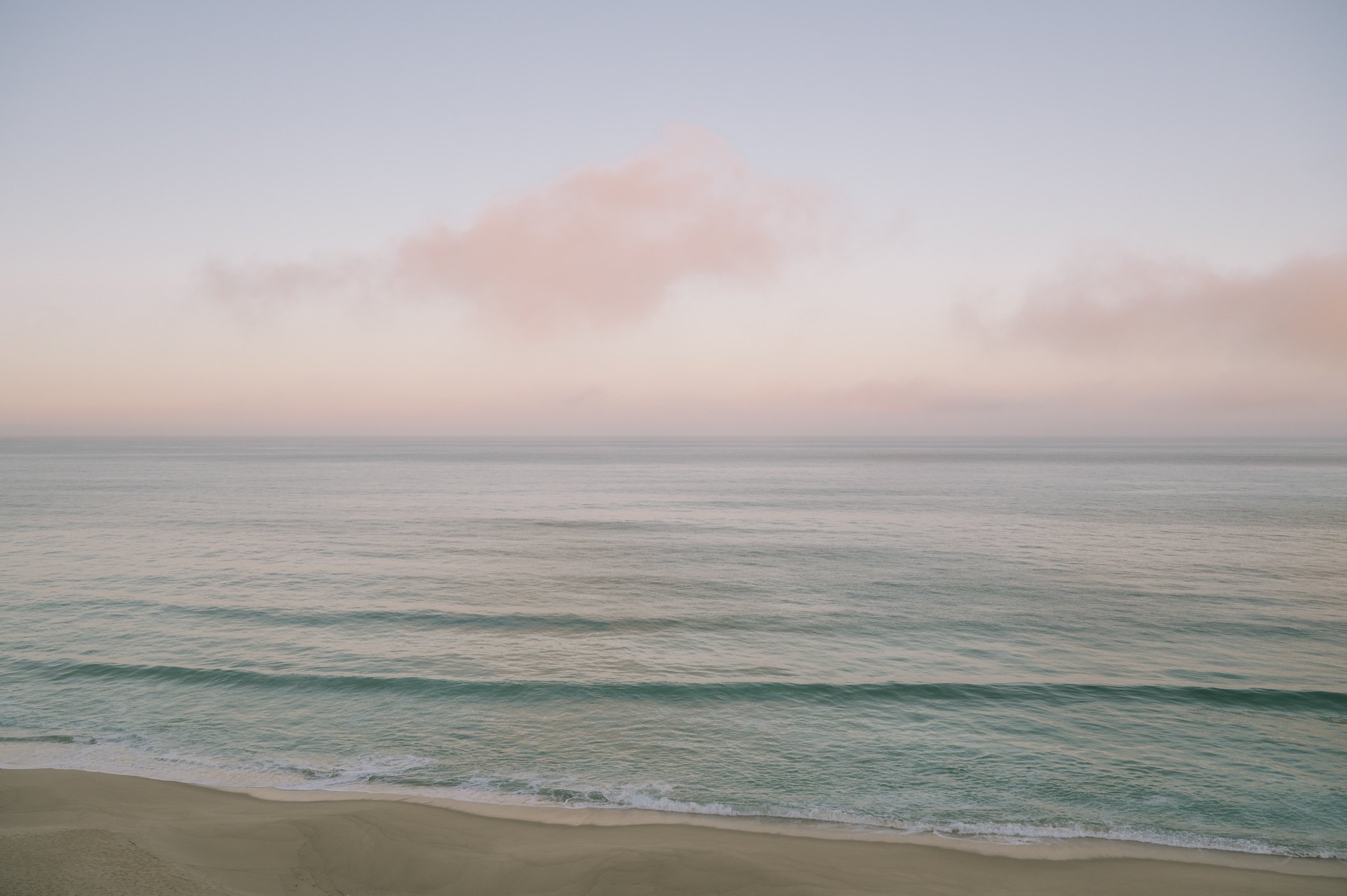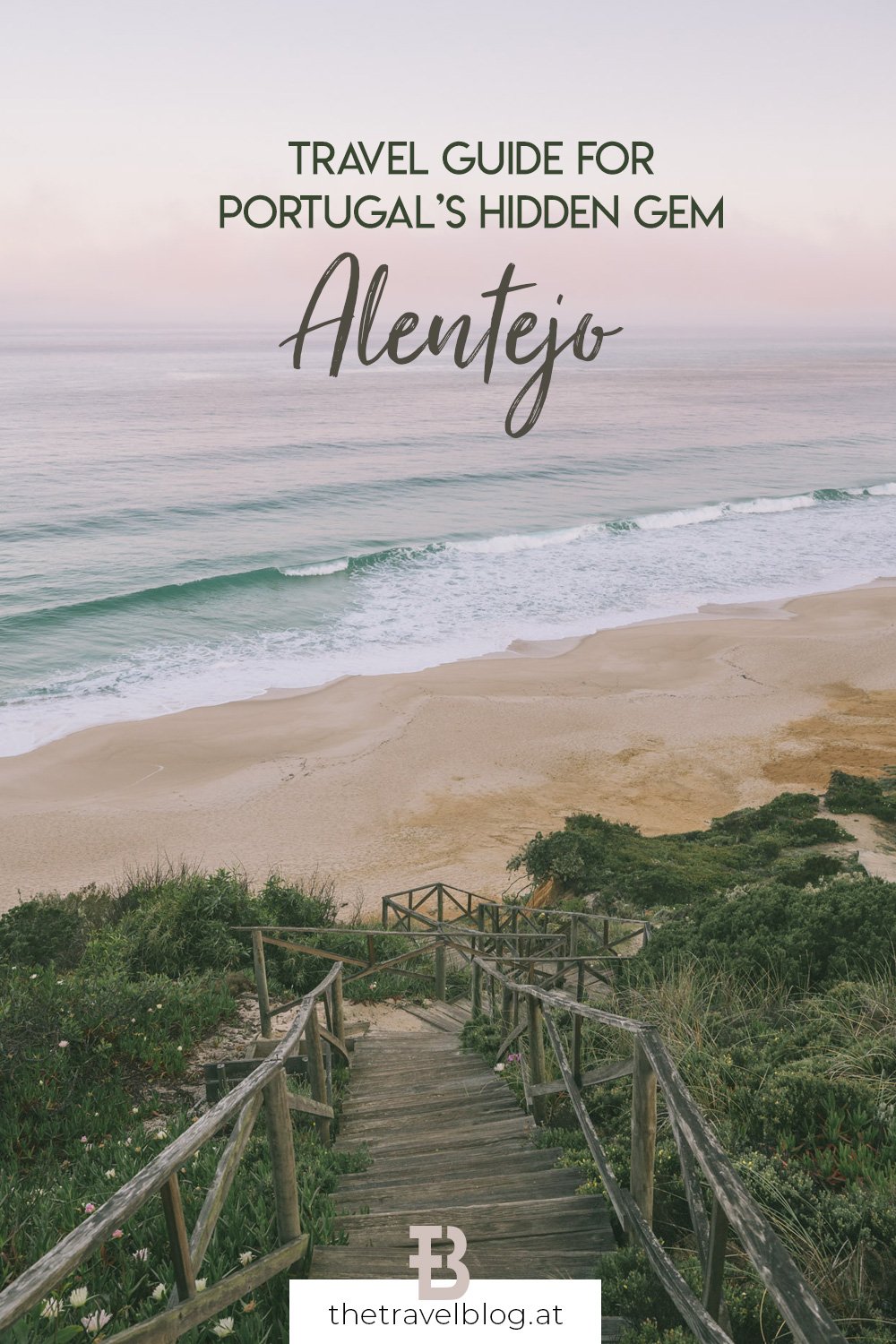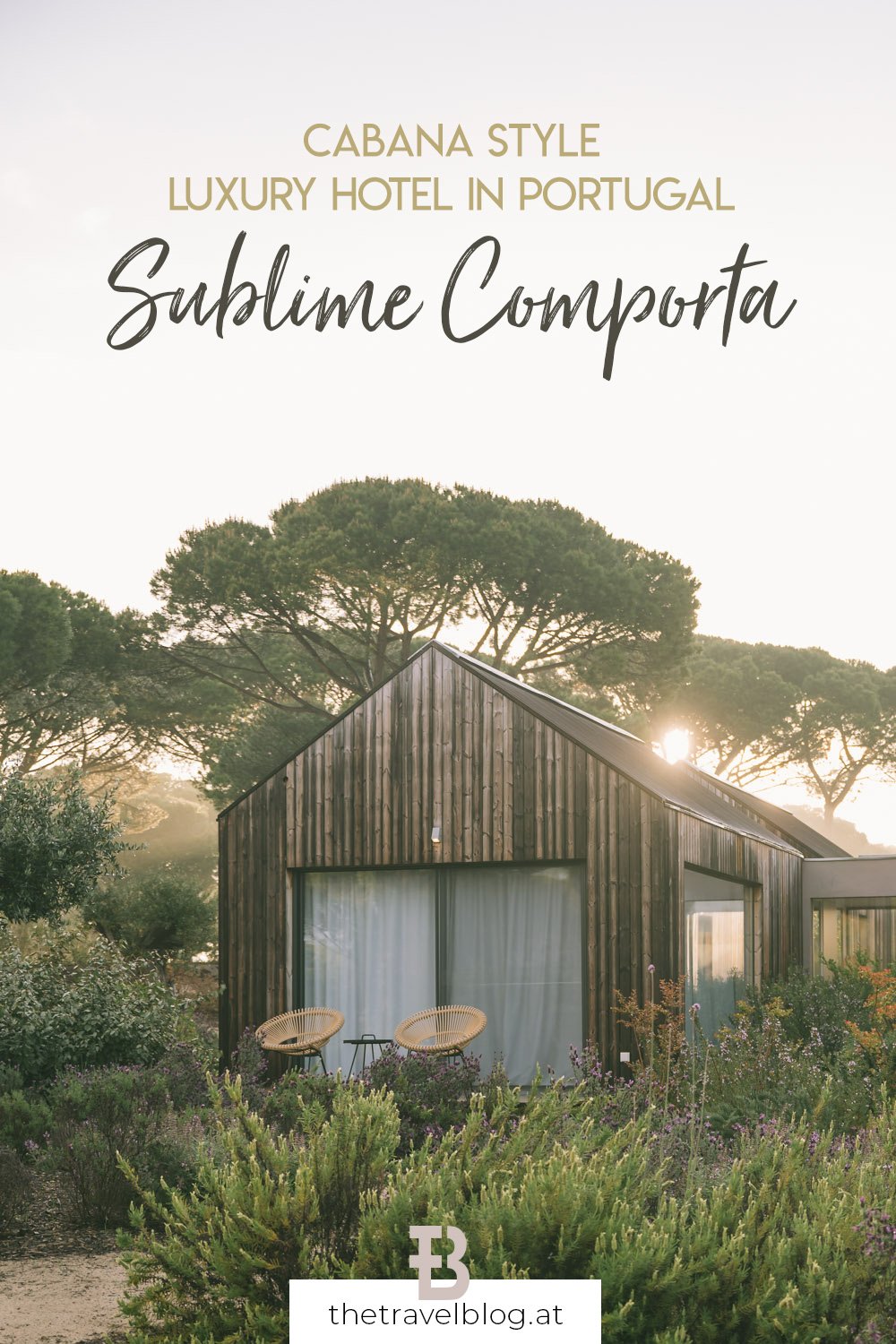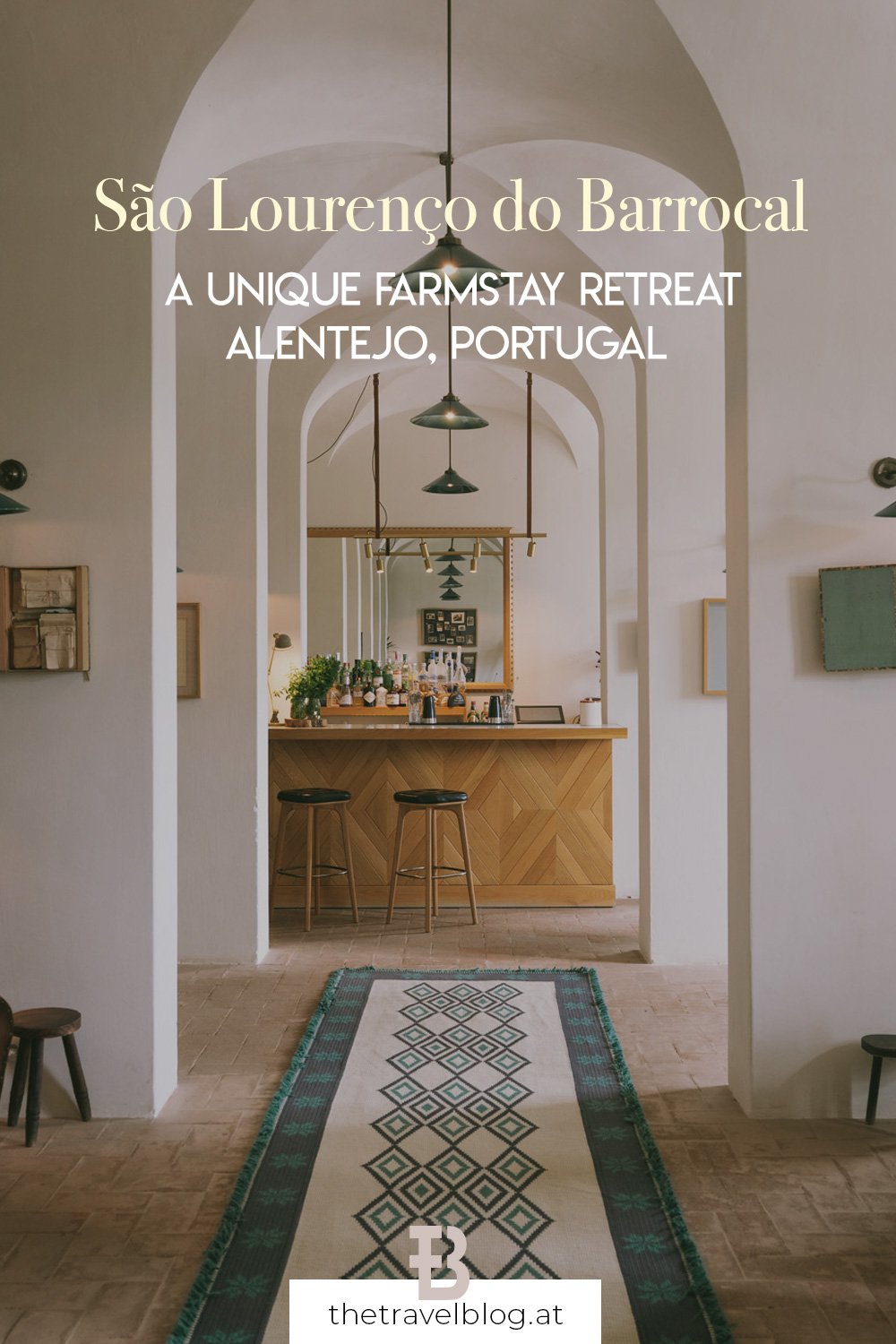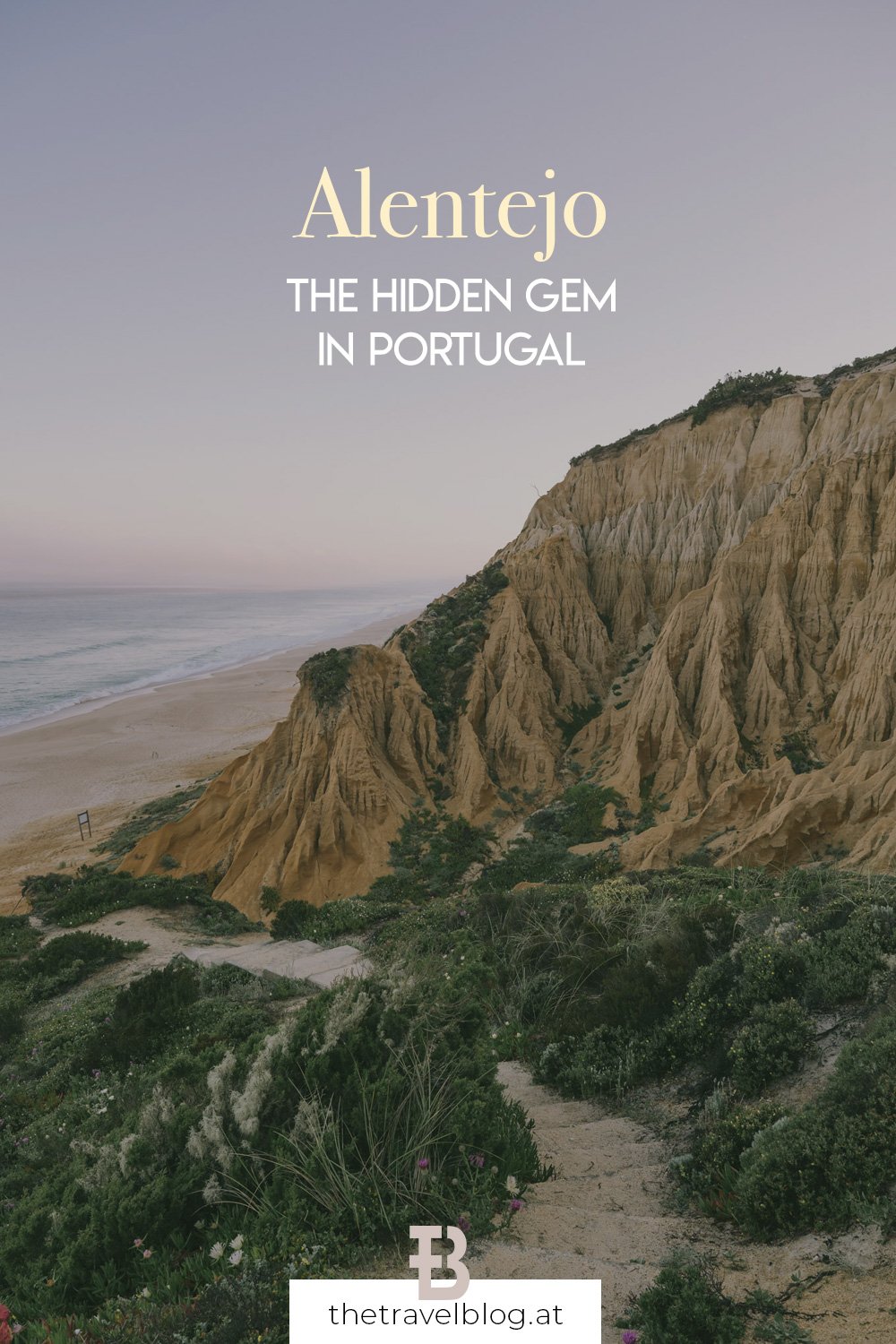(Last Update: August 2023). It took us five visits of Portugal to finally make it to the Alentejo region. After multiple trips to Lisbon, Porto, the Algarve and even the island of Madeira we’ve now also visited the heartland of Portugal. This part of Portugal is tucked in-between the Algarve in the South, Lisbon in the West and Spain in the East. The region is thinly populated and mostly famous for farming everything from grapes to olives and cork.
But now we know it’s a hidden gem, that is very worth a visit.
Our 2 hour drive from the airport in Lisbon to our first destination already led us through extensive alleyways of century old olive and oak trees and set the tone for the rest of the trip. Welcome to Alentejo – land of trees!

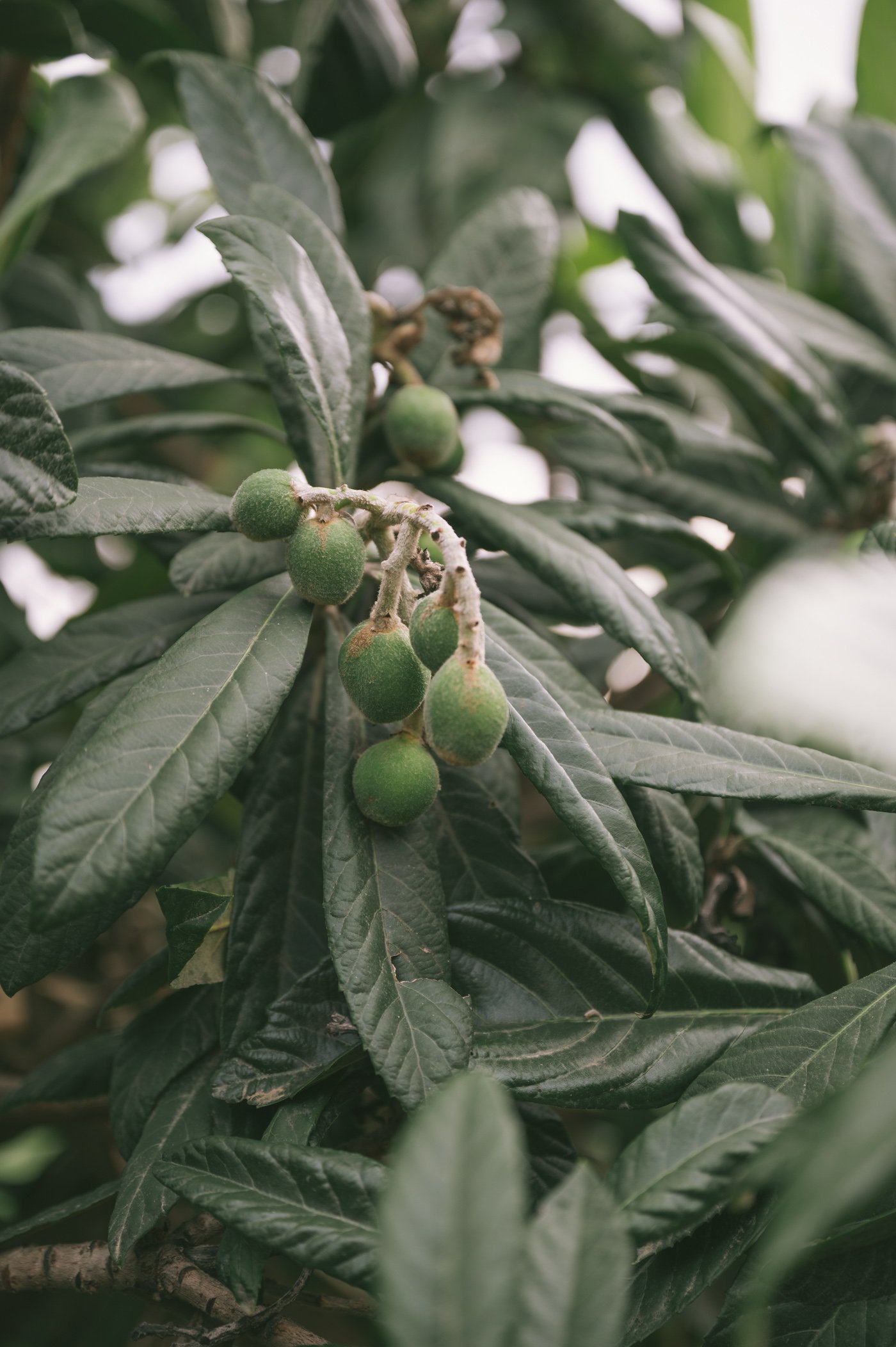
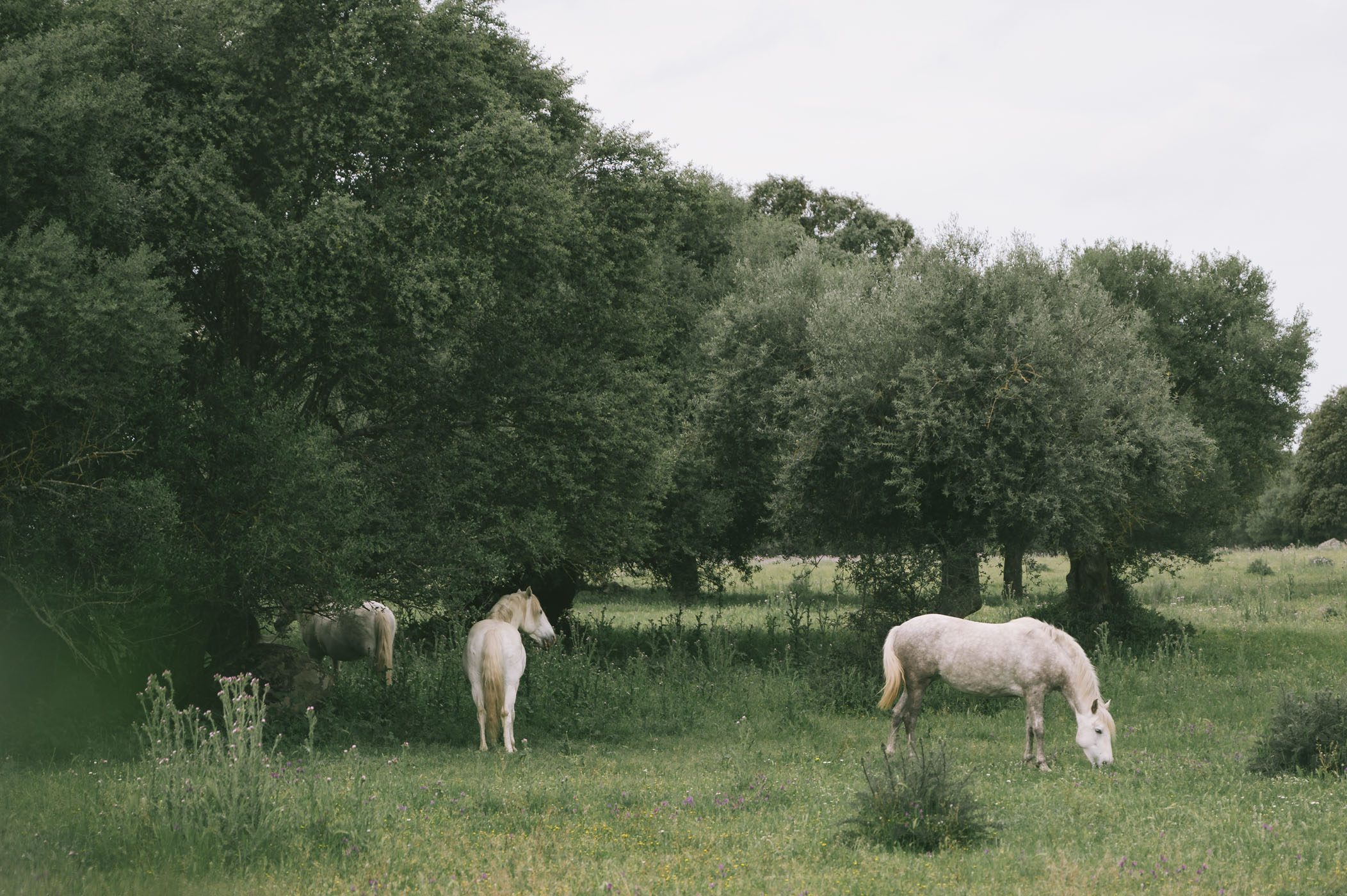 Trees are the lifeline and kind of a symbol for the Alentejo region.
Trees are the lifeline and kind of a symbol for the Alentejo region.
Our trip took place in the low season in April, which spoiled us with warming rays of sunshine and comfortable temperatures to have picnics and enjoy a lunch at the beach (but no swimming as the Atlantic is freezing cold).
In symbiosis with trees
Everything in Alentejo seems to be defined by trees. The landscape feels like straight out of Alice in Wonderland. Rolling hills are dotted with gnarled trees, that almost look like their very own fairytale characters. Each tree tells a story and has the history of Alentejo engraved. Just to give you an example: To harvest cork each of the oak trees has to grow 27 years to be peeled for the first time. Farming here is a true waiting game and that’s also what sets the pace of the region.
Welcome to the epicentre of slow traveling!
No need to rush in Alentejo
In fact the Alentejo holds a treasure trove of cultural & historical value, which you can still witness today when stumbling upon one of the many Menhirs, that date back to the neolithic period of the Stone Age. It’s like time stood still since then, when farming and settling became the main lifestyle of Homo sapiens.
Fast forward 10,000 years later and the people in the Alentejo are still mainly living from agriculture. That unfortunately has also led to huge waves of rural depopulation as younger generations have moved to the cities for new job opportunities. Now tourism brings a new wave of development with great potential to the Alentejo – yet, it’s still a young movement.
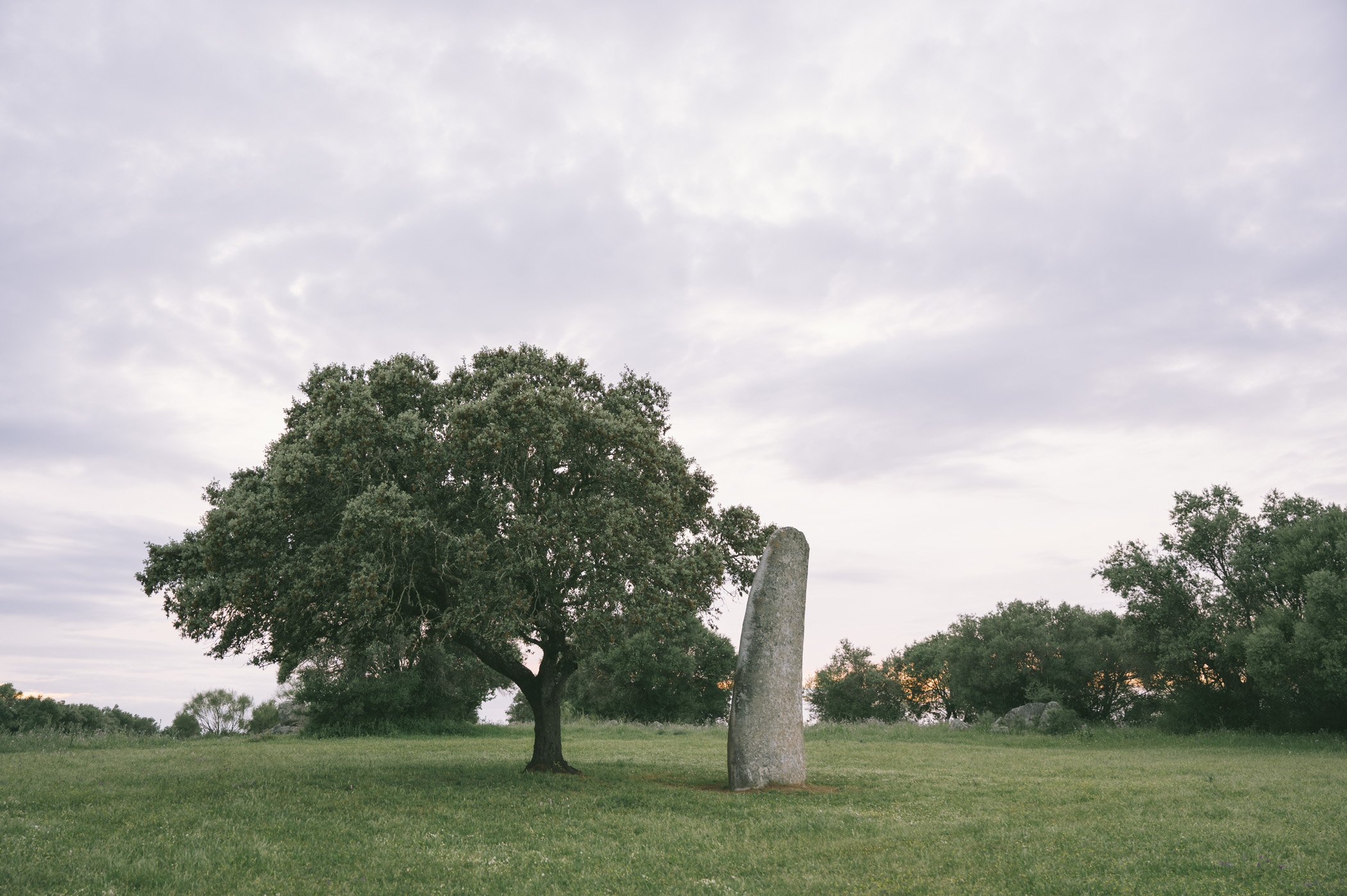 This menhir at the São Lourenço do Barrocal estate dates back to the neolithic age and proves the importance of the region 10,000 years ago.
This menhir at the São Lourenço do Barrocal estate dates back to the neolithic age and proves the importance of the region 10,000 years ago.
Where to stay: São Lourenço do Barrocal
Our first stop of our Alentejo tour brings us to the 200 year-old farm called “São Lourenço do Barrocal”. The 780-hectare estate was transformed into a wonderful retreat for discerning guests – including a Susanne Kaufmann spa. Guests come here to find silence, seclusion and a deep-dive into the region.
São Lourenço do Barrocal is all about authentic experiences.
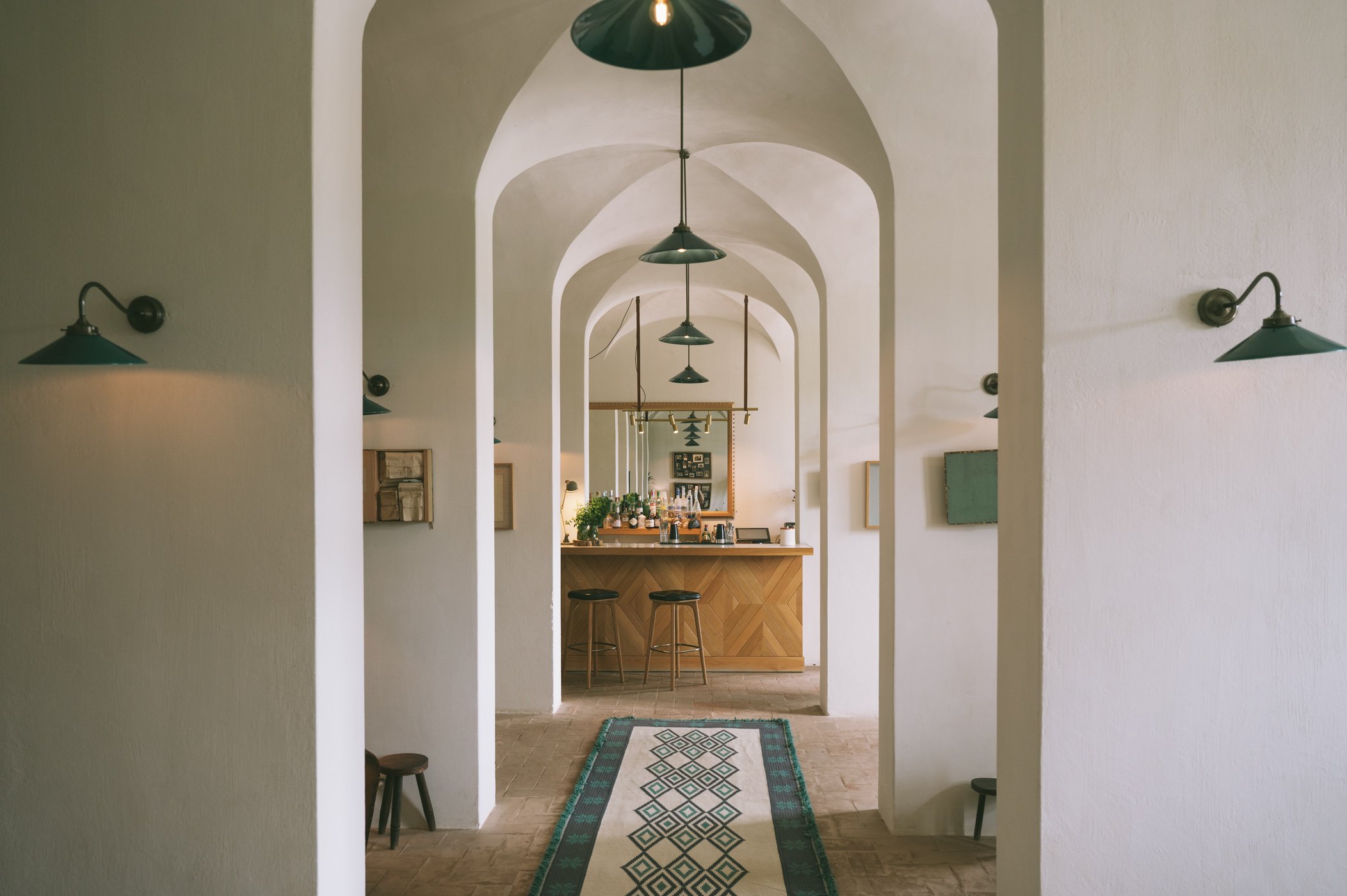 São Lourenço do Barrocal farmstay retreat
São Lourenço do Barrocal farmstay retreat
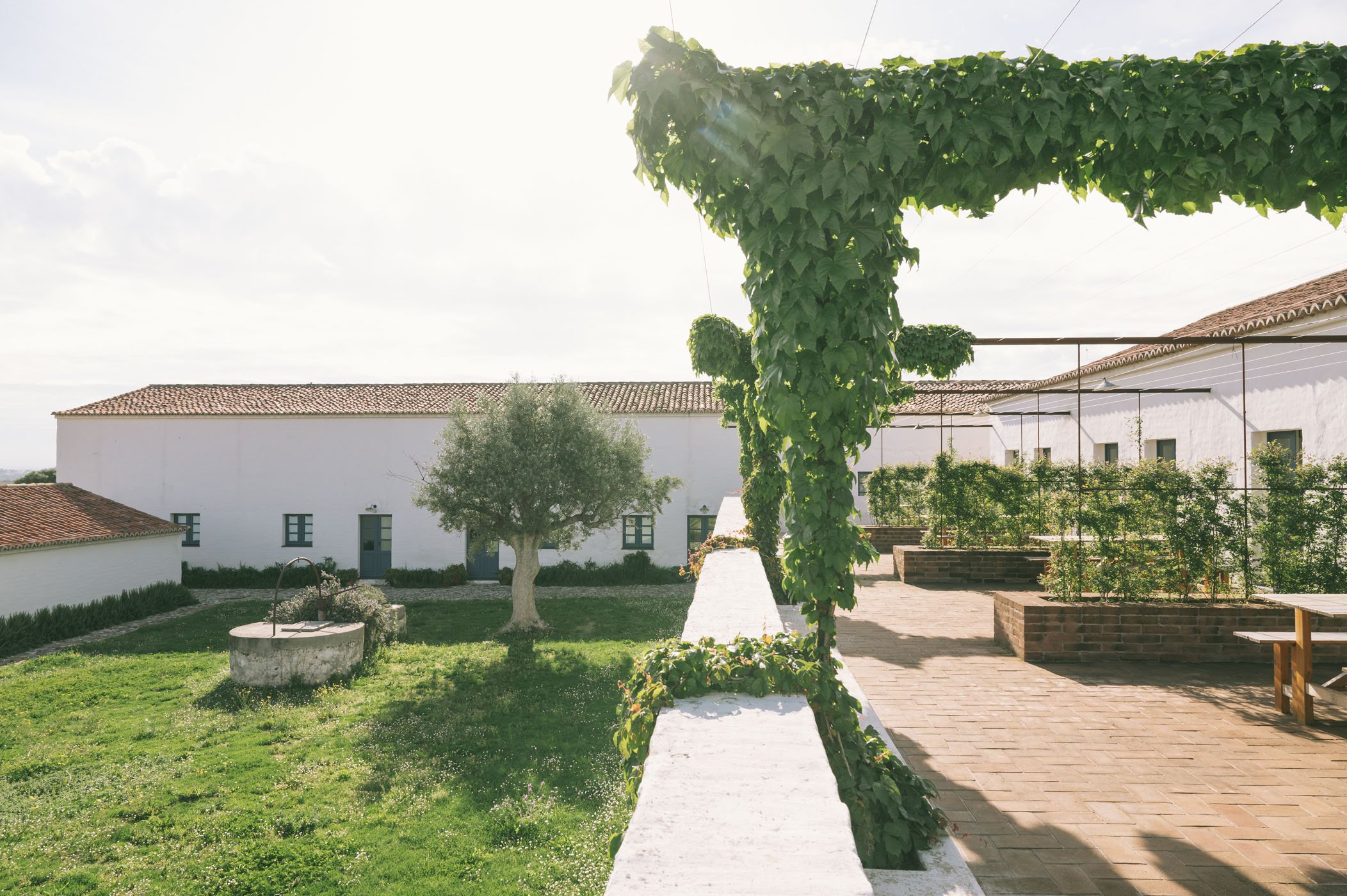 Impressions from the large estate of São Lourenço do Barrocal
Impressions from the large estate of São Lourenço do Barrocal
From archeological trails to pottery workshops
Days at São Lourenço do Barrocal are filled with picnics, horse-riding, archeological visits along the olive trail and our very personal highlight: Pottery workshops. Neighbouring São Pedro do Corval is also known as the pottery capital of Alentejo. The small village has more than 20 artisanal pottery workshops. The family-run “Olaria Bulhão” hosts the workshops at São Lourenço do Barrocal and there’s no better way to feel what the Alentejo is all about.
It’s craftmanship, it’s focus and concentration and most importantly: patience.

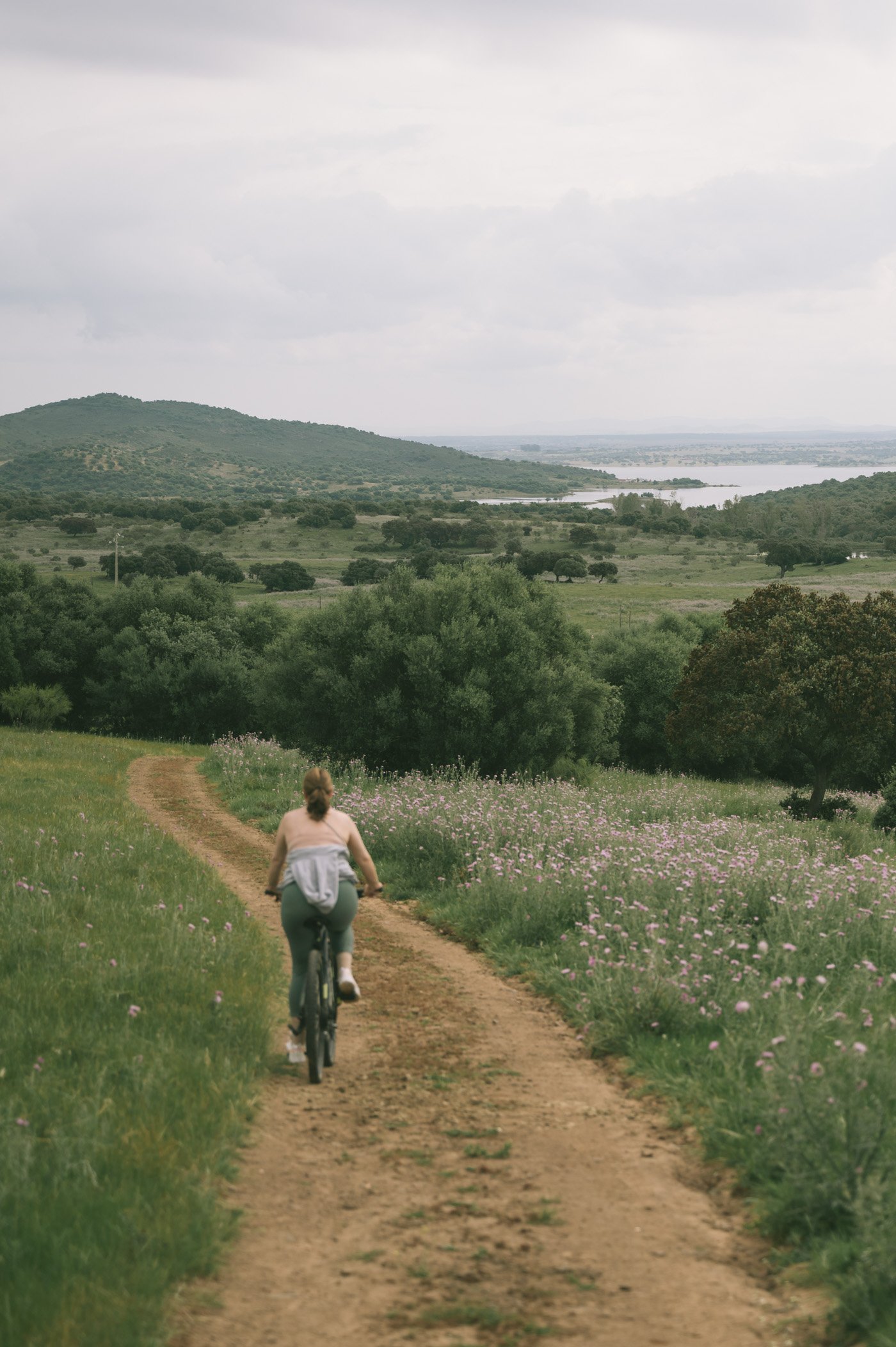
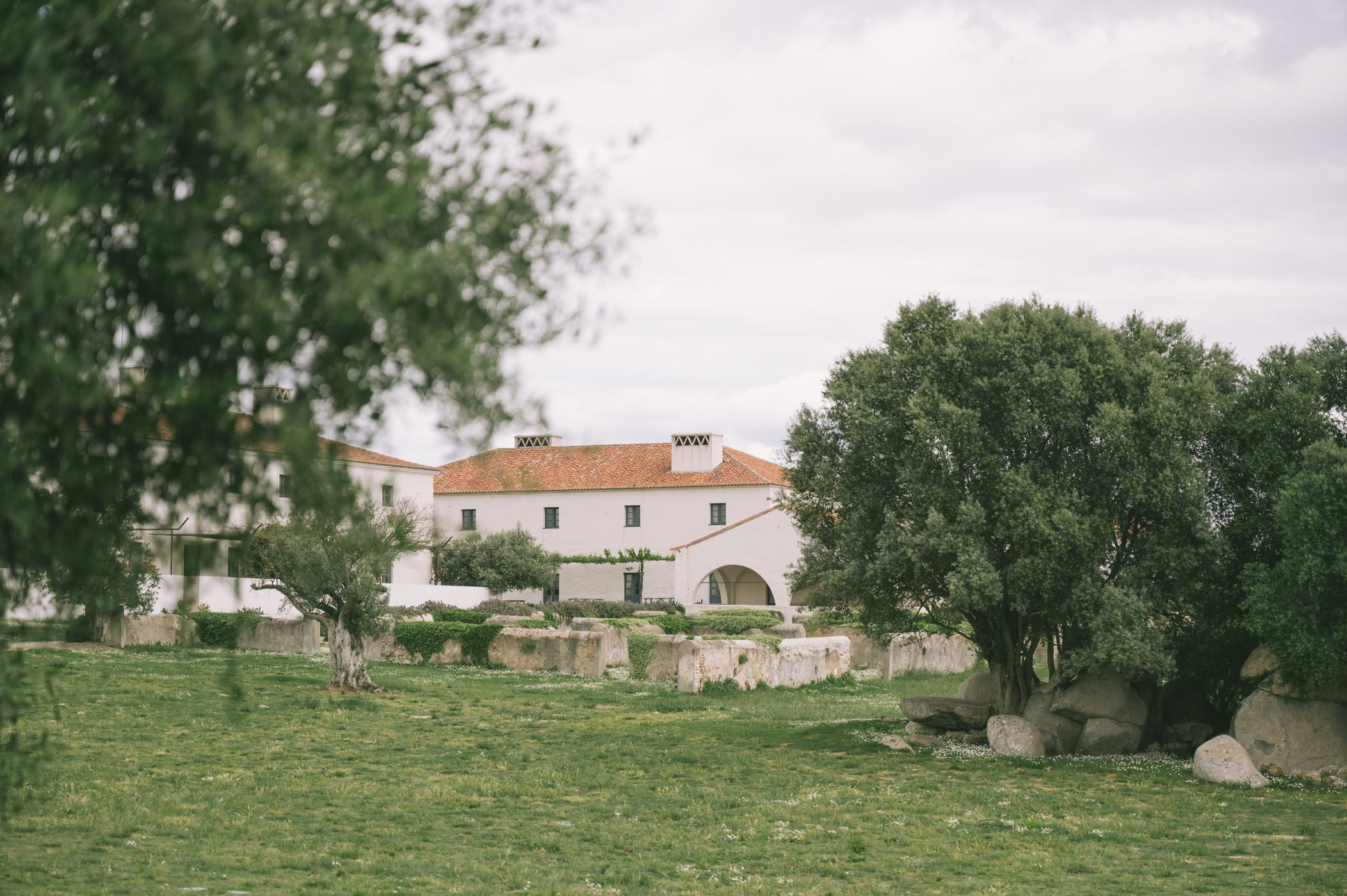 The estate of Horses at São Lourenço do Barrocal is large enough to invite guests to discover it with a local guide on horse or the saddle of a bike.
The estate of Horses at São Lourenço do Barrocal is large enough to invite guests to discover it with a local guide on horse or the saddle of a bike.
While we turn the potter’s wheel with our bare feet and wet our hands to smooth the surfaces of our pieces of clay we get to feel the Alentejo quite literally with our hands. Manuela and her father explain the process of forming the clay in Portuguese and Patricia (a staff member of São Lourenço do Barrocal) translates for us. But there isn’t a lot of talking necessary. In the end we are covered in clay, but proudly examine the pieces we produced together.
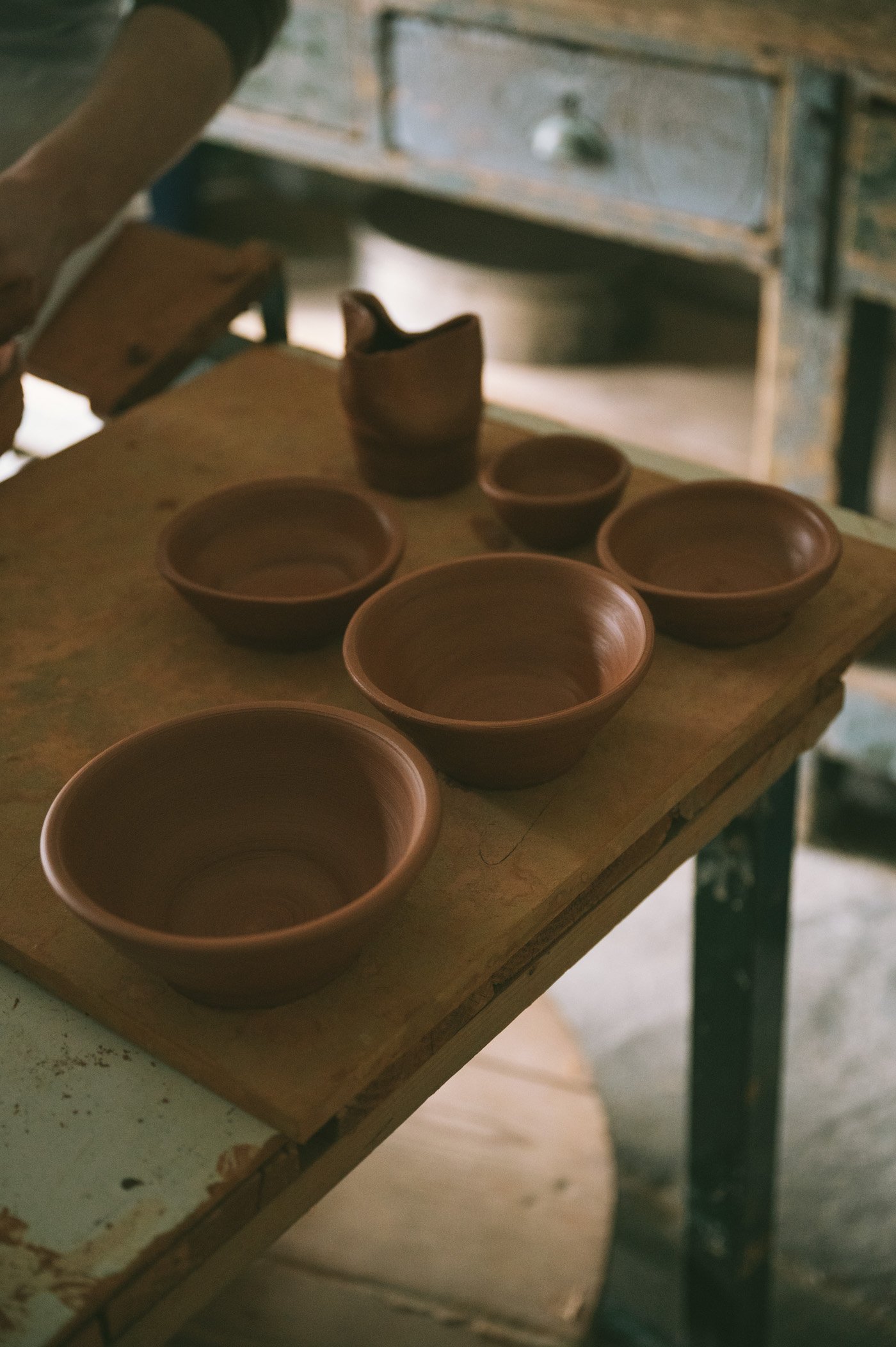
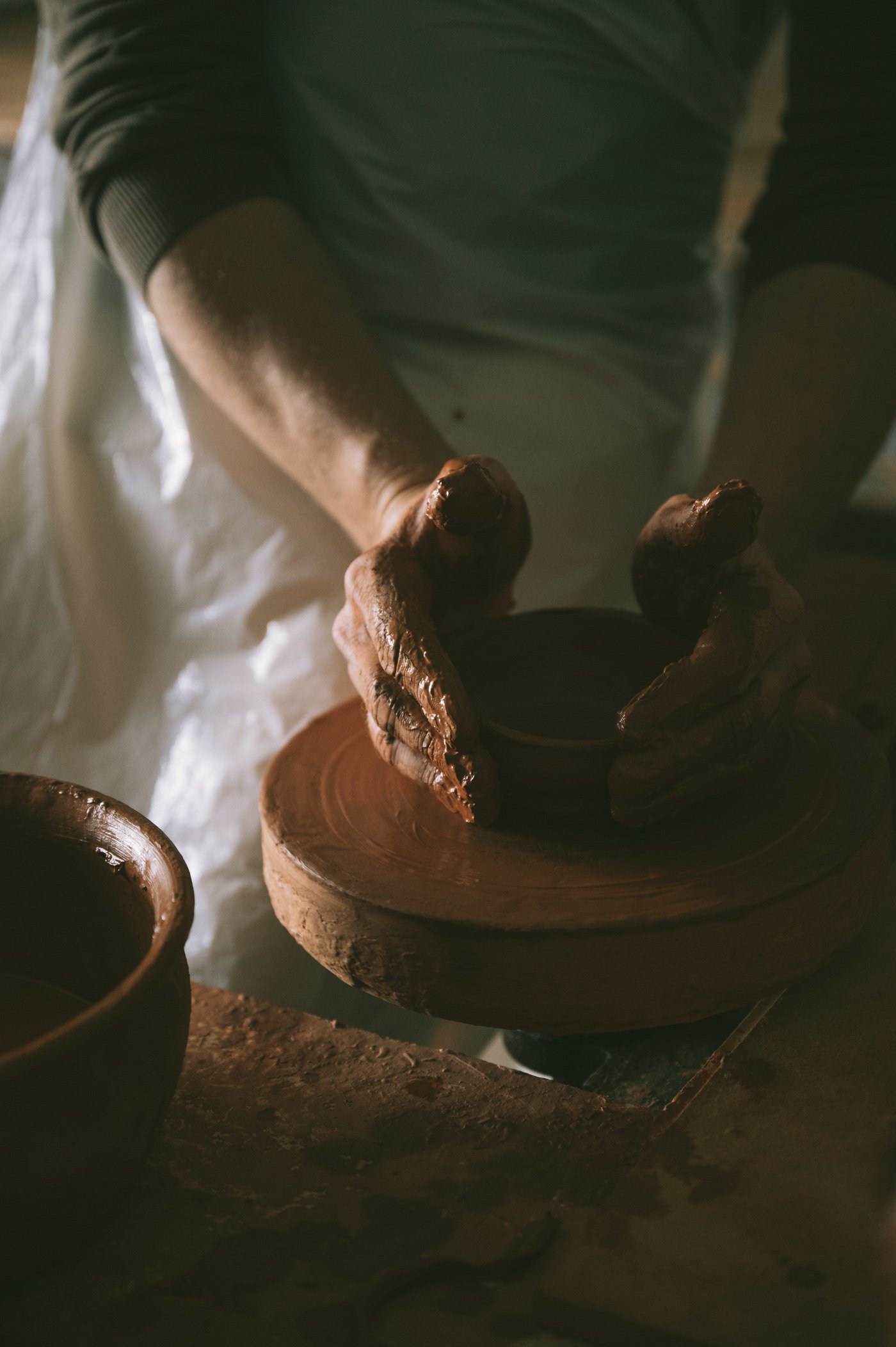
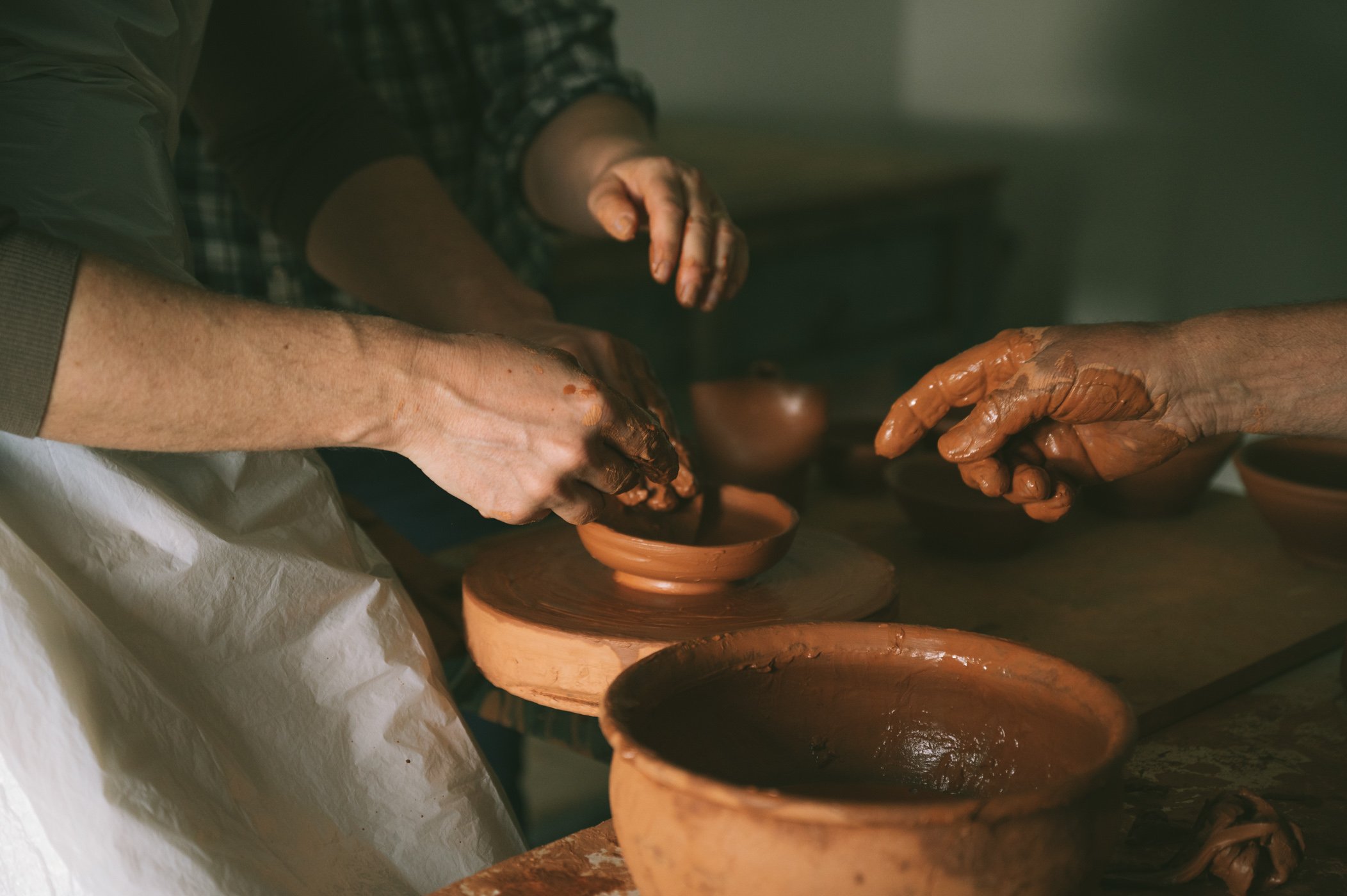 A Pottery workshop at São Lourenço do Barrocal brings us close to the traditions of the region, while also invoking a meditative state of mind.
A Pottery workshop at São Lourenço do Barrocal brings us close to the traditions of the region, while also invoking a meditative state of mind.
The next day we visit Olaria Bulhão to see the workshop (well and buy a few of their wonderful ceramic pieces of course). We decide on the color for our own creations and leave them in the hands of the family to be glazed, burnt and then later shipped to us. Those will be the most cherished souvenirs we ever bought!
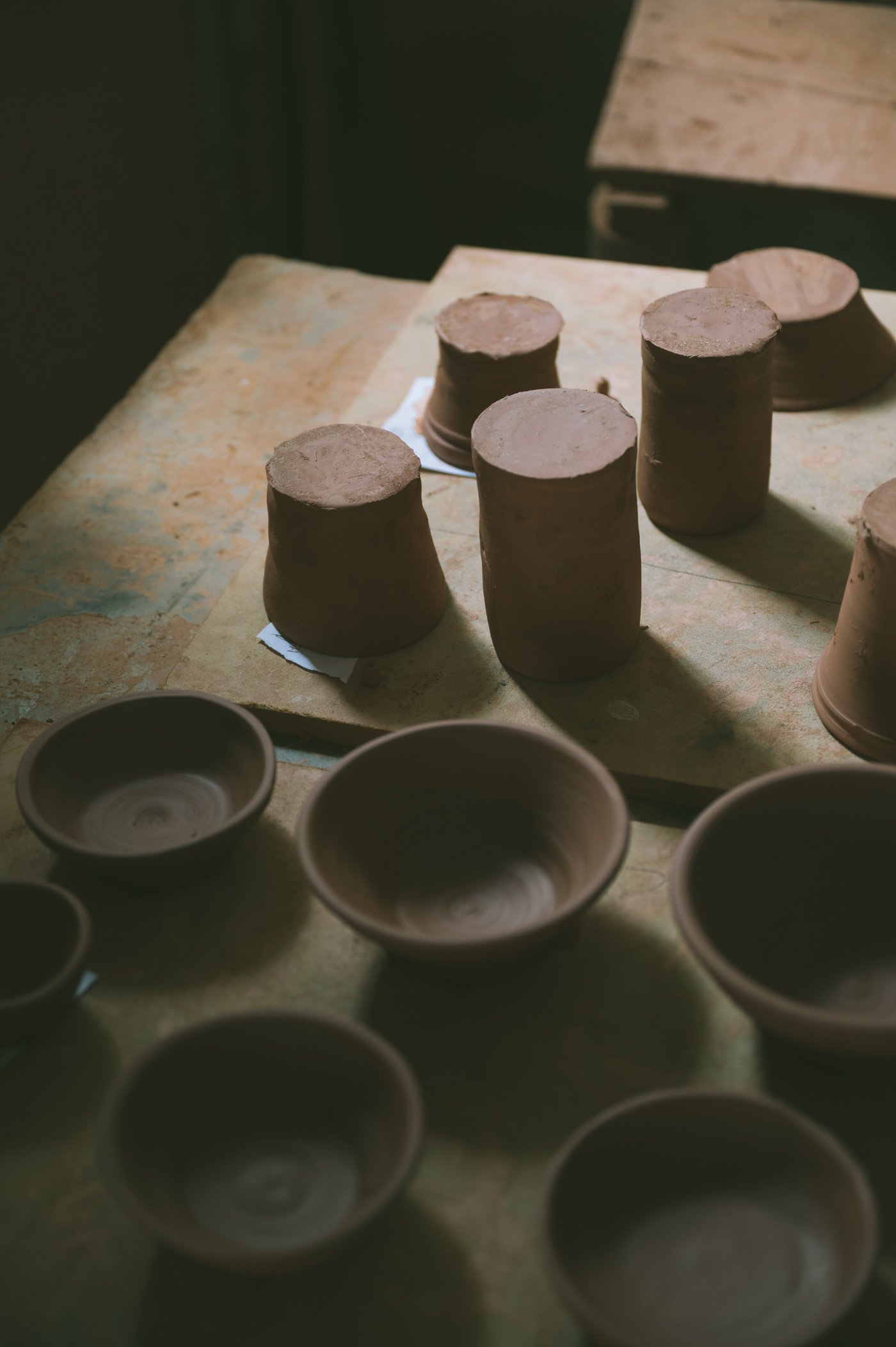
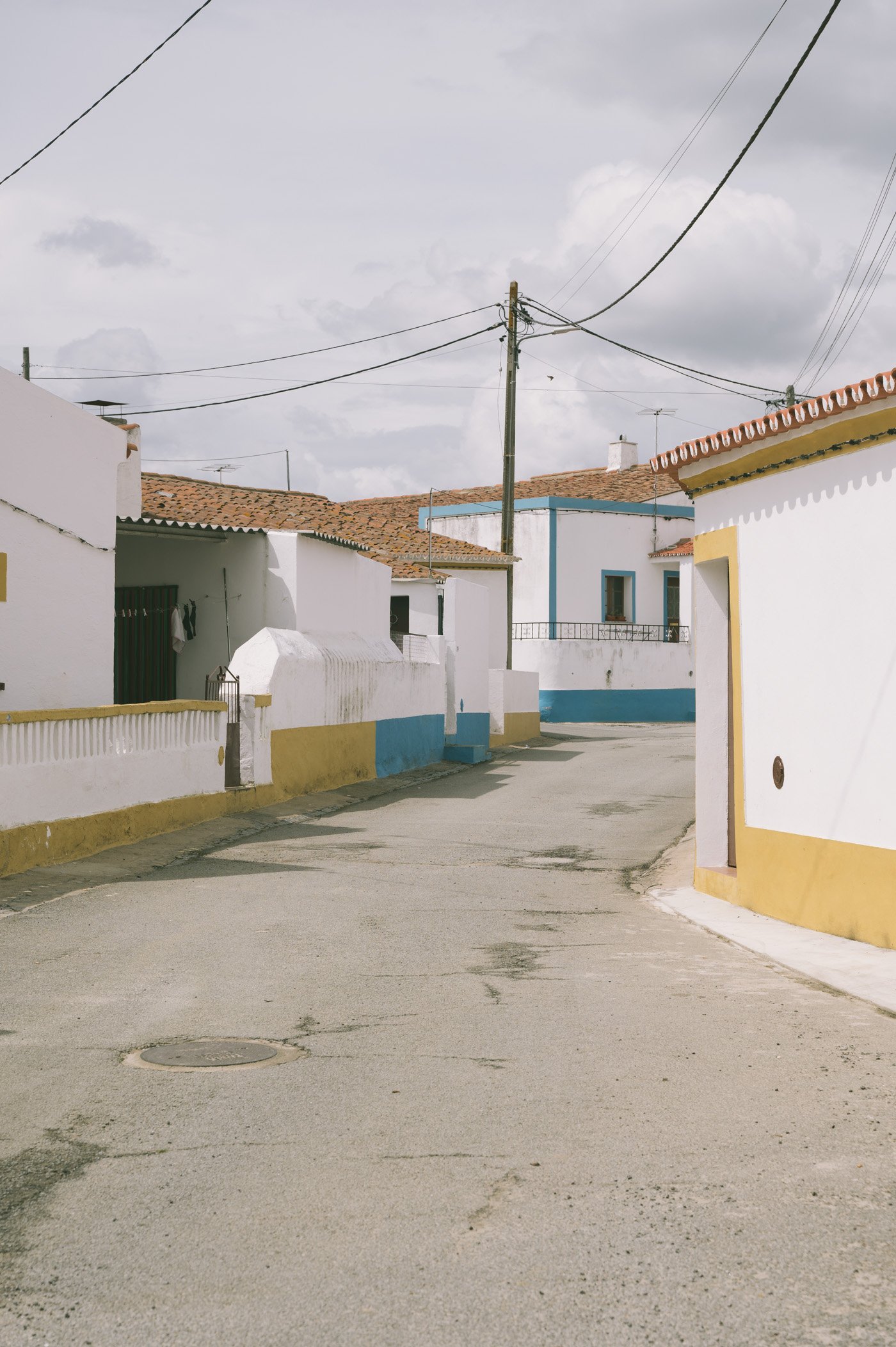
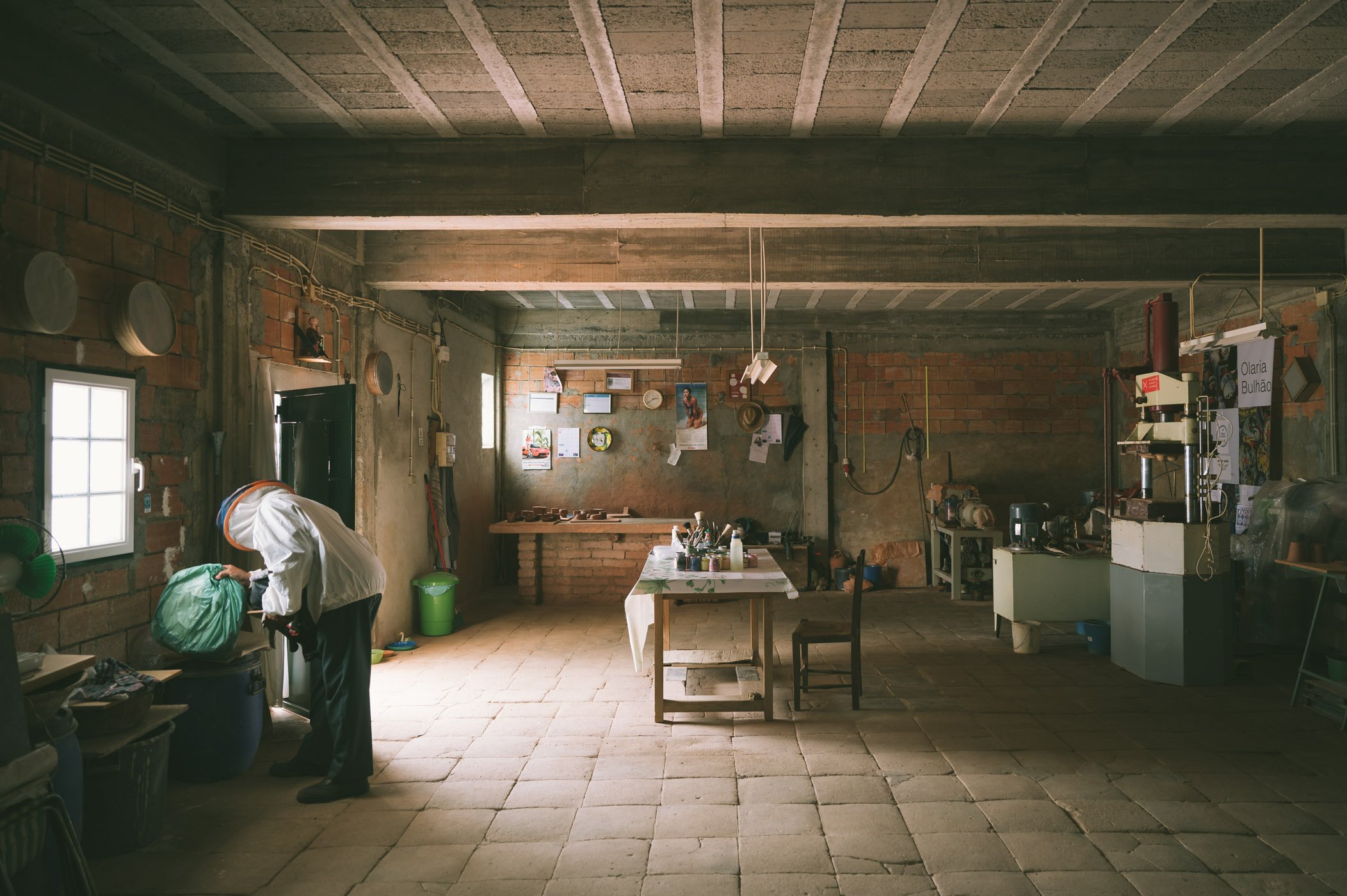 Olaria Bulhão pottery workshop in Alentejo Portugal
Olaria Bulhão pottery workshop in Alentejo Portugal
Olive oil, red wine and lemon zest
Speaking of souvenirs: São Lourenço do Barrocal still keeps true to it’s roots as a farm. The organic gardens are cultivated with great care and they produce their very own extra virgin olive oil and organic wines. The estate’s own shop is boasting with their products and a beautiful selection of handmade local craftsmanship from cork products to ceramics.
After we got to taste their own olive oil and enjoy the craftsmanship & ingenuity of their kitchen (say hello to the best mushroom & lemon zest rice dish we ever ate) we of course have to buy a load of red wine and olive oil for at home. We can’t wait to bring a taste of the Alentejo to Vienna with us!

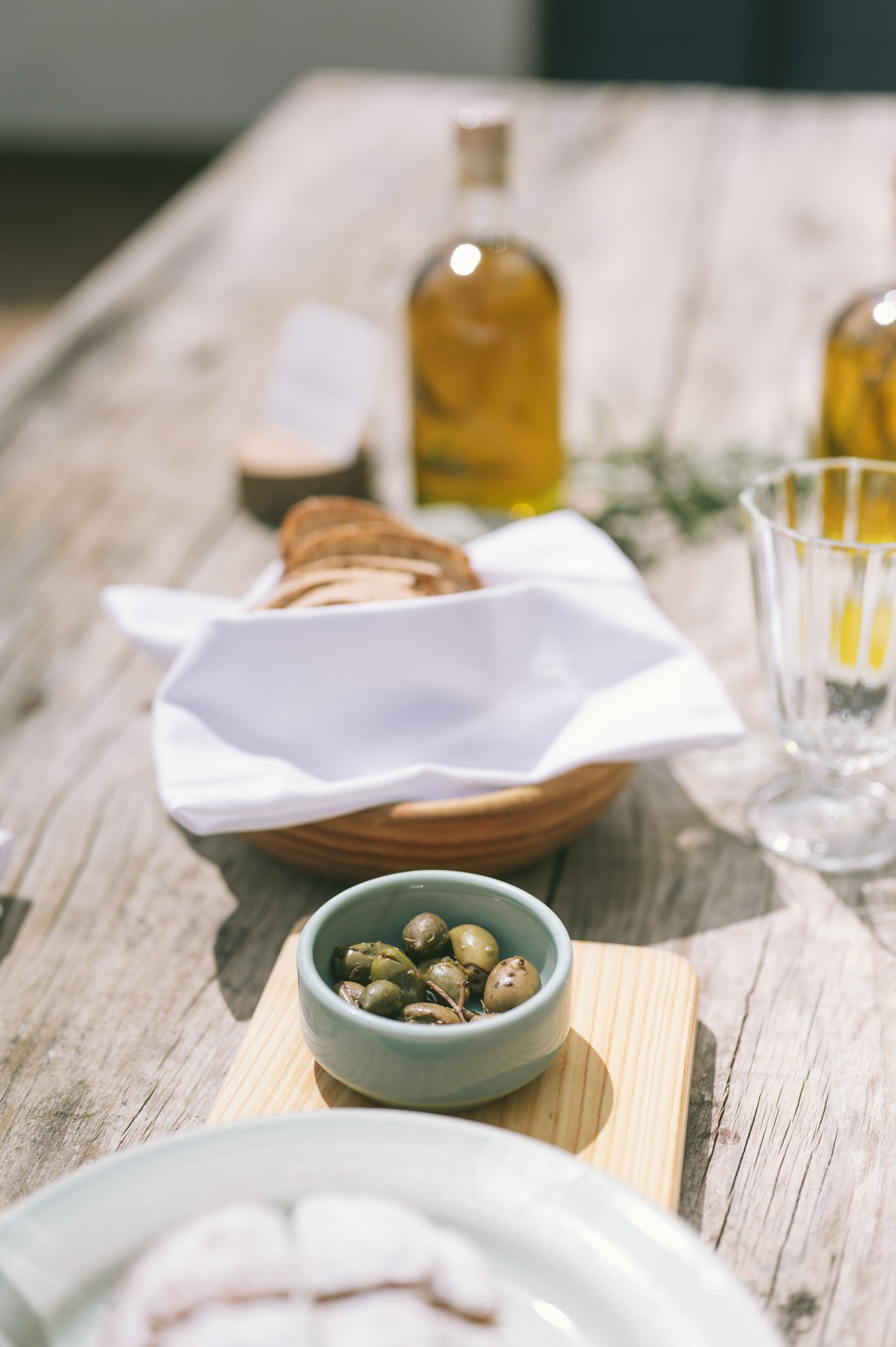
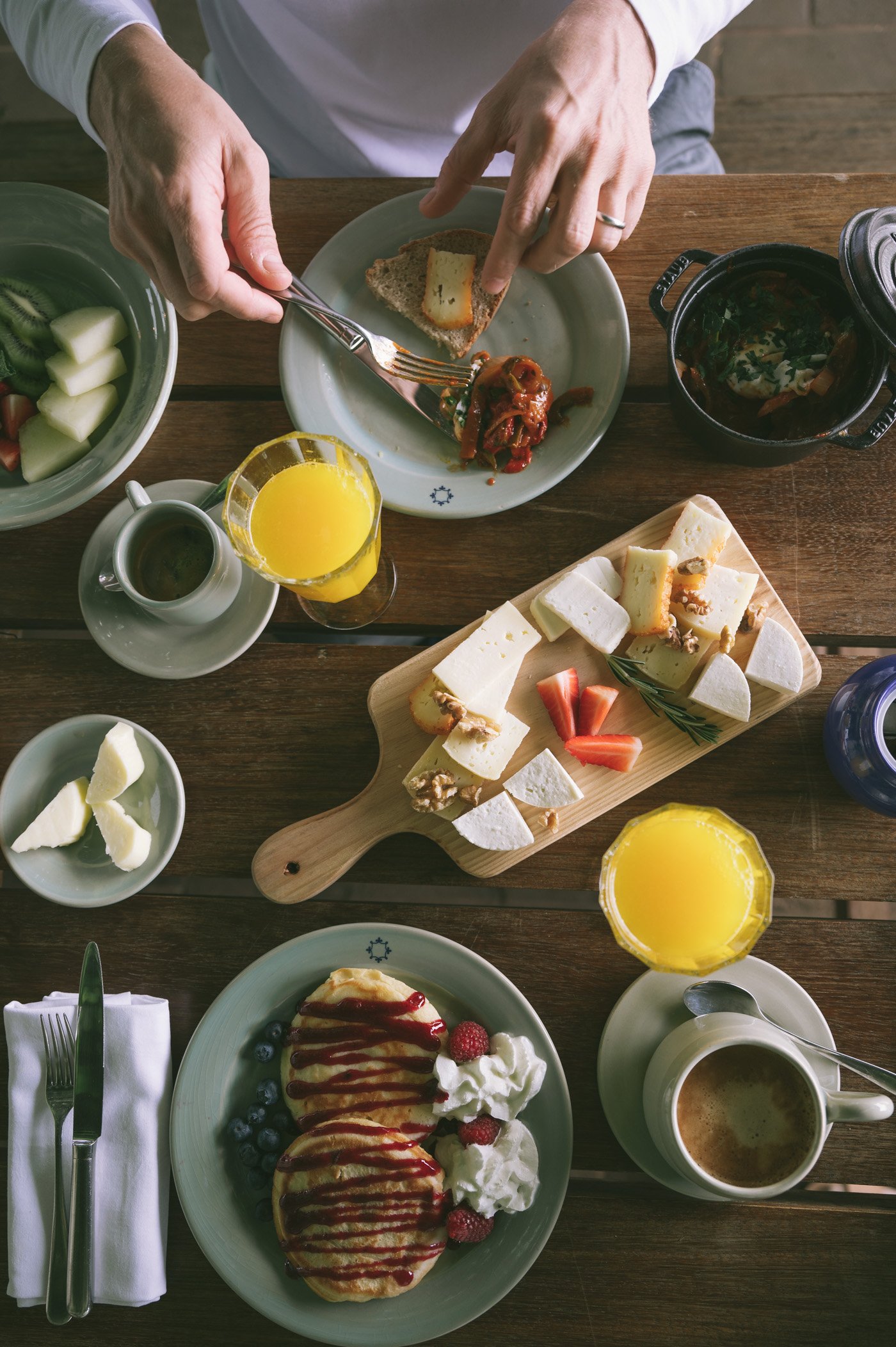

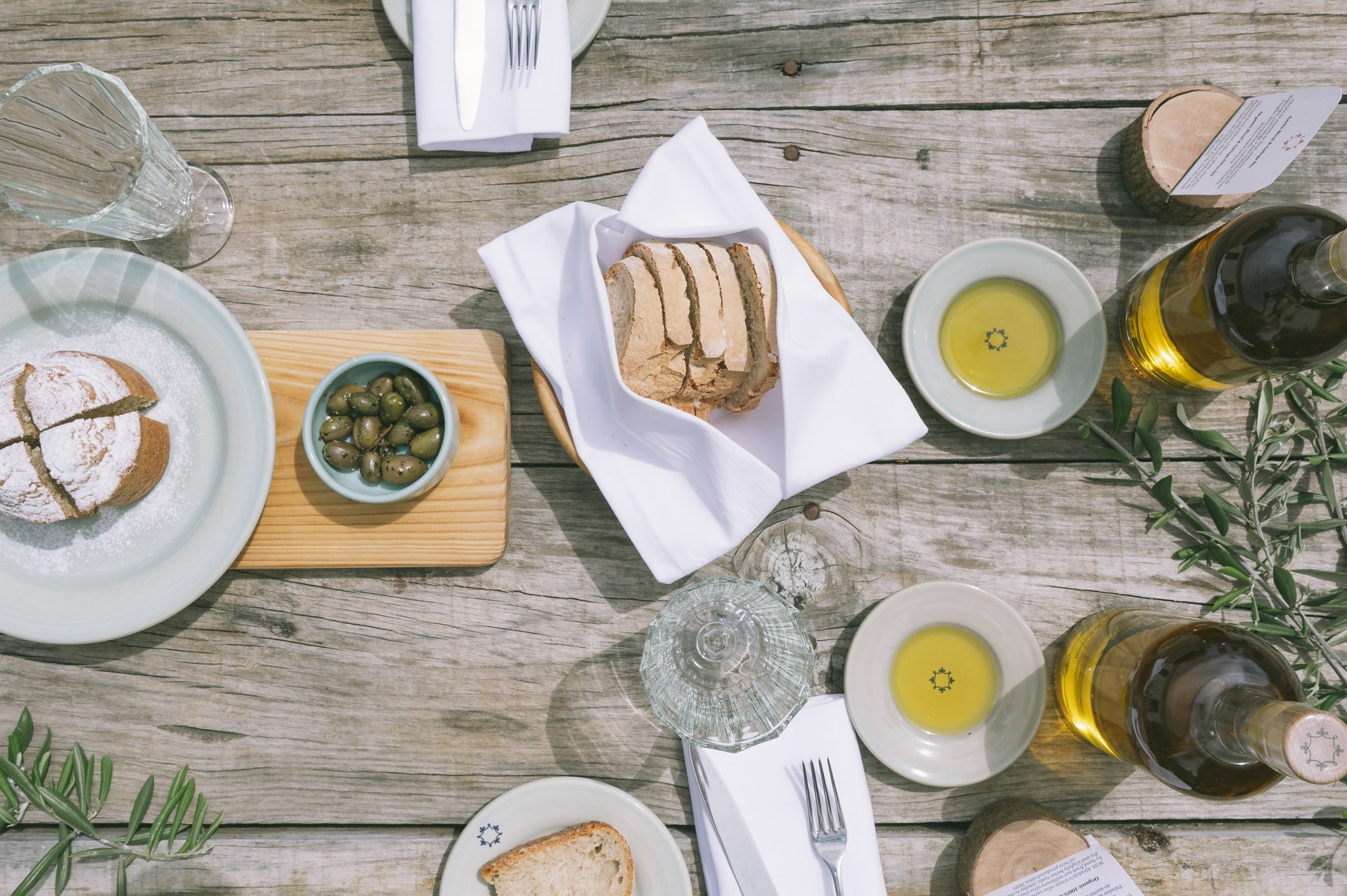 From olive oil tastings to picnics in the vast estate – the culinary expertise is on the highest level at São Lourenço do Barrocal.
From olive oil tastings to picnics in the vast estate – the culinary expertise is on the highest level at São Lourenço do Barrocal.
Our room at São Lourenço do Barrocal farmstay retreat
After all the raving about the food and experiences let us show you the real retreat at São Lourenço do Barrocal: The rooms! All the guest rooms are located inside the original buildings of the farm and have been carefully transformed by Pritzker-price winning architect Eduardo Souto de Moura. There’s something about the atmosphere of the warm stone floors and the simple pieces of furniture, that makes one immediately feel at home here.
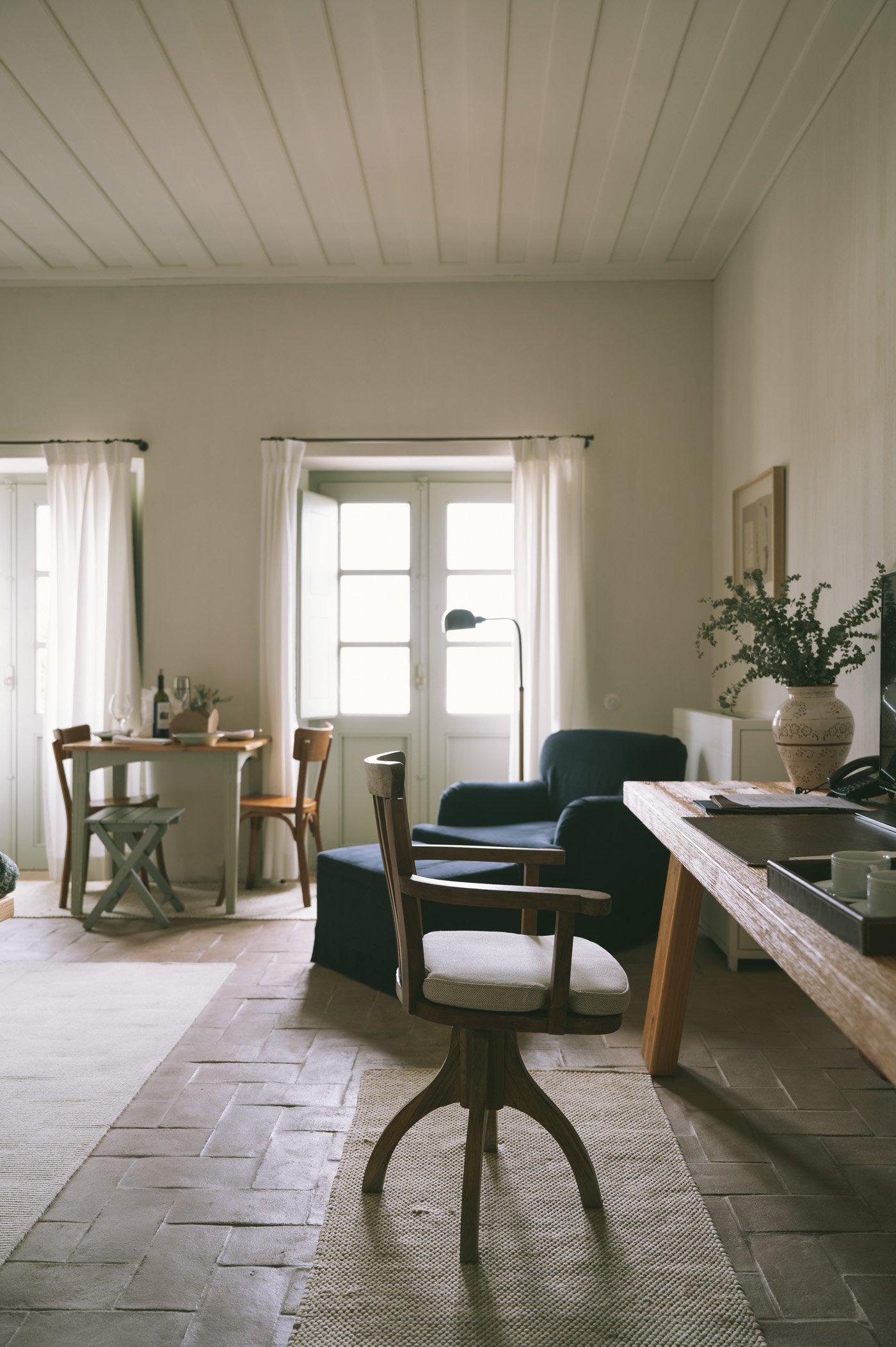
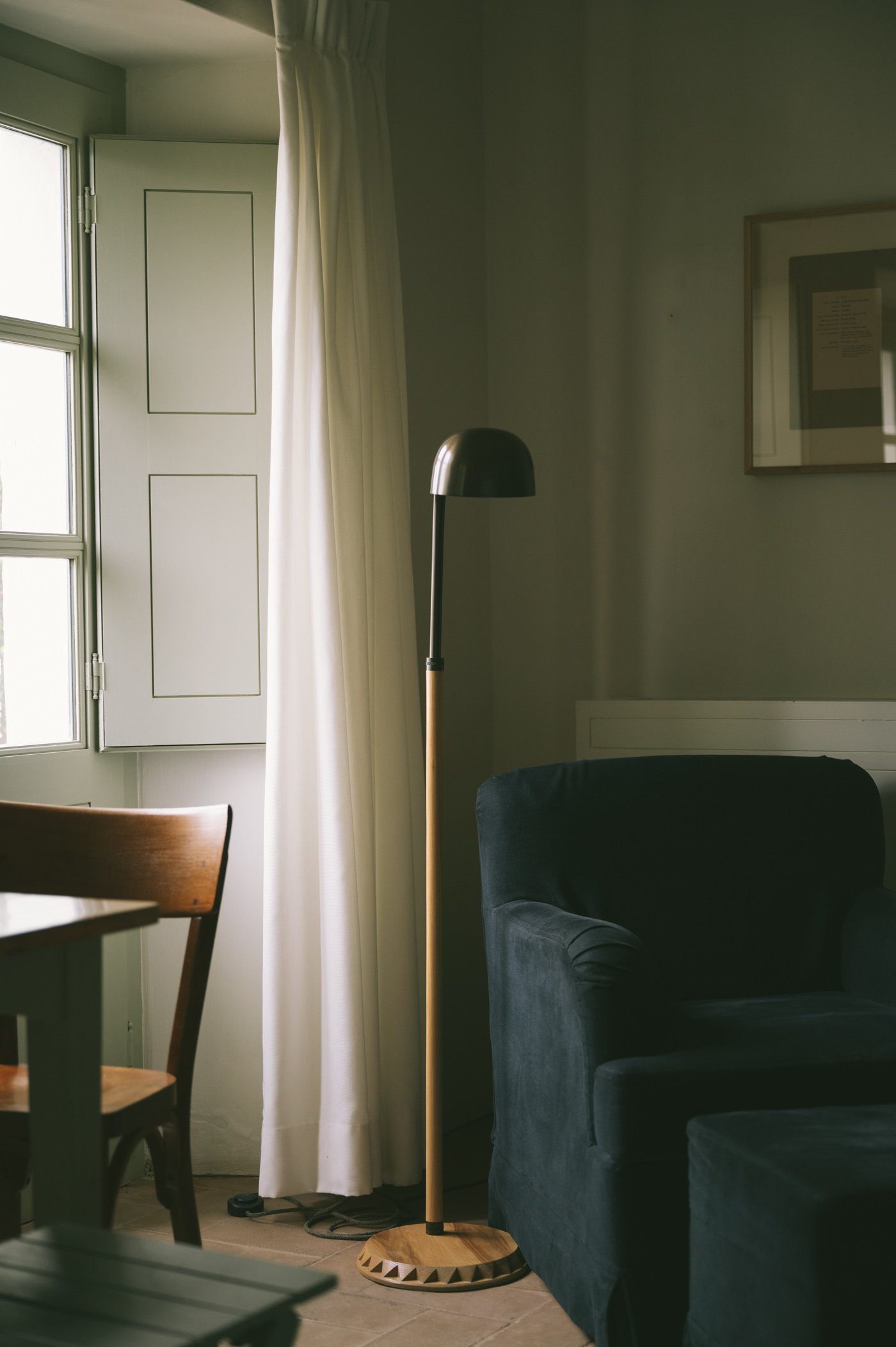
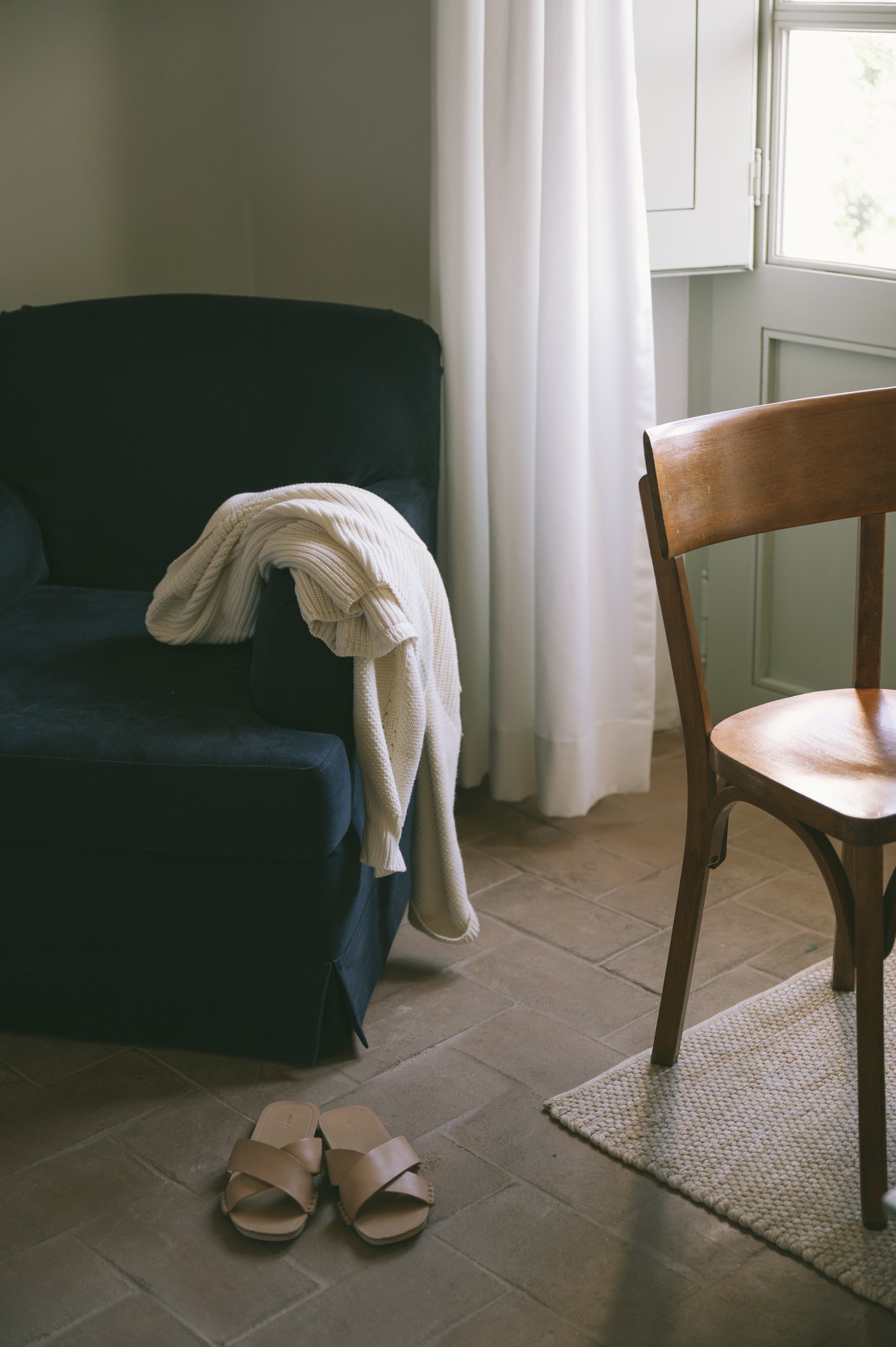
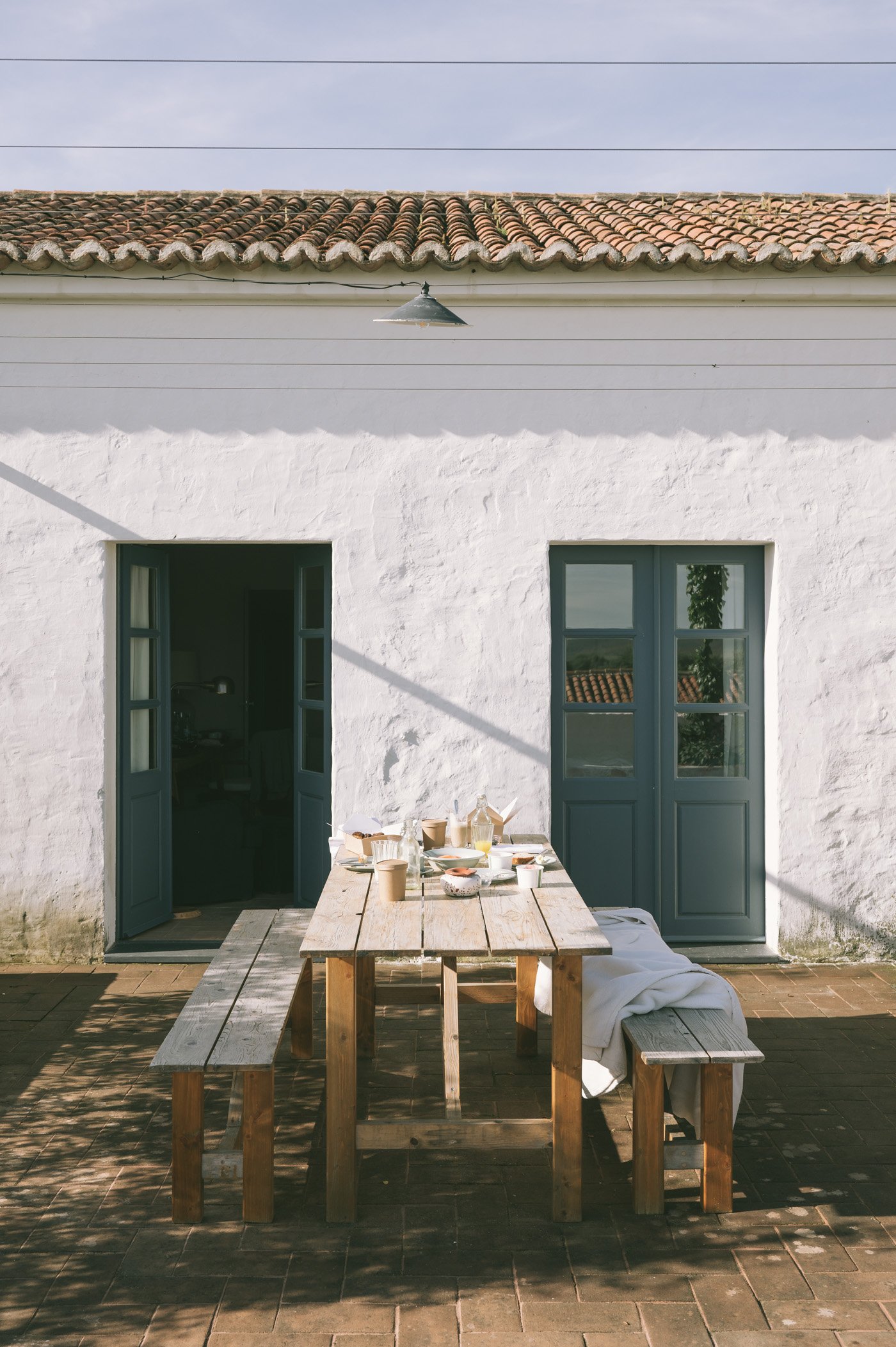
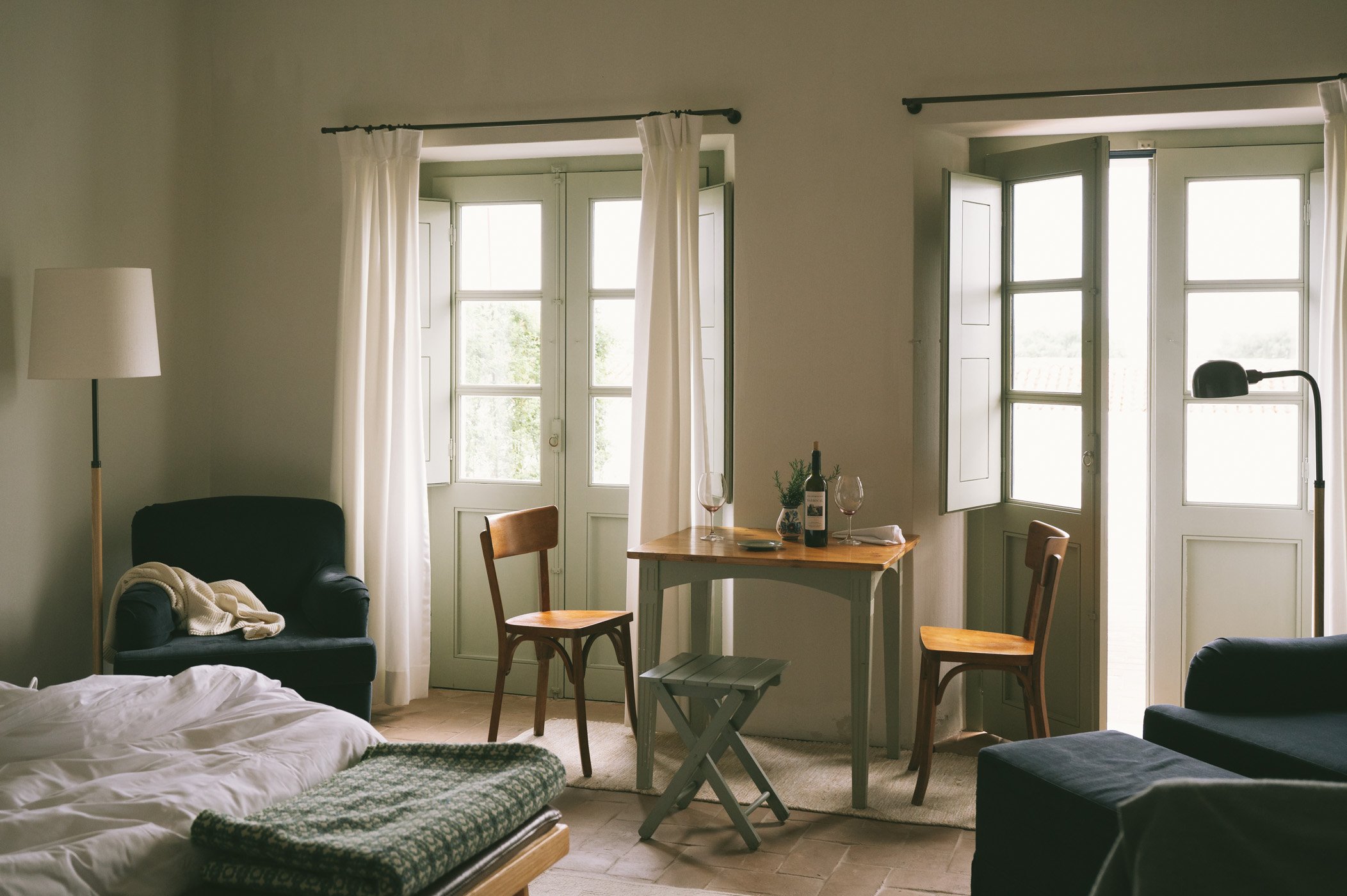 Our room at São Lourenço do Barrocal
Our room at São Lourenço do Barrocal
Outside of the estate: Monsaraz & the towns of Alentejo
And what if you want to leave the estate for day or two to explore the surroundings? You can visit the white-washed villages of Monsaraz and Évora or venture out to go boating on the largest man-made lake in Europe – Lago Alqueva. Or simply take some of the bikes that São Lourenço do Barrocal provides and head out on the estate.
The bonus of a visit in April: you’ll have most of the villages to yourself! The downside being that not all of the shops and restaurants are open outside the main holiday season.
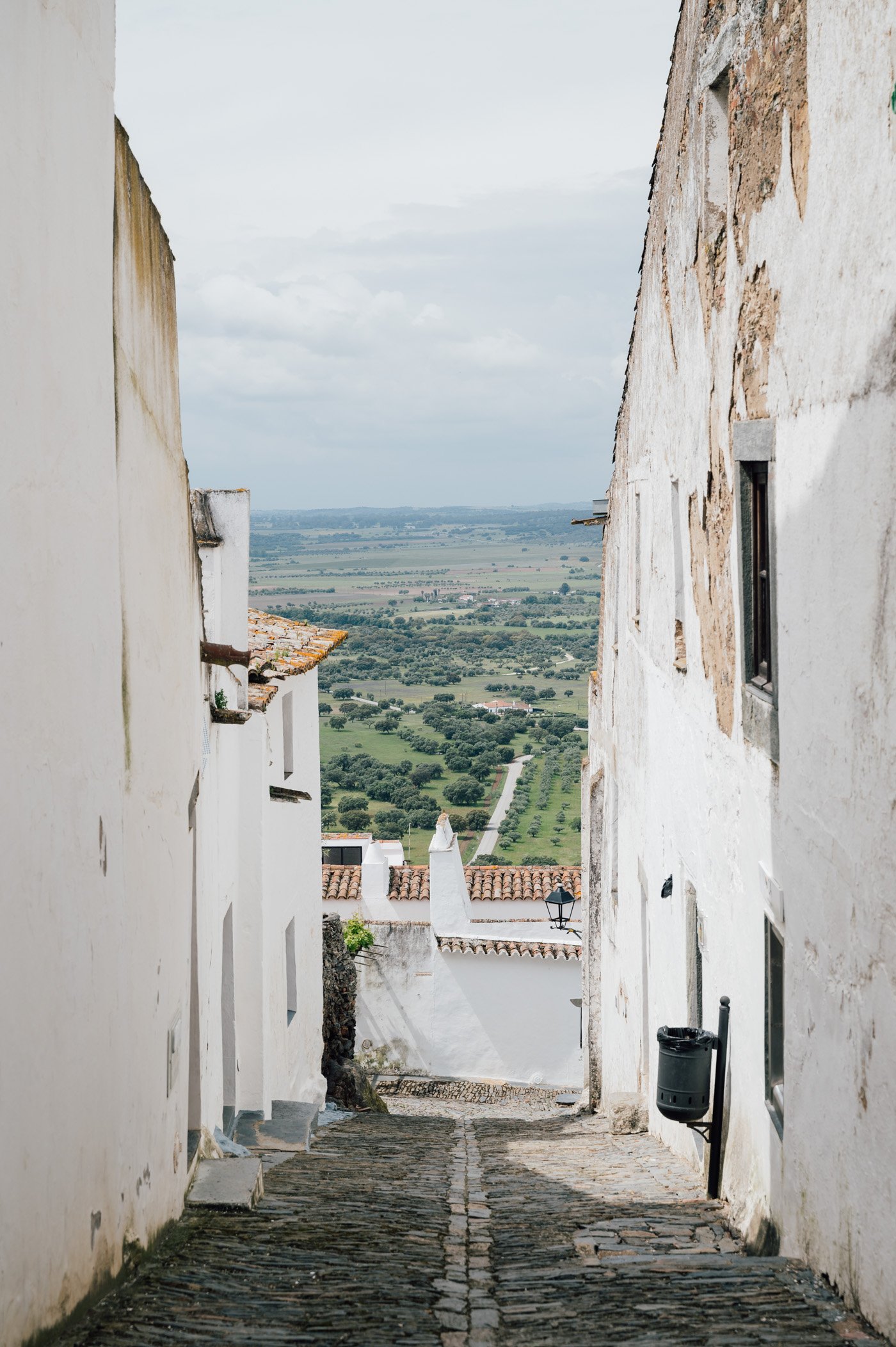
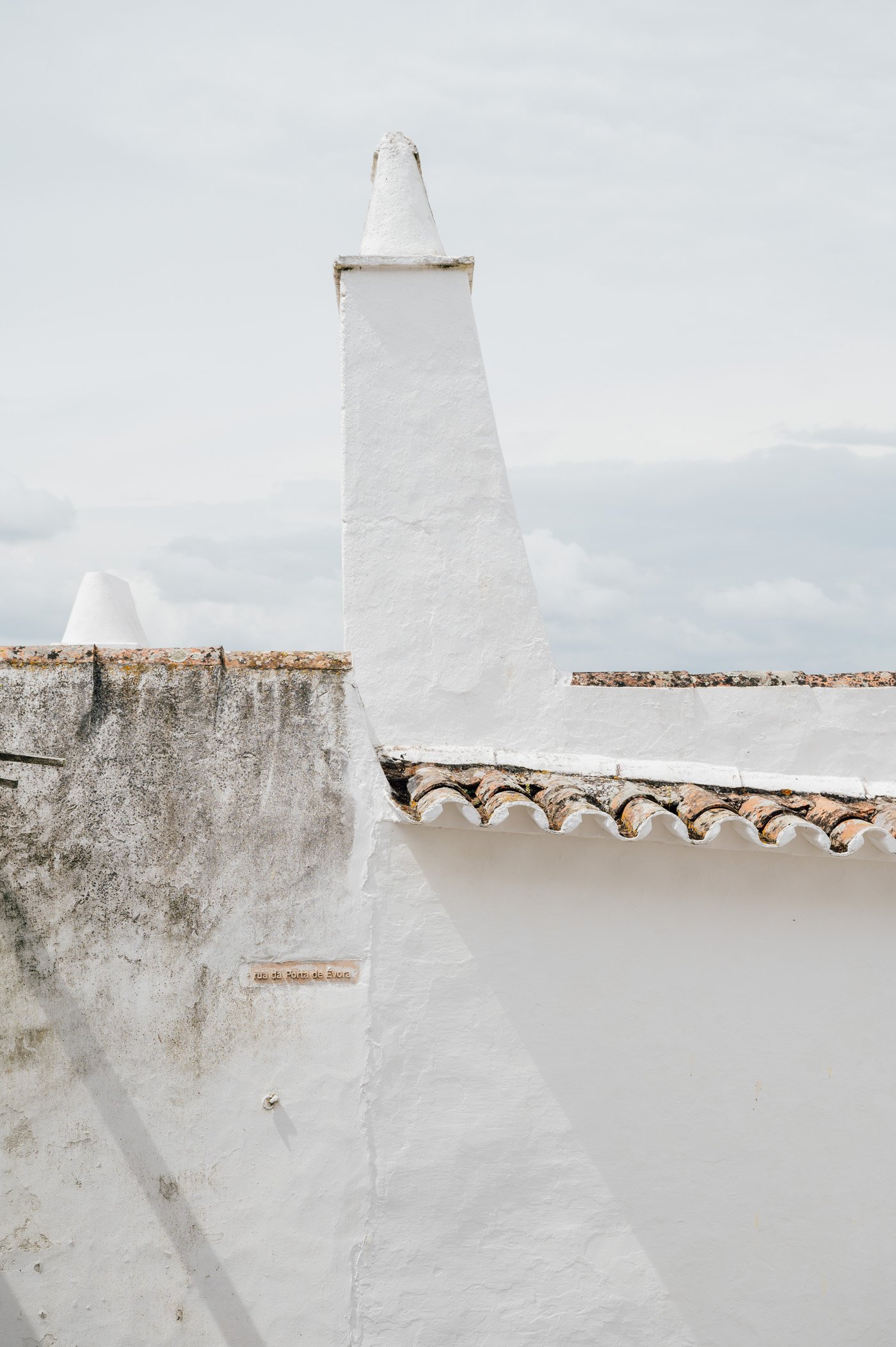
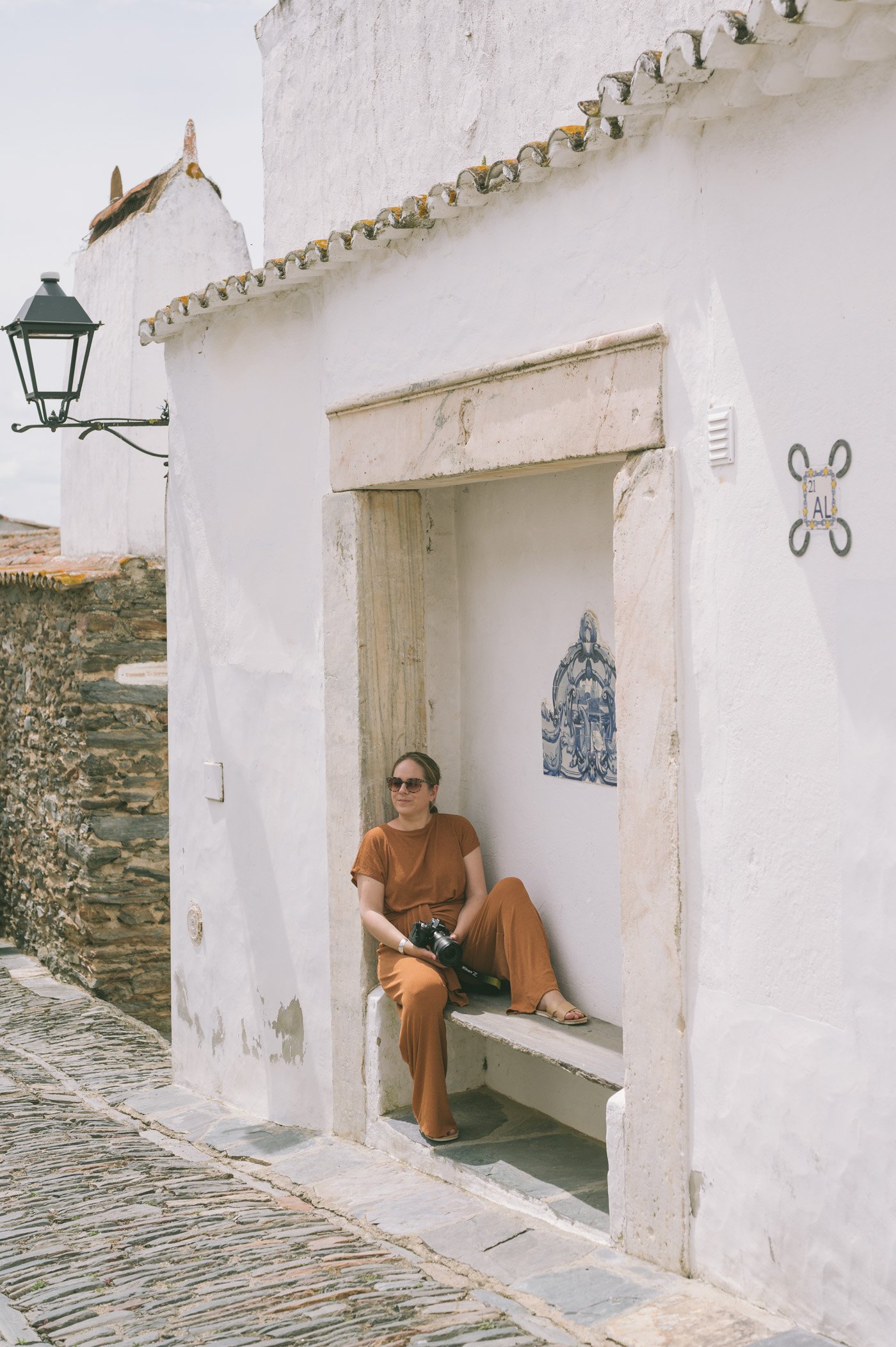
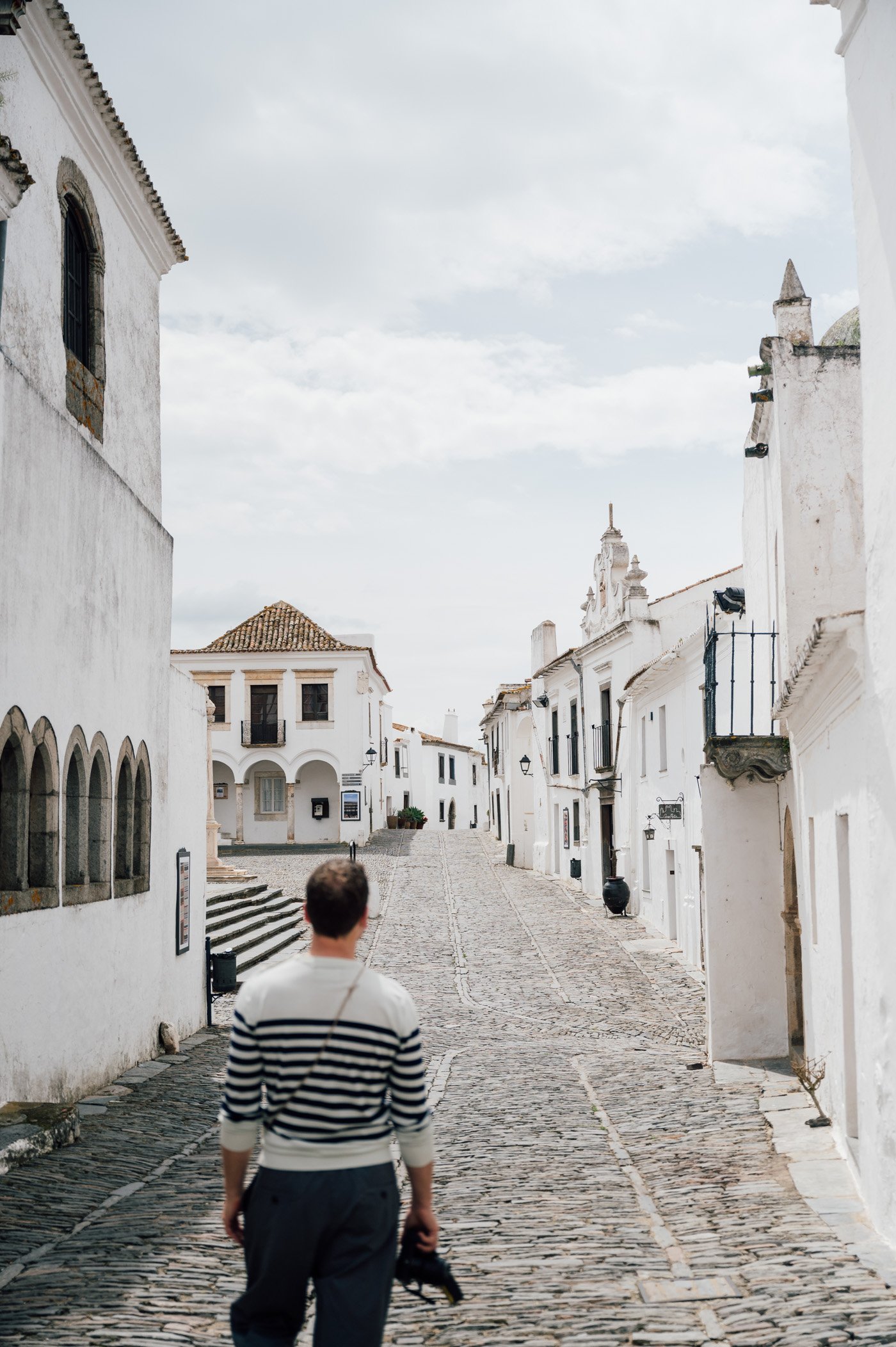
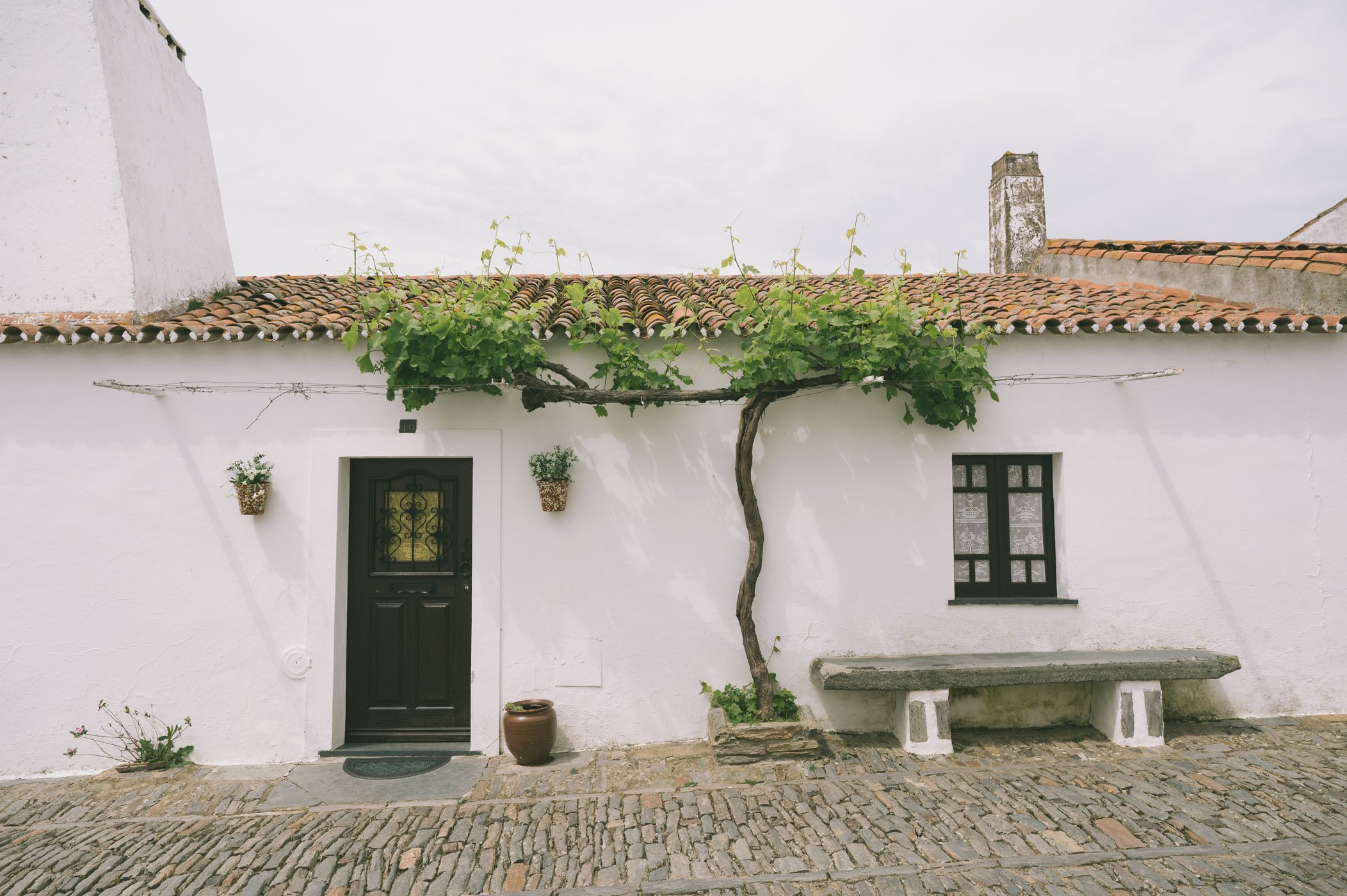 The whitewashed village of Monsaraz is perfect to discover some of the region.
The whitewashed village of Monsaraz is perfect to discover some of the region.
The bottom line: São Lourenço do Barrocal lends itself for an extended stay to really appreciate the slow life of Alentejo and experience all it has to offer.
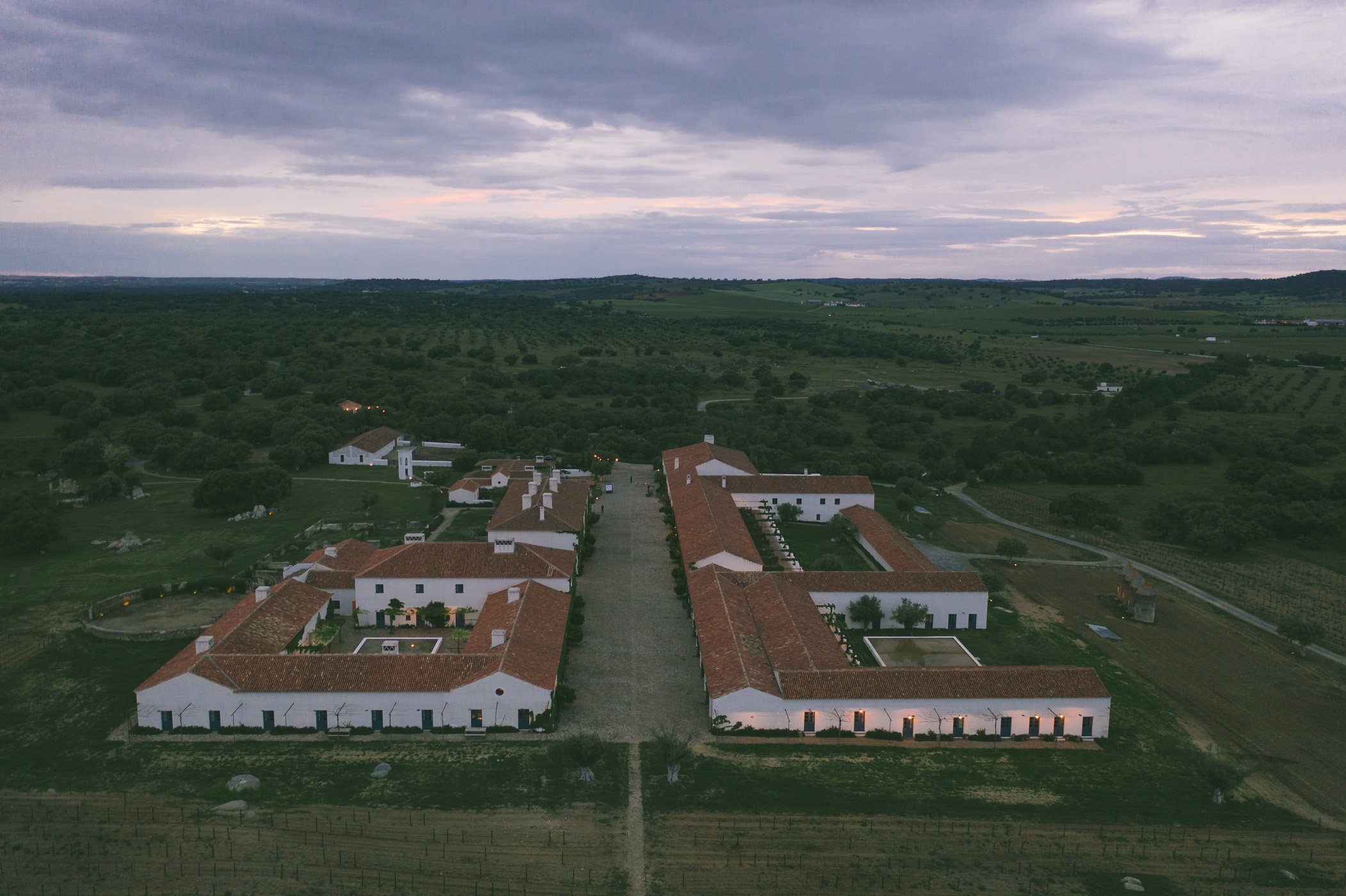 The estate of São Lourenço do Barrocal as seen from above.
The estate of São Lourenço do Barrocal as seen from above.
Comporta: The trendiest beaches of Portugal
Our second stop brings us to the West Coast of the Alentejo region. Just 1 hour South from Lisbon lies Comporta, a region that has come to fame over the last few decades. It’s the 60 kilometres of fine sandy beaches that extend into the back country with rice fields and pine forests that attract visitors since then, but the influx of outstanding architecture and design is what now defines Comporta.
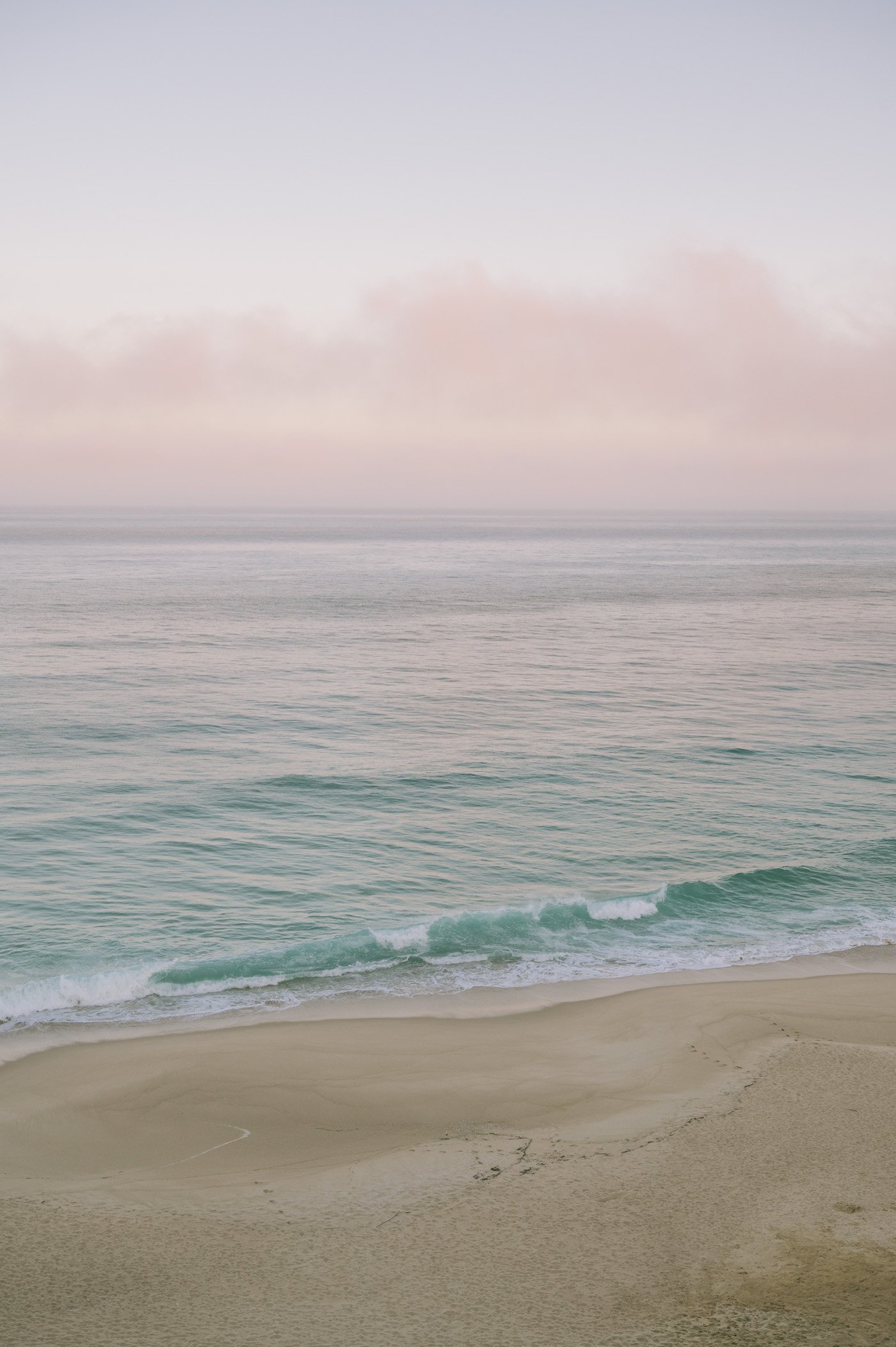
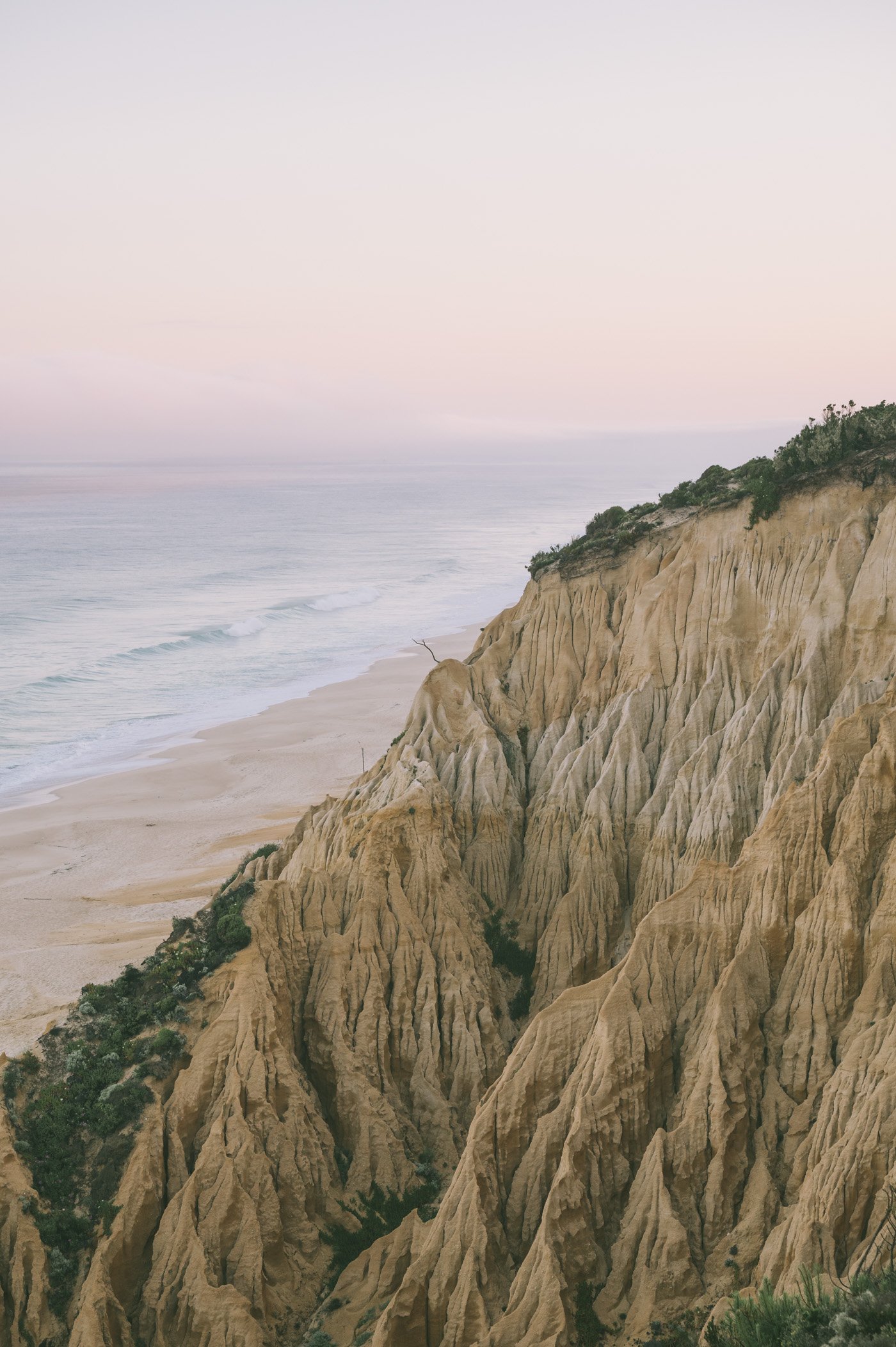
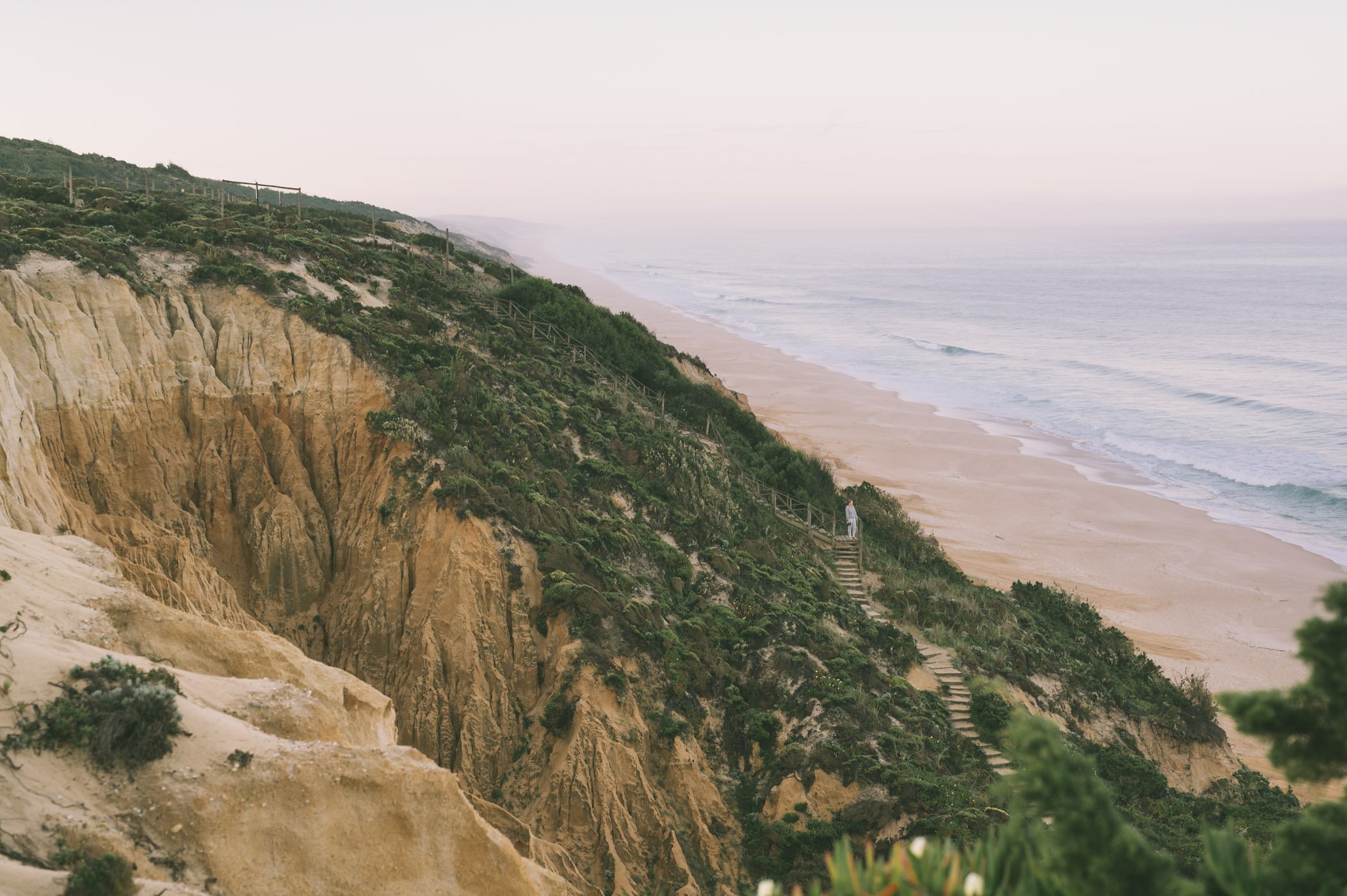 Praia da Galé – Fontainhas – is located South of Comporta along the Atlantic coast of Portugal’s Alentejo region.
Praia da Galé – Fontainhas – is located South of Comporta along the Atlantic coast of Portugal’s Alentejo region.
Wealthy Lisbon residents built modern vacation homes in Comporta and over the years more and more guests started flocking to the region. Comporta itself is a rather sleepy village in April – we don’t know what it’s like in the busier summer months, but quite enjoyed the calm before the storm. This relaxed atmosphere is also what makes the charm of the Alentejo region. It’s not flashy and also it hasn’t been spoiled by cheap touristy infrastructure.
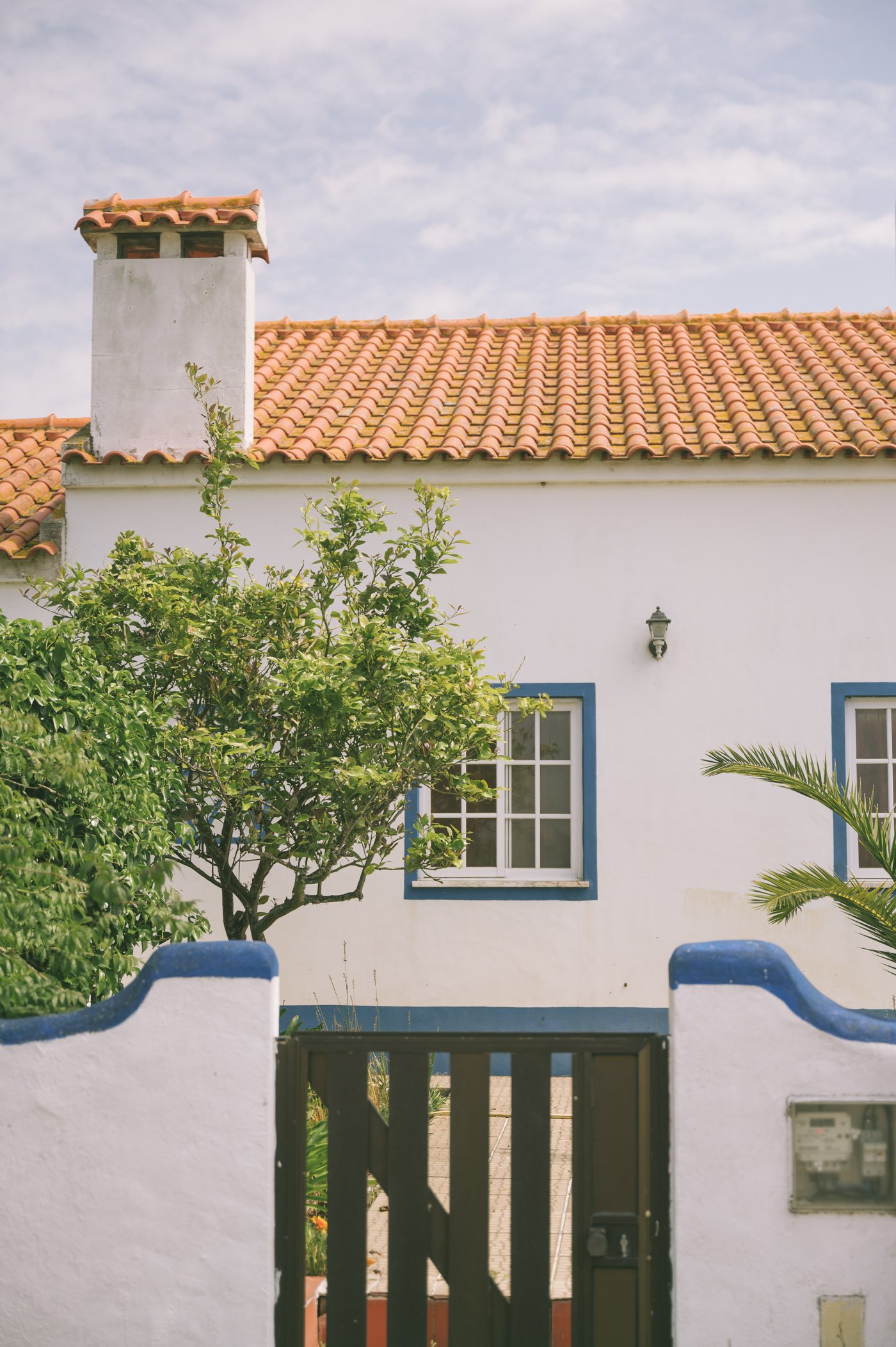
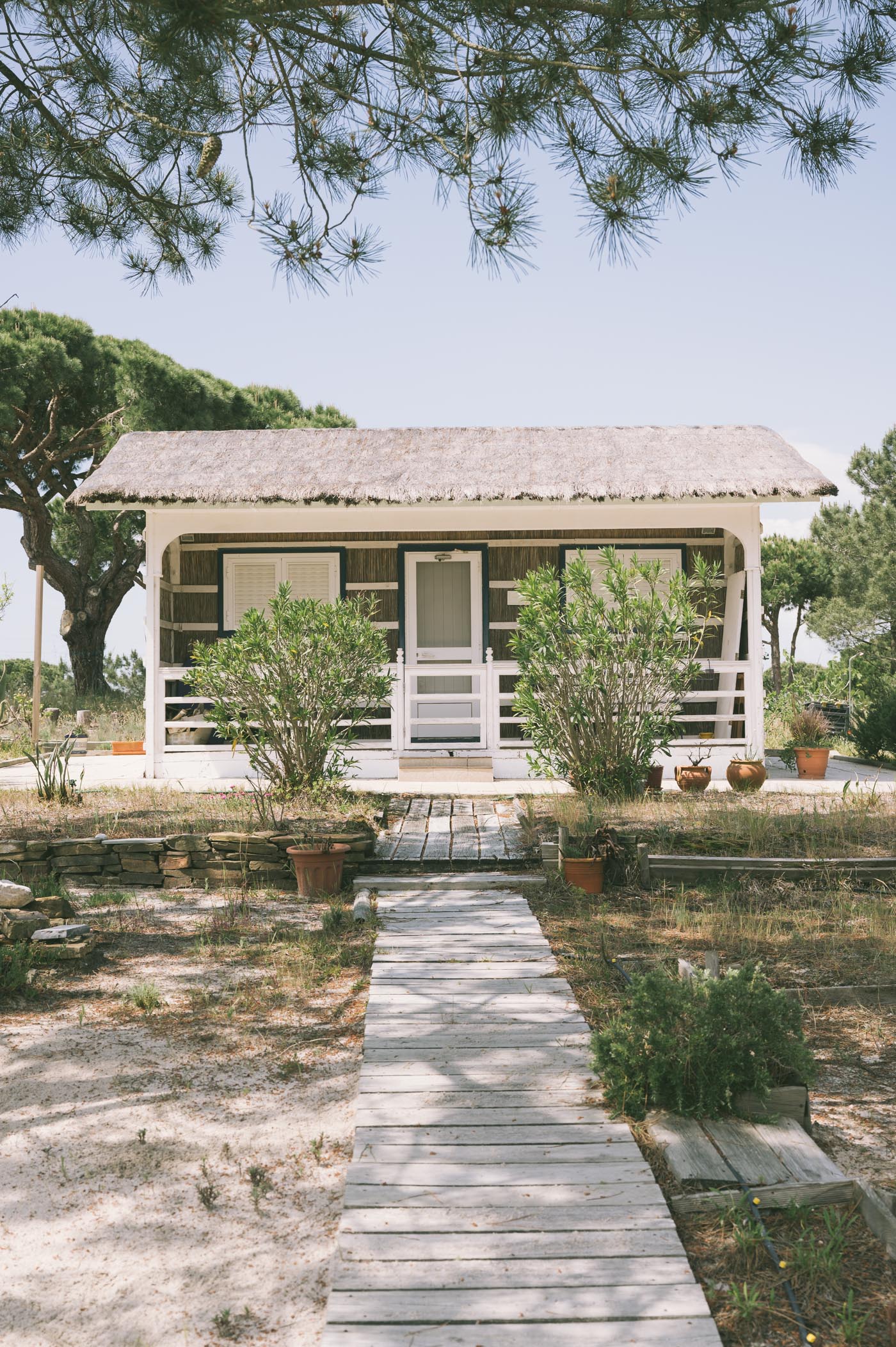
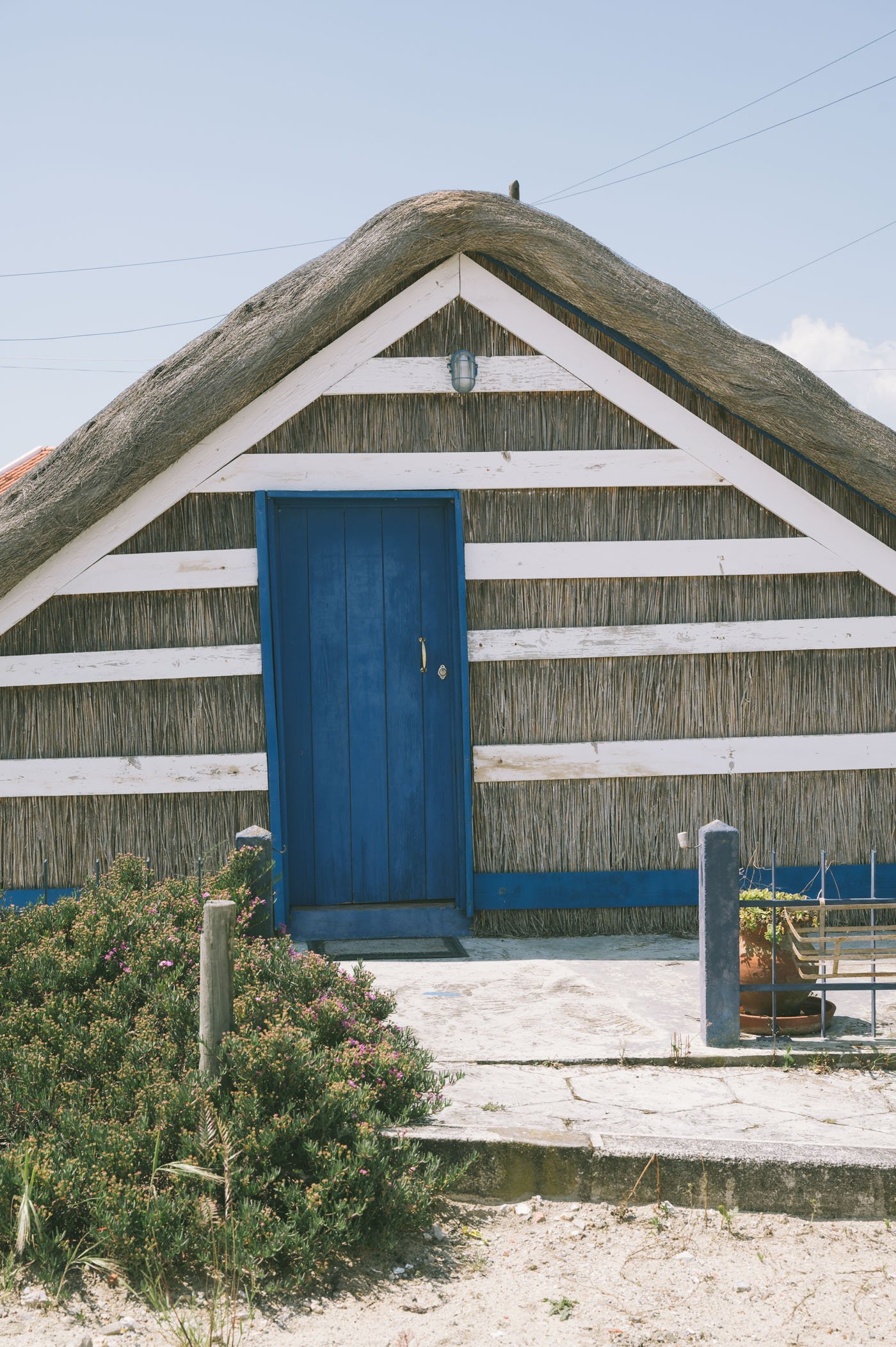
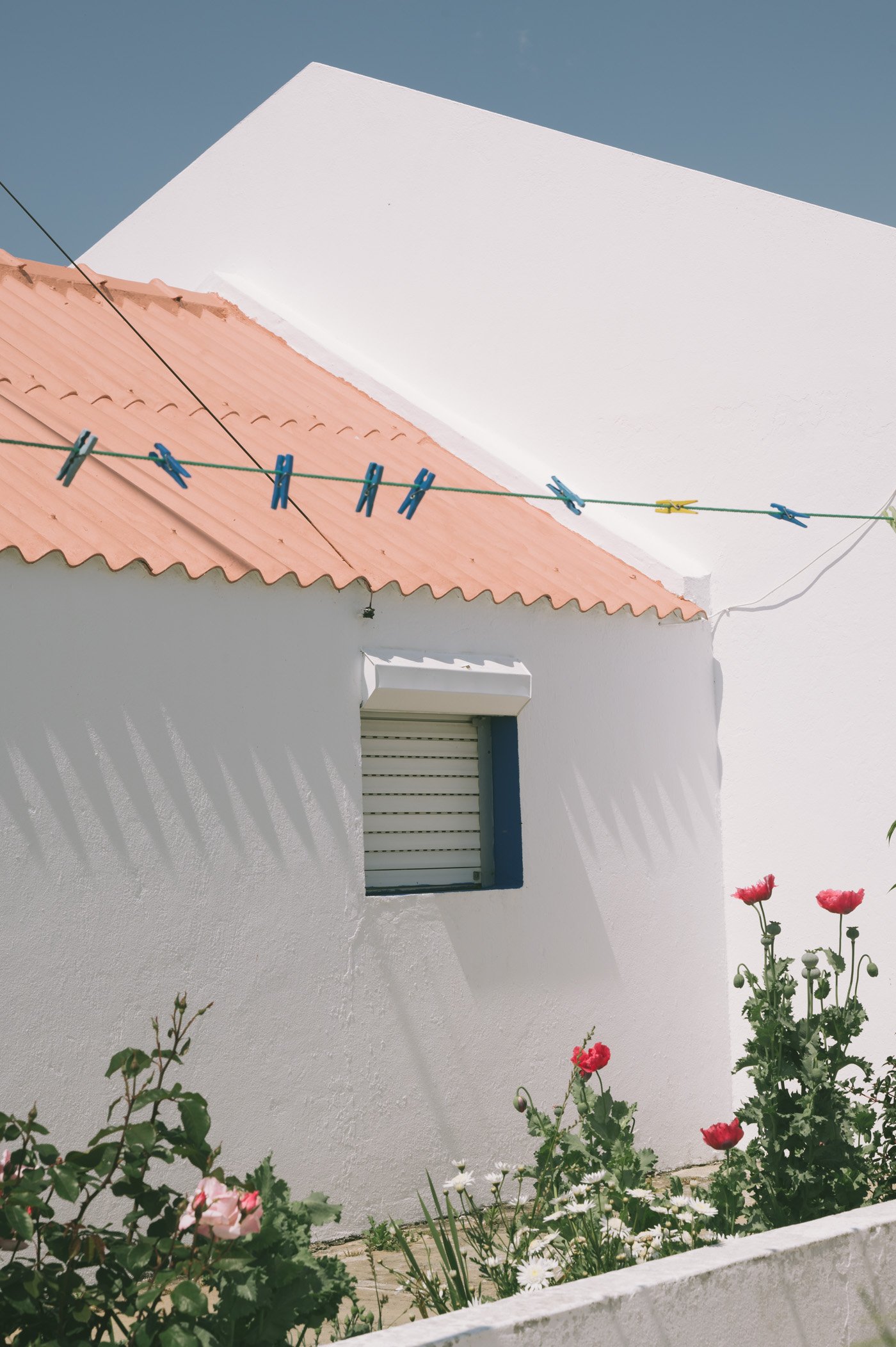
 The region around Comporta has kept much of it’s original charm.
The region around Comporta has kept much of it’s original charm.
The beaches here are hidden behind a ridge of pine-covered sand dunes and eroded cliffs. Therefore hotels aren’t positioned in prime beachfront locations and much of the beaches is still rather unspoiled – with the occasional beach bar and restaurant on offer.
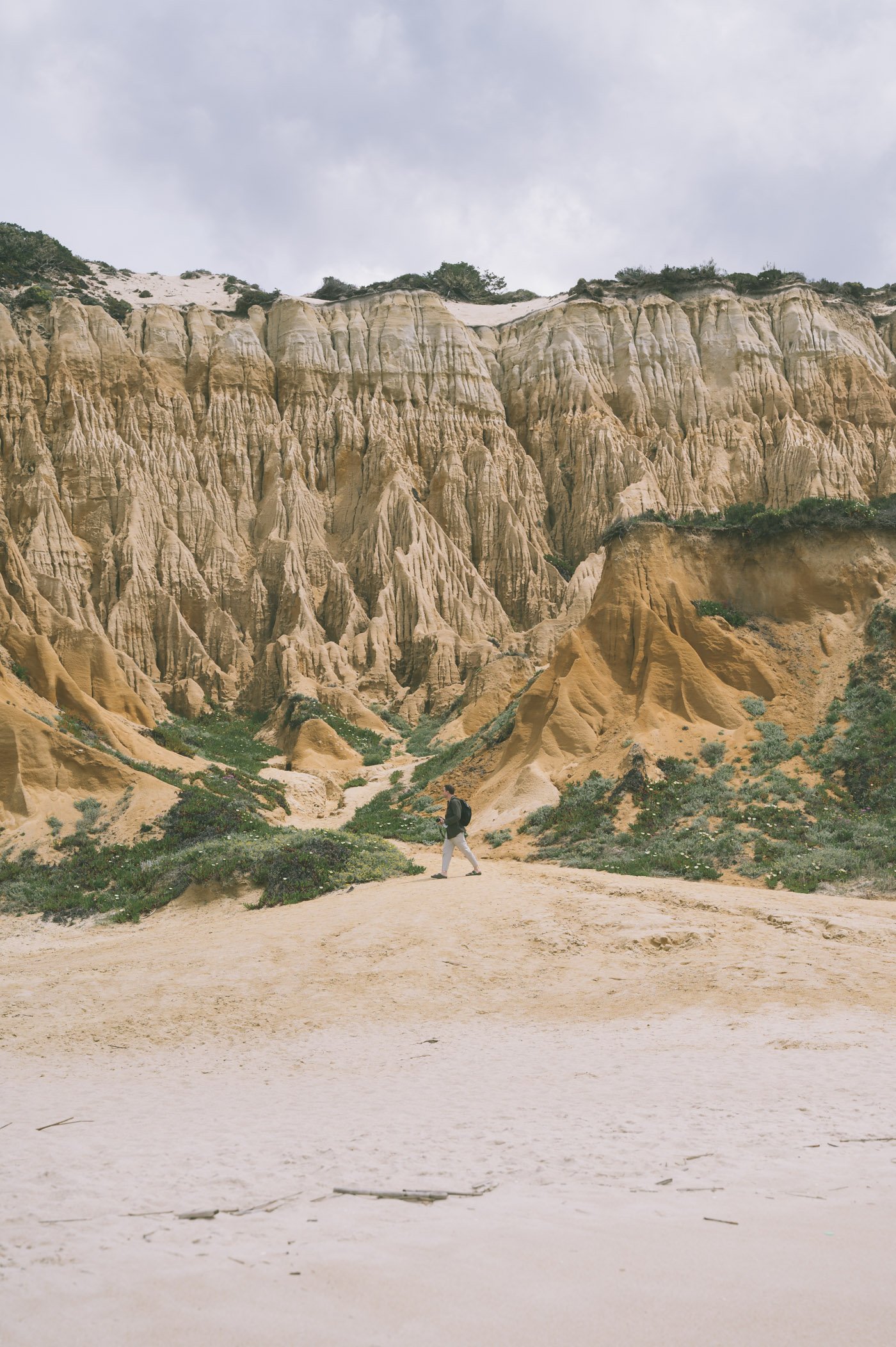
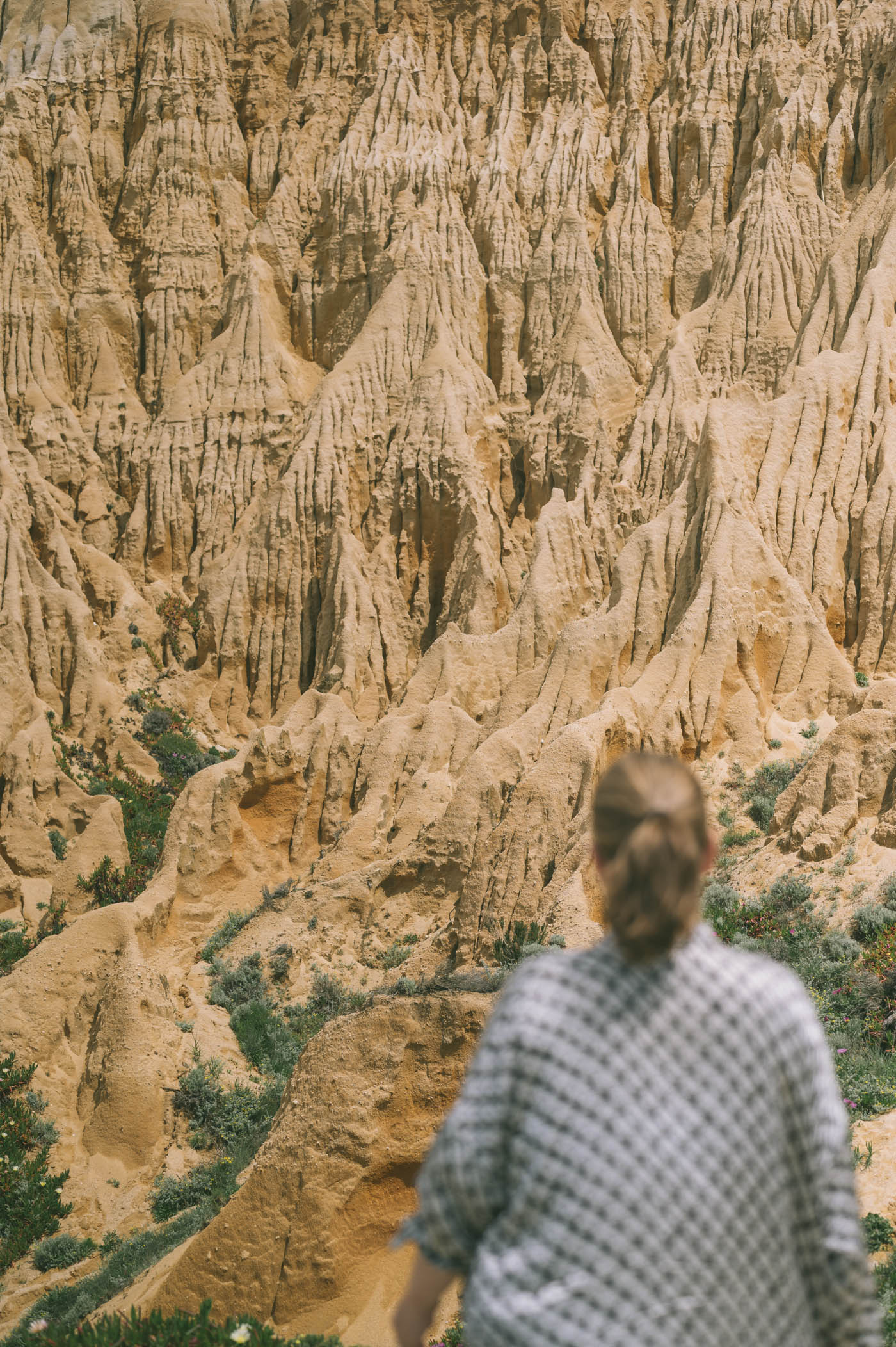
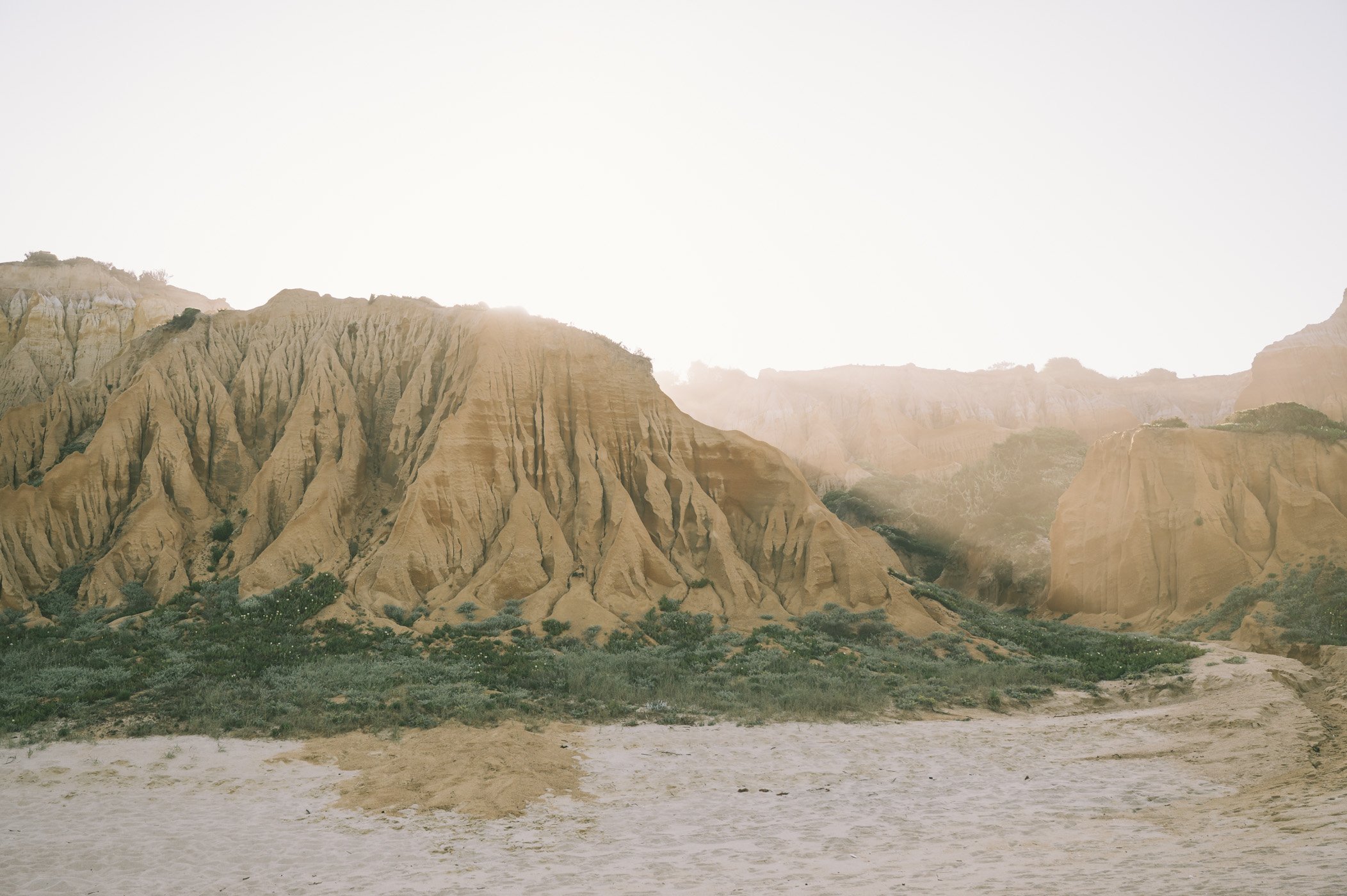 The natural erosion and natural occurring dunes prevent the shoreline from being developed – so much of the coastline is still unspoilt.
The natural erosion and natural occurring dunes prevent the shoreline from being developed – so much of the coastline is still unspoilt.
Where to stay in Comporta: Sublime Comporta
We stayed in the most famous resort of Comporta, the luxury Sublime Comporta with it’s cabana style architecture. Cabanas are the ultimate symbol of Comporta and that’s where the inspiration was draw from. The hotel is nestled on a 17-hectare estate surrounded by pine and cork trees and each of the cabana style villas are built to blend into the natural environment.
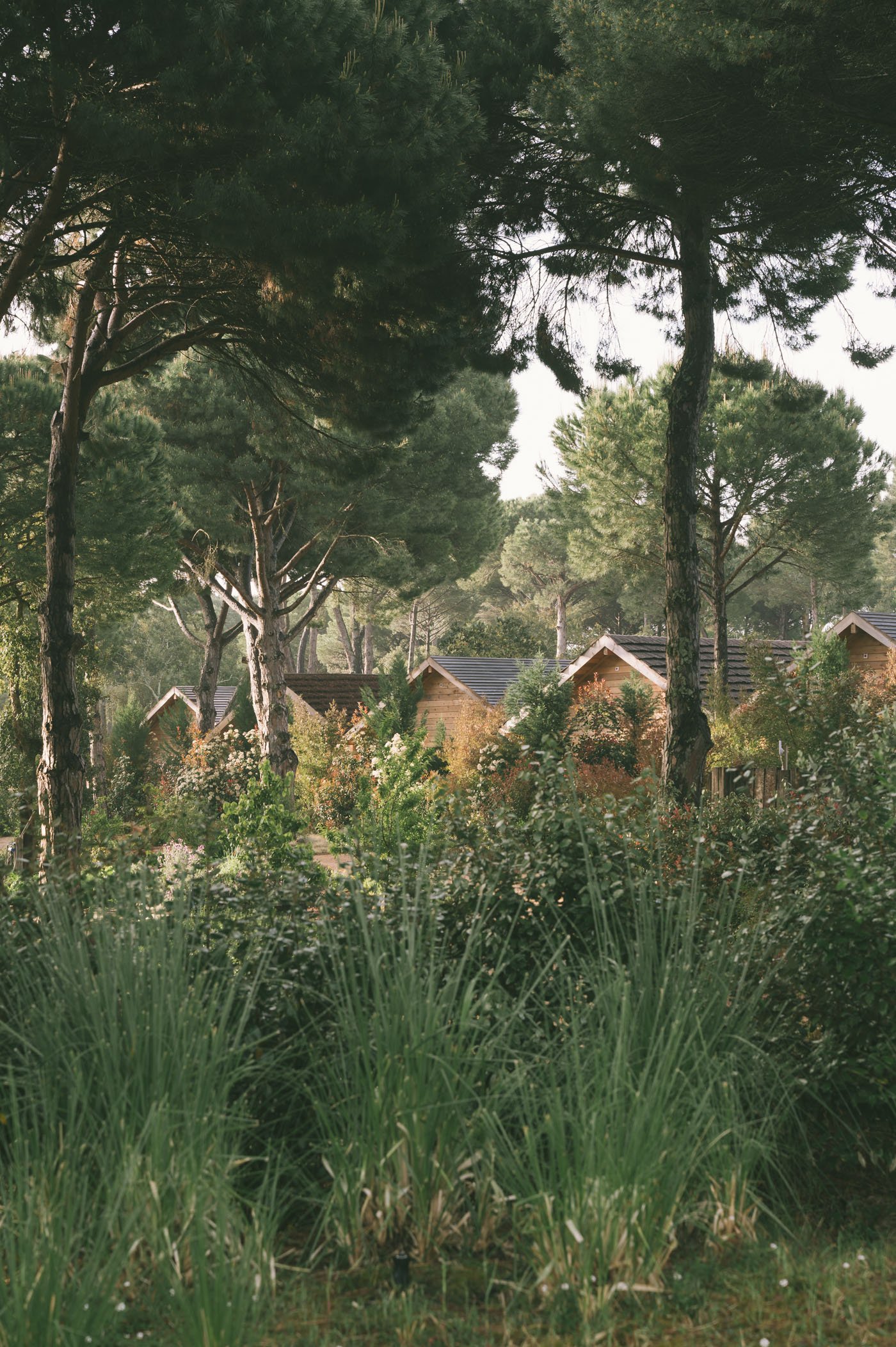
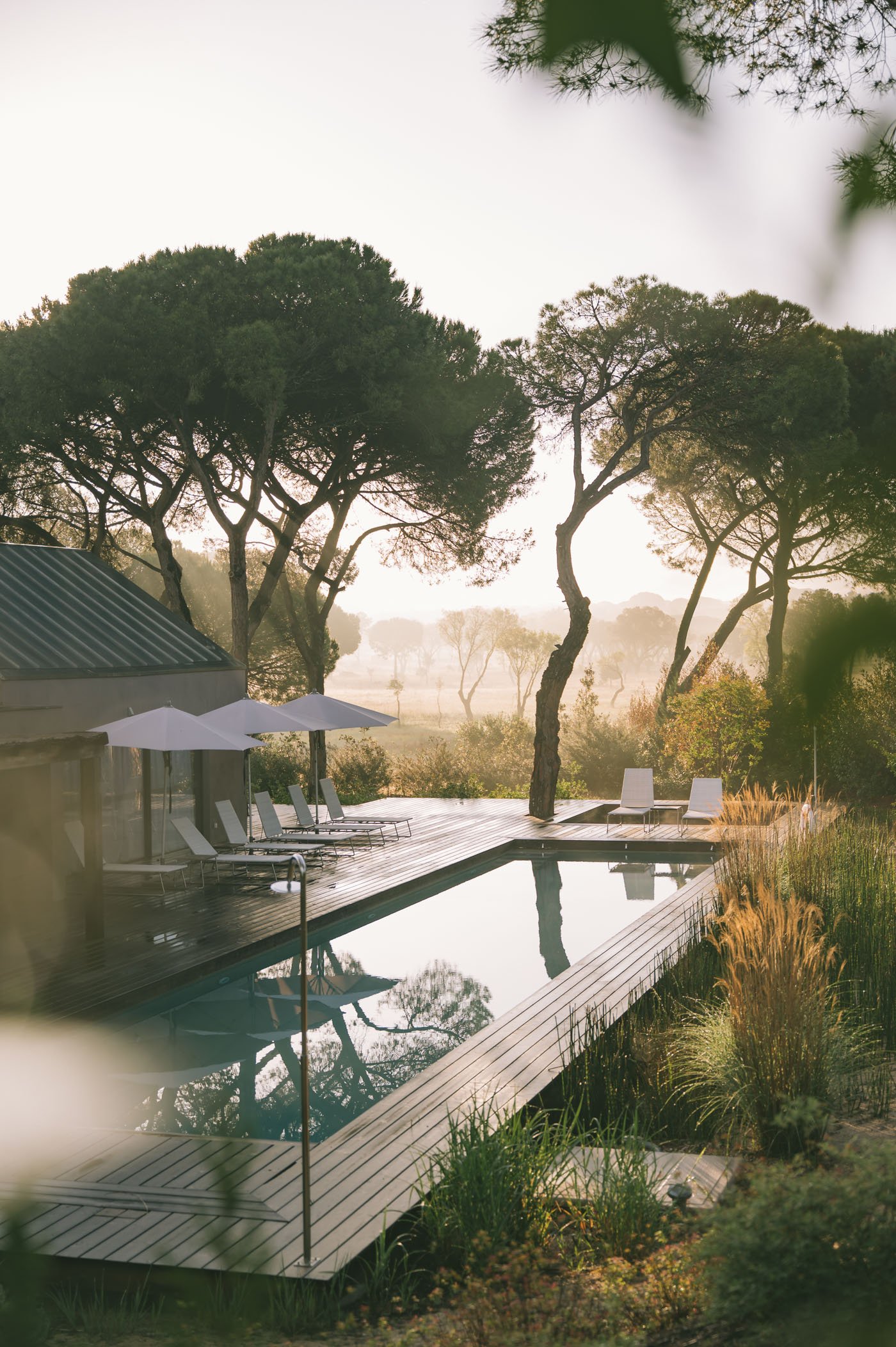
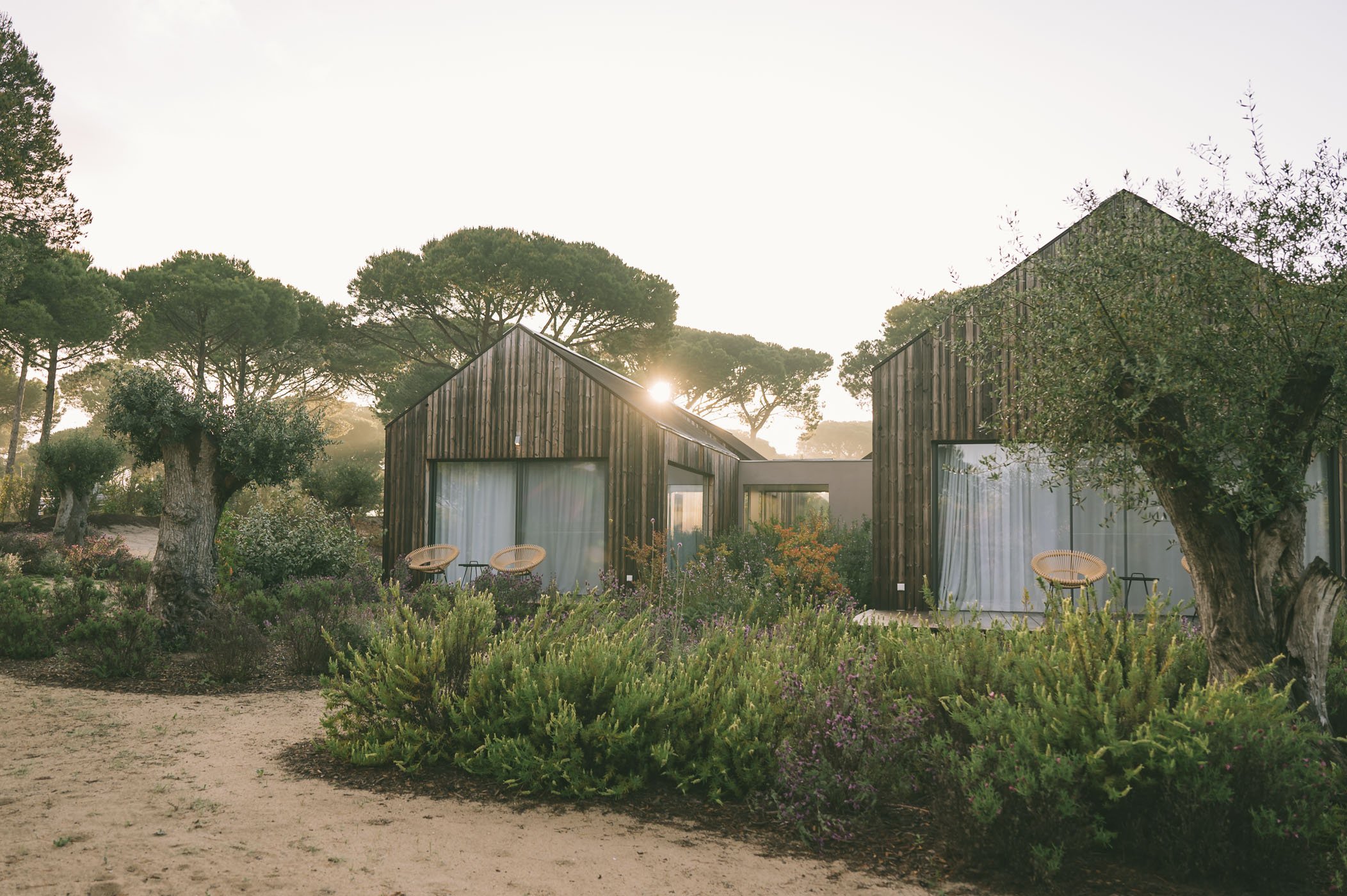 The villas at Sublime Comporta are built in a way to respect each tree – they tried to build them surrounding the natural landscape.
The villas at Sublime Comporta are built in a way to respect each tree – they tried to build them surrounding the natural landscape.
Our room at Sublime Comporta
There’s a multitude of different room types across Sublime Comporta, we stayed in a “Villa Room Master” in the five-room Villa #35 at the very end of the estate. That is quite a plus, since the rooms in the first row are rather close to the main road with some heavier traffic. The further to the back the more quiet guests can enjoy.
 Villas #35 and #36 are at located at the very back of Sublime Comporta and offer more solitude and quiet than the ones in the front.
Villas #35 and #36 are at located at the very back of Sublime Comporta and offer more solitude and quiet than the ones in the front.
Sublime Comporta isn’t as understated as São Lourenço do Barrocal, in fact it’s all about statements. The journey begins at the spacious main building with a reception area with two huge fireplaces and a statement bar at the centre. It’s also home to the Sem Porta restaurant, that offers breakfast and dinner with a huge selection.
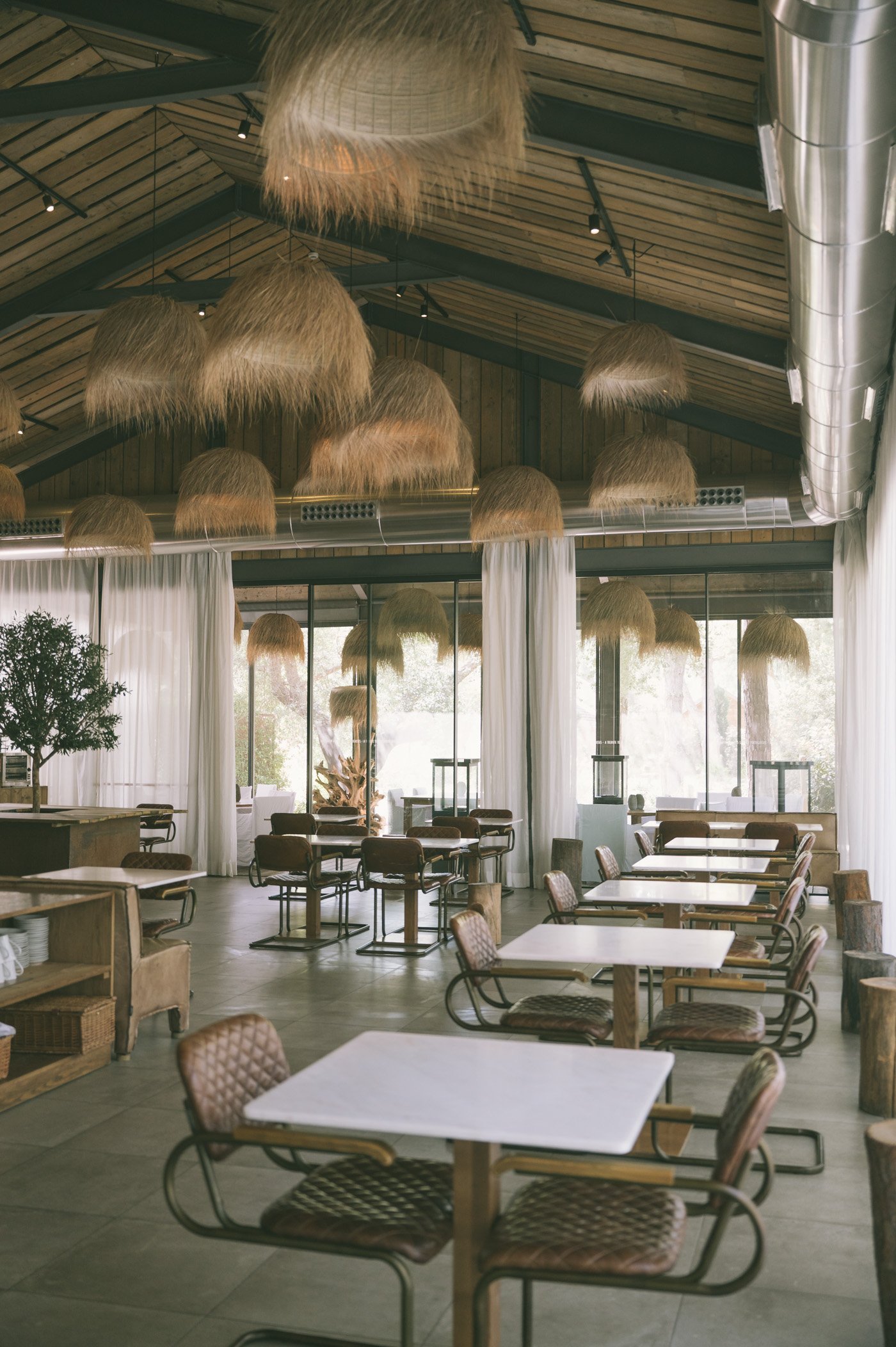
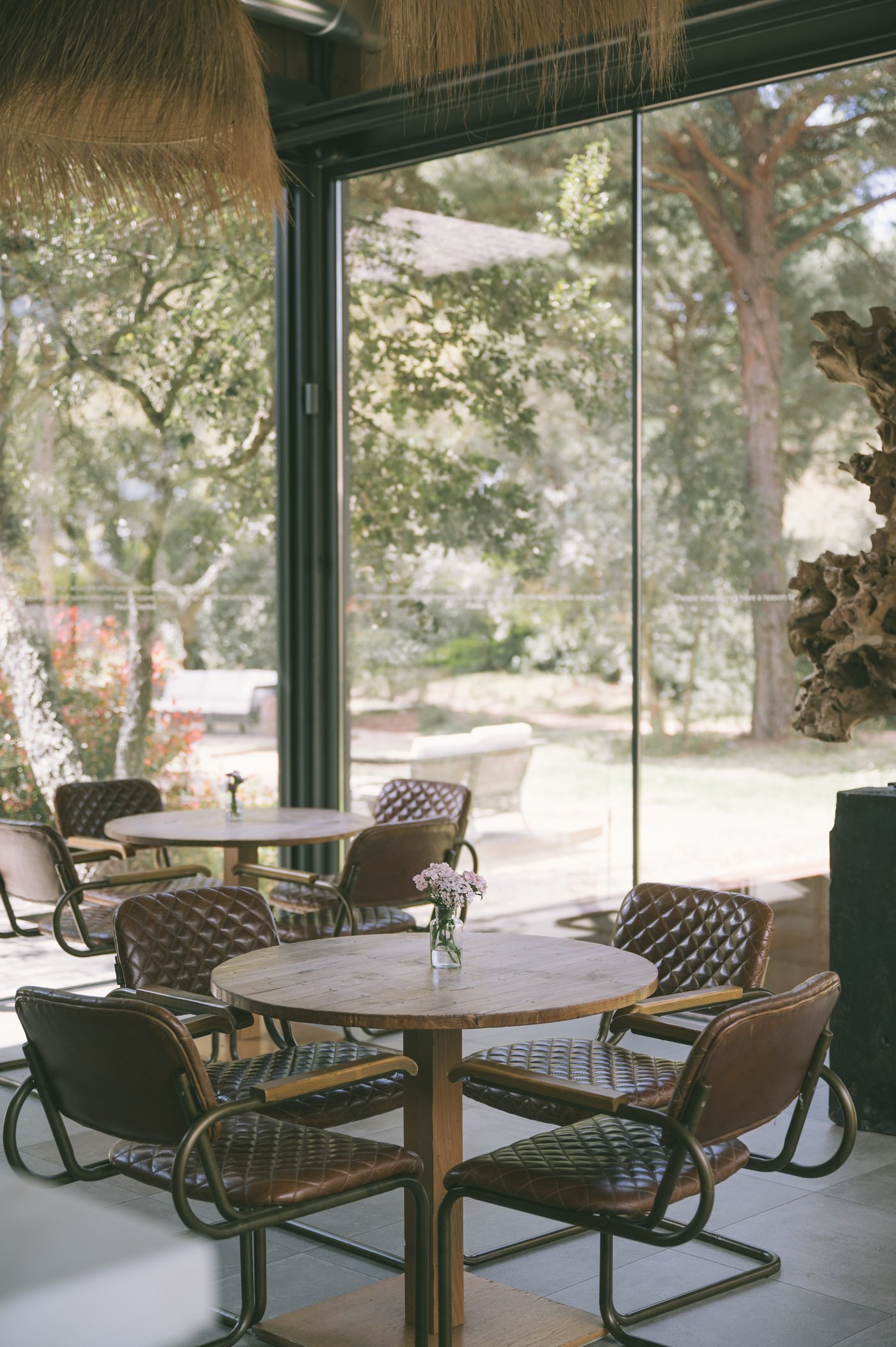

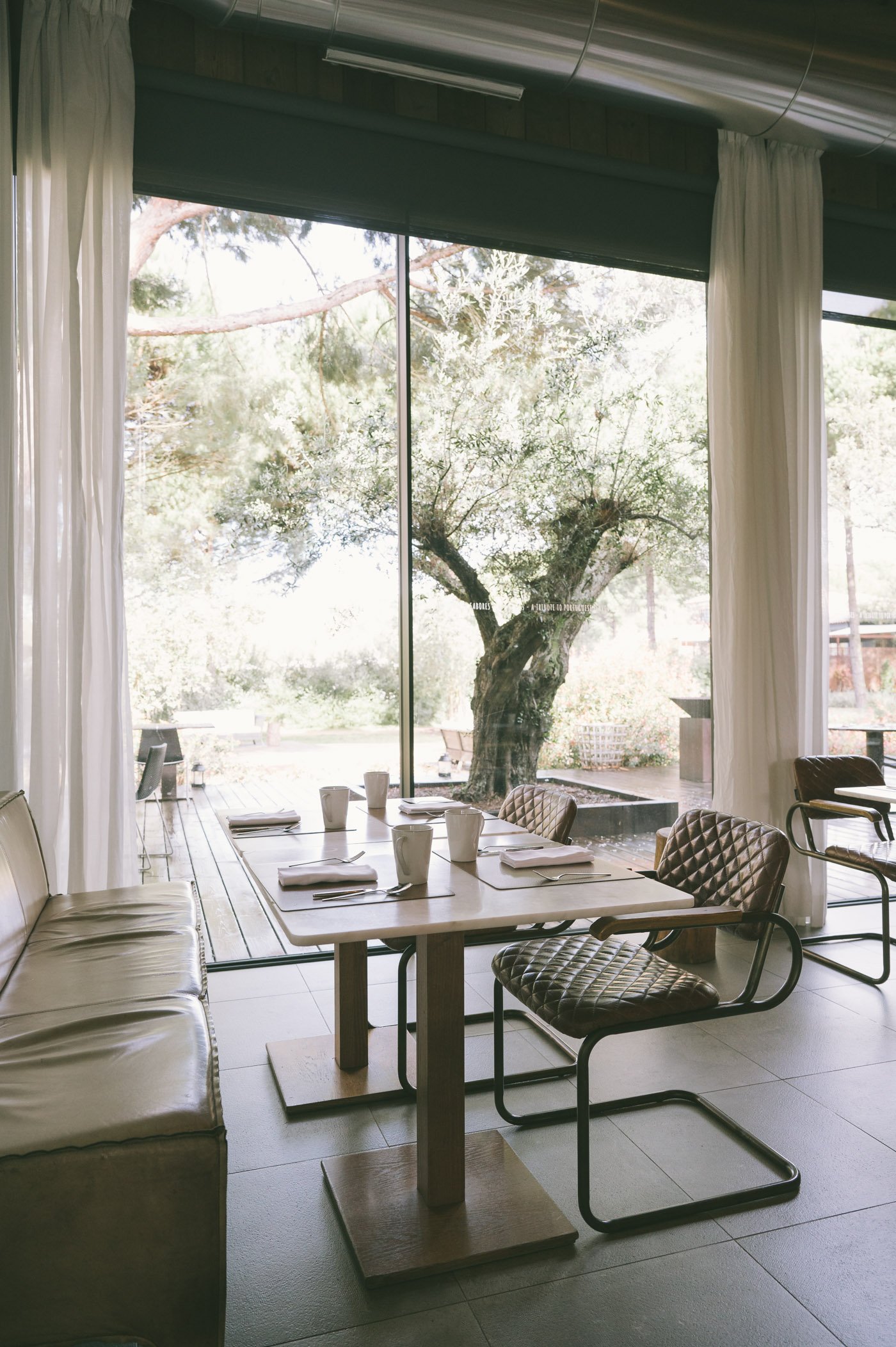
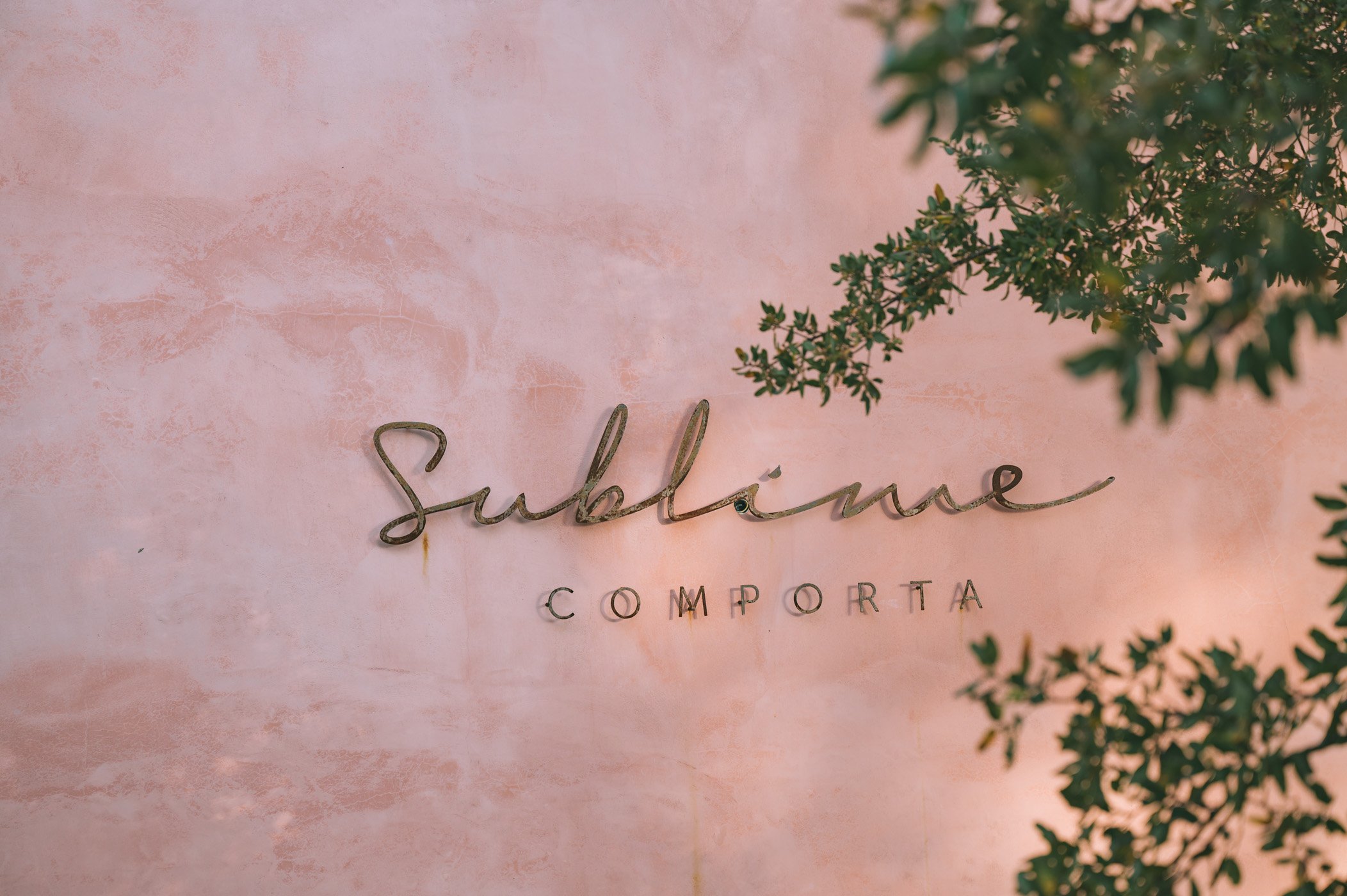 The stunning Sem Porta Restaurant is where we had breakfast and dinner during our stay at Sublime Comporta.
The stunning Sem Porta Restaurant is where we had breakfast and dinner during our stay at Sublime Comporta.
Once you have checked in you can take the car all the way to your villa, where you park in front of the house. The whole estate exudes the flair of your very own private vacation home. Yet, with all the services of a hotel!

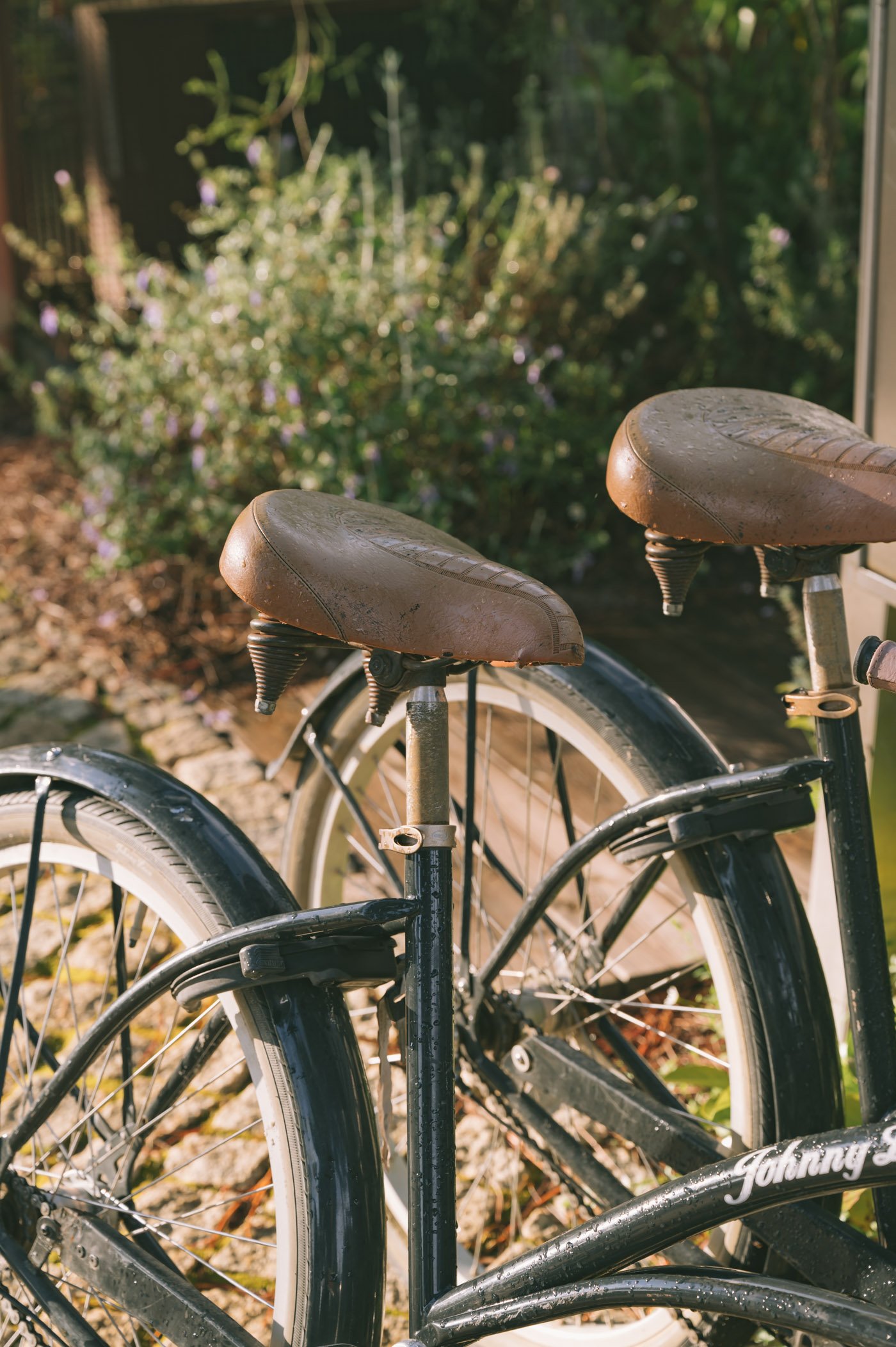
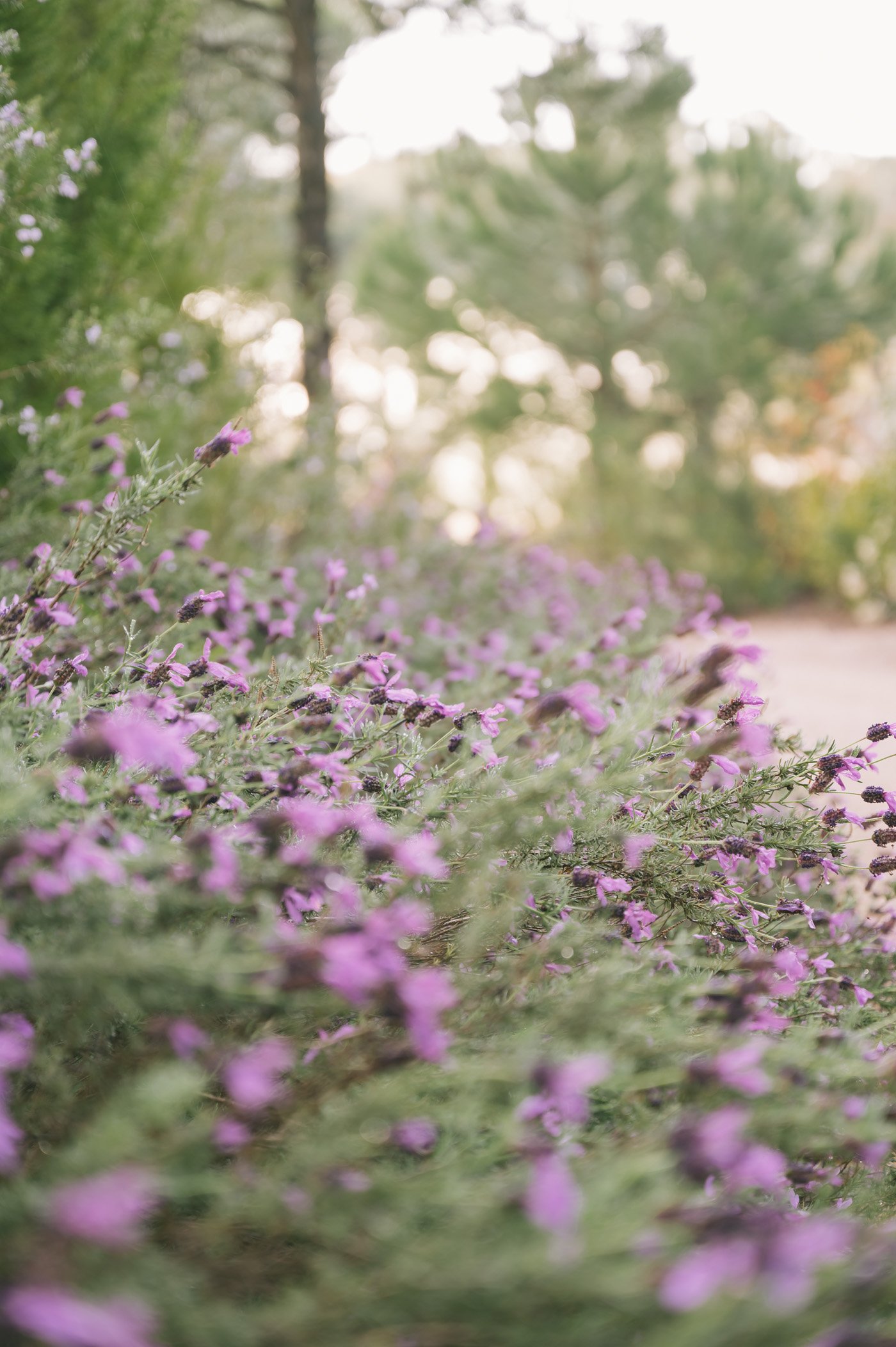
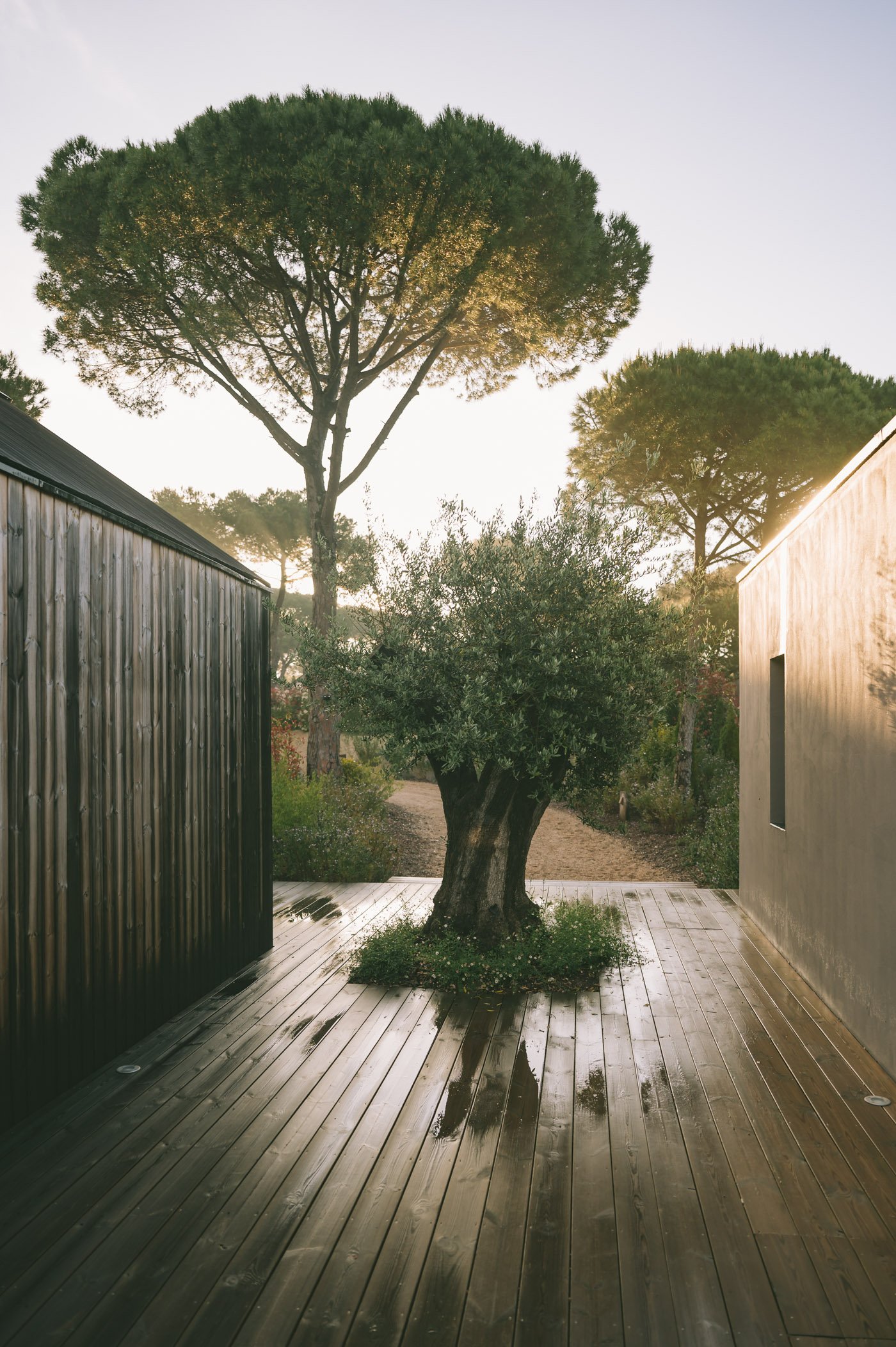
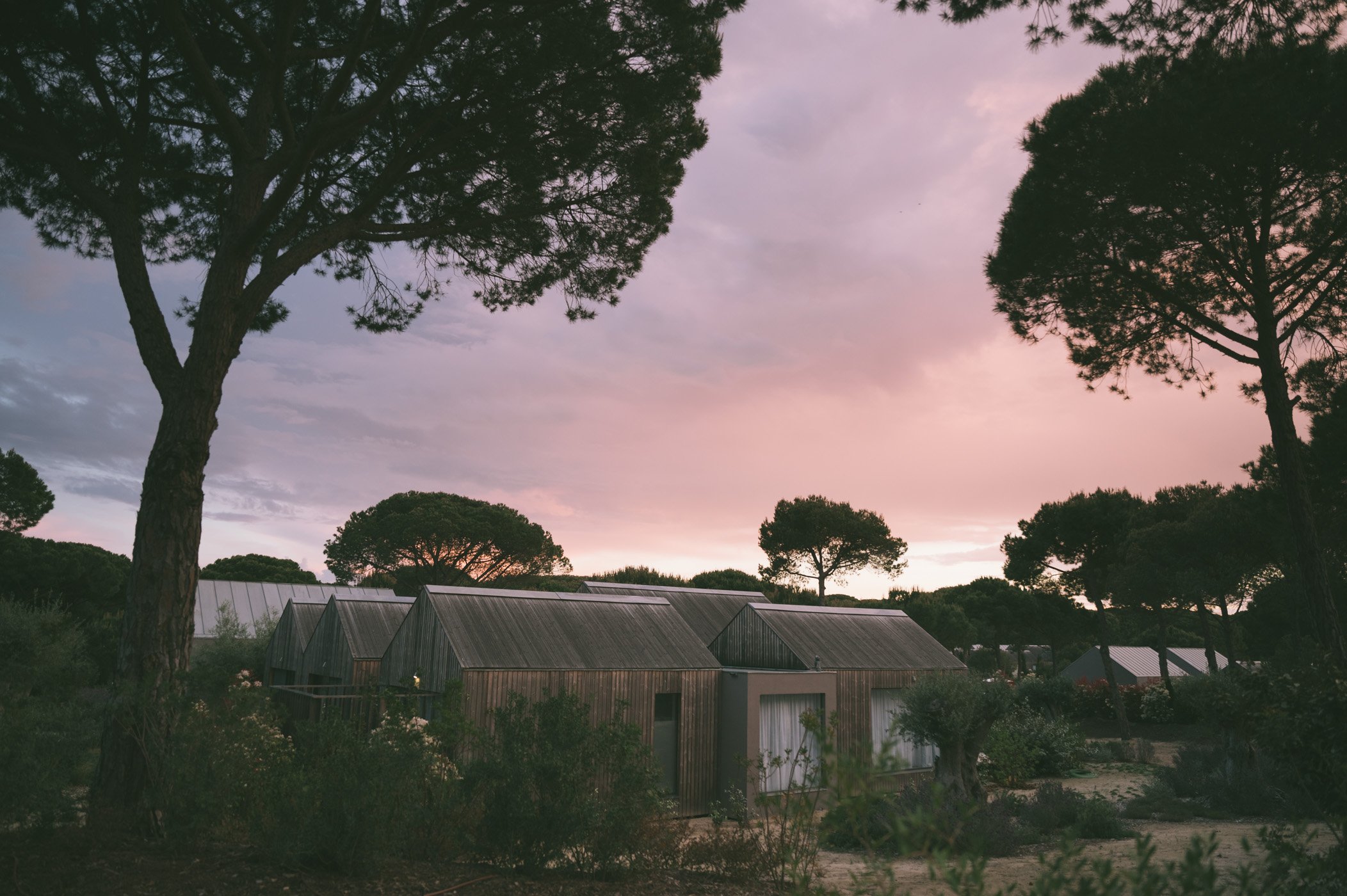 The villas are spread out over the 17 hectare estate of Sublime Comporta – guests can take their cars all the way to their villa and then use golf carts or bikes to get around.
The villas are spread out over the 17 hectare estate of Sublime Comporta – guests can take their cars all the way to their villa and then use golf carts or bikes to get around.
Rooms, villas and cabanas
We got the chance to also take a peak inside the best-selling rooms at Sublime Comporta – the new Bio-Pool Suites. These stilted cabanas are built on top of the new natural swimming pond – each with it’s very own private terrace and access to the lake. The suites feature more natural materials, wood and basketwork decorations and feel a bit warmer than the very reduced rooms in the regular villas.
The bottom line: Sublime Comporta is the perfect place to indulge in a private atmosphere, but still enjoy all the amenities a hotel offers. The close-by beaches are the highlight for a day trip before returning to the estate.
What to do in & around Comporta
From Sublime Comporta it’s a 10 minutes drive to the beaches. Our first destination was “Praia do Carvalhal” for a lunch on the terrace of Sublime’s very own new beach club. The “Sublime Comporta Beach Club” offers a menu filled with seafood and fish, but also for us as vegetarians we found a nice selection (think burrata, fries, fresh salads and our highlight: asparagus tempura)!
If you’re looking for a beach to relax at the stretch in front of the beach club is also very inviting, there are some grass-covered sand dunes, that are perfect to lounge at. Another option would be to visit “Praia da Comporta” a bit more to the North. We sat down for drinks at “Comporta Café Beach Club”, which isn’t as fancy as Sublime, but also offers nice beach views.
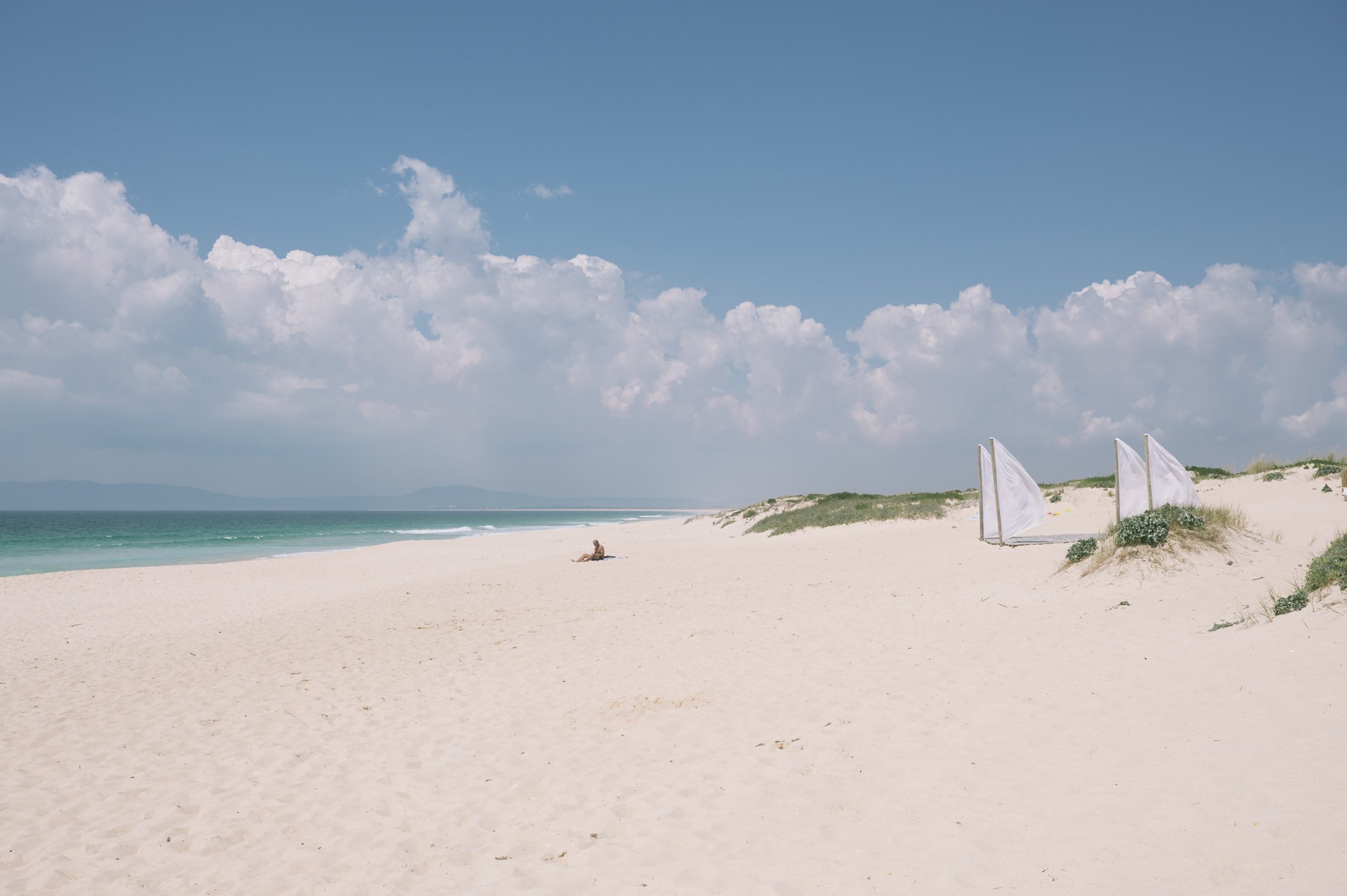 Comporta beach is still quite empty in April – but with rising temperatures things will soon look different.
Comporta beach is still quite empty in April – but with rising temperatures things will soon look different.
Our favourite beach was “Praia da Galé – Fontainhas“. To go here you have to park in front of the campground (or if you’re lucky you can find a parking spot inside the small vacation home community called “Casa da Falésia – Alojamento Local”). When we went there in April it was still very quiet and there were plenty of parking spots available, but this might be different in the main season.
The eroded stone formations at Praia da Galé date back millions of years as fossile discoveries have proven! It’s a magical place and fairly easy to reach via a wooden staircase – so there’s no climbing necessary.
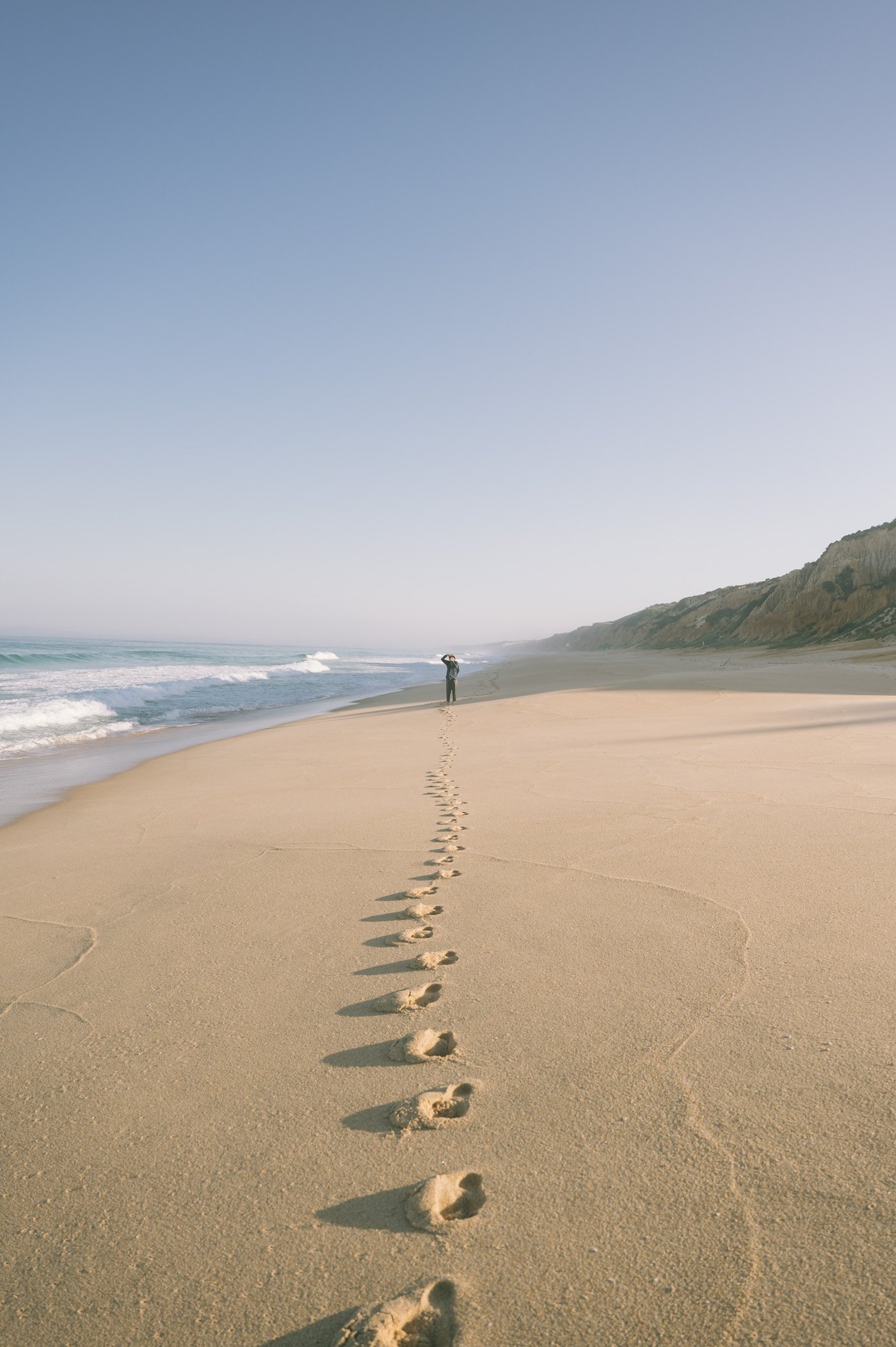
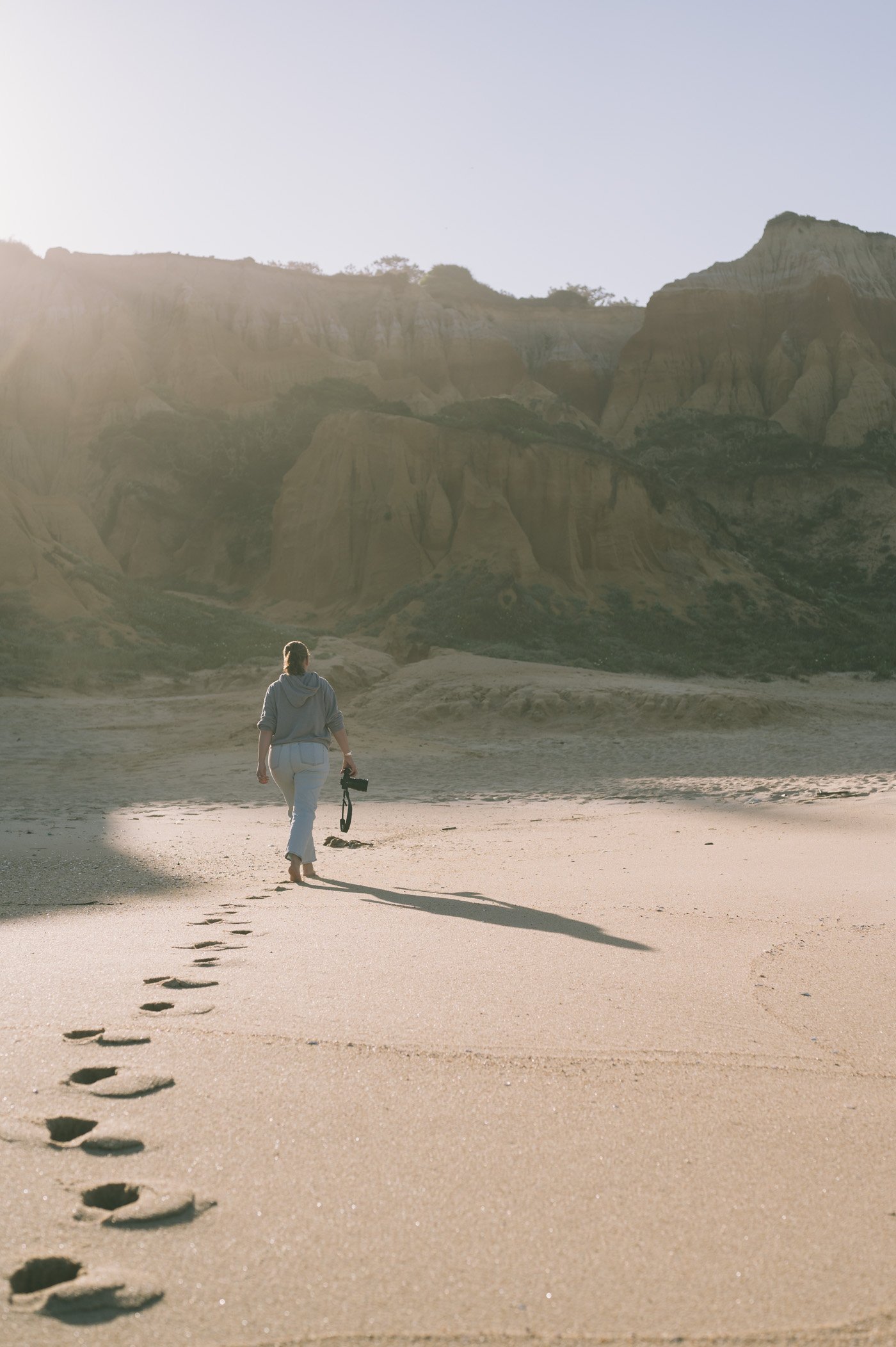
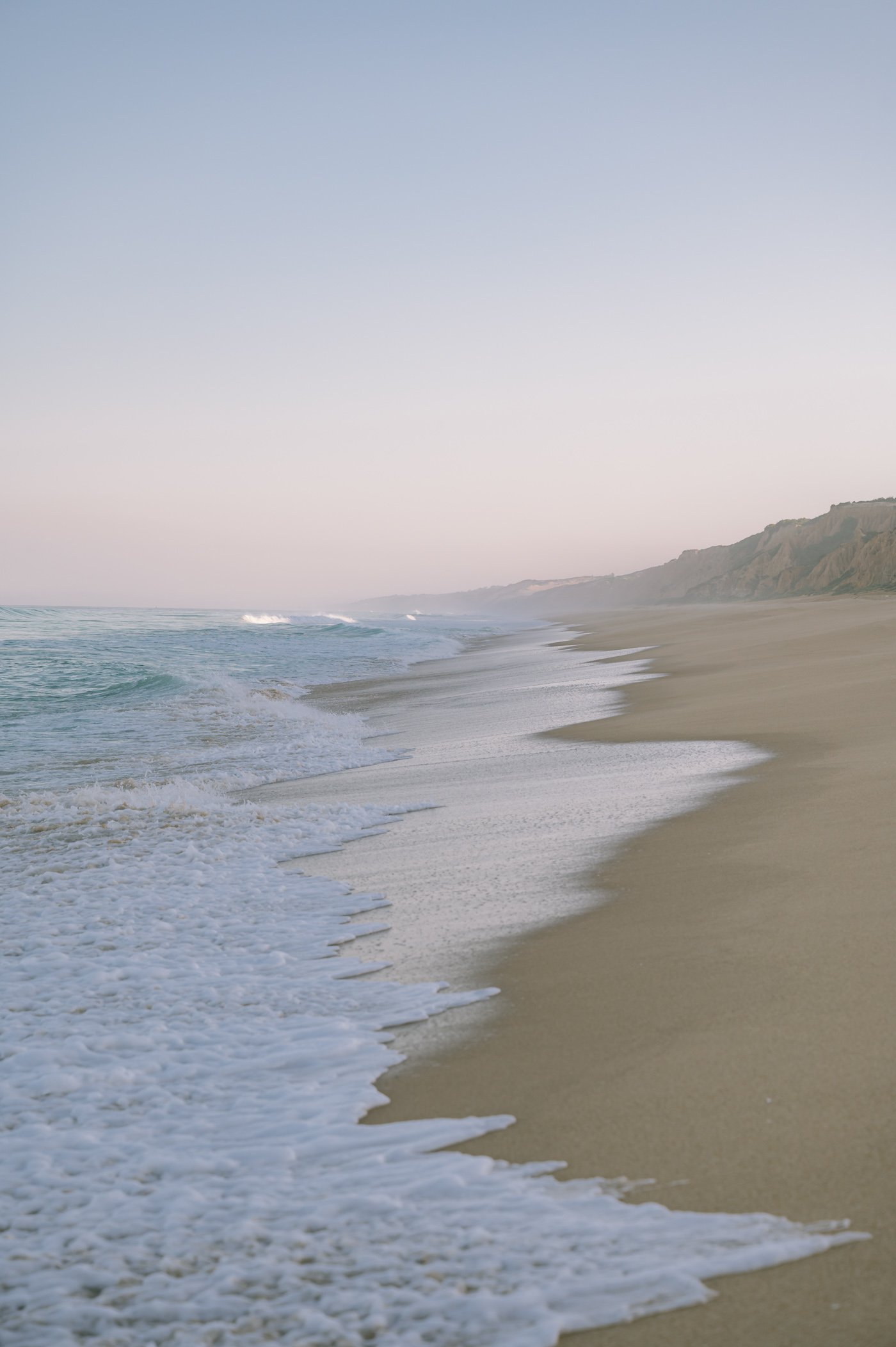

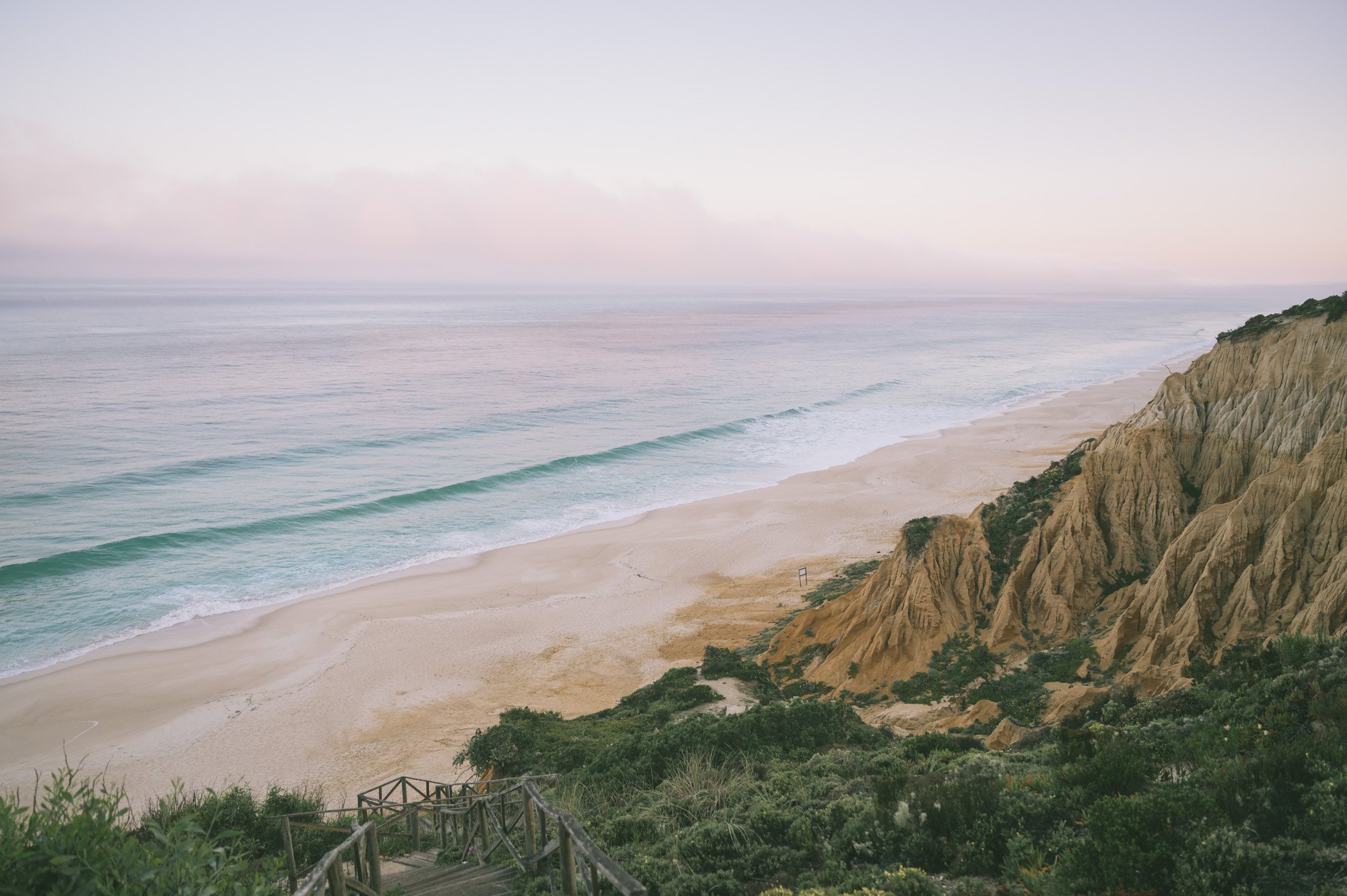 Praia da Galé – Fontainhas was our favourite place alongside the beach.
Praia da Galé – Fontainhas was our favourite place alongside the beach.
Common activities include birding (we’ve never seen so many storks and storks nests like here), dolphin cruises on the Sado river, horse riding and of course relaxing at the beach (although the Atlantic coast is never as calm and warm as the Mediterranean).
Other things to do include:
- Shopping for home decor at “RICE – Marta Mantero“
- Architectural explorations (check out “Cabanas no Rio” for example – a very cool small cabin at the bay)
- Visits of the ramshackle boardwalk called “Cais Palafítico da Carrasqueira”
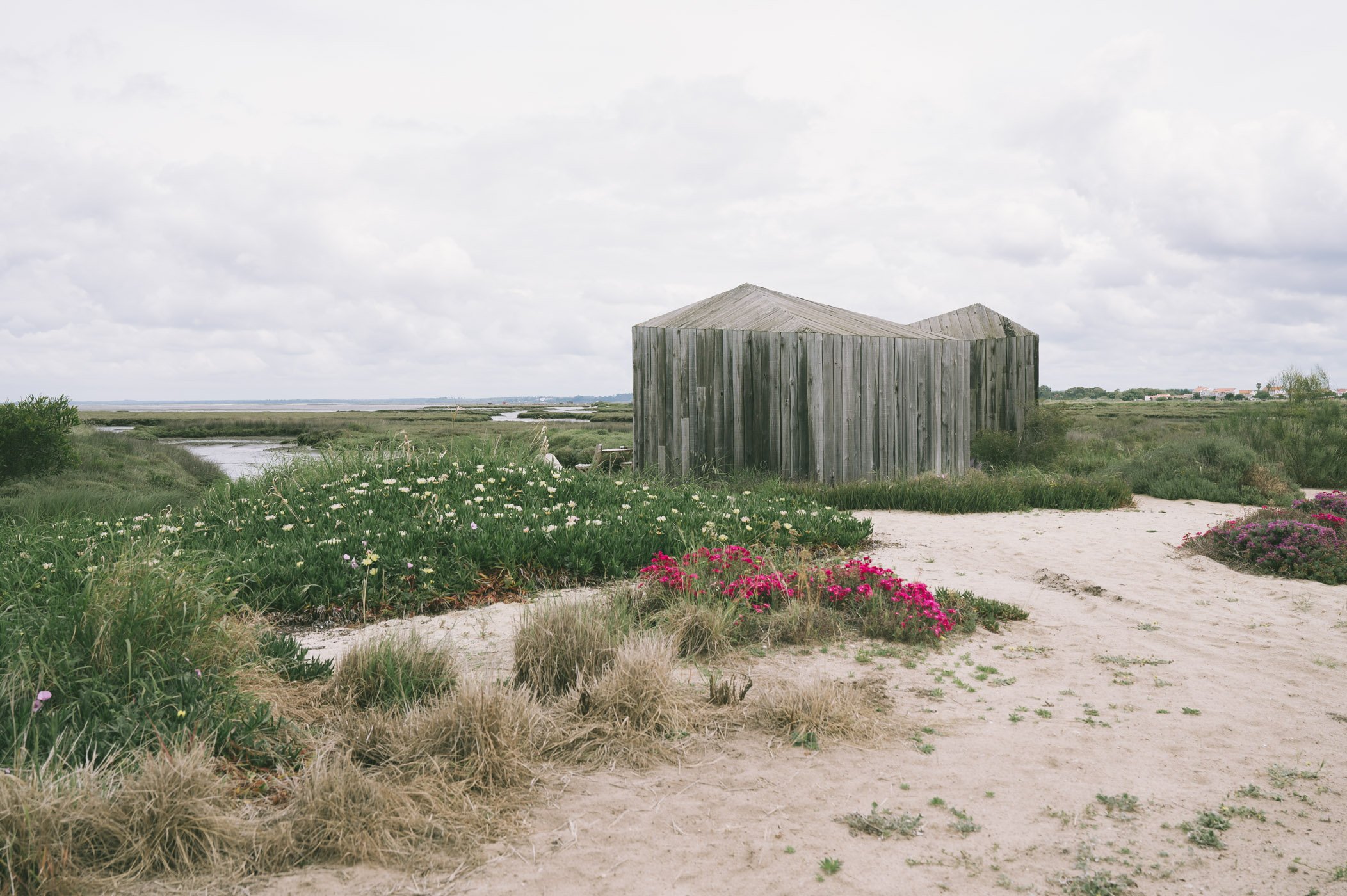 Cabanas no Rio are worth a visit if you’re into architecture, but we wouldn’t want to stay here as the bay doesn’t have such clean water.
Cabanas no Rio are worth a visit if you’re into architecture, but we wouldn’t want to stay here as the bay doesn’t have such clean water.
The perfect traveller type for Alentejo
All in all we recommend the Alentejo region if you’re looking for seclusion and privacy, a true city escape and to immerse yourself in the culture and nature of Portugal.
Alentejo is all about a laid-back vibe and slow travelling.
If you’re choosing Sublime Comporta and São Lourenço do Barrocal you get to enjoy this quiet side of Portugal, while also being offered services on the highest levels. Combining a stay in Comporta with a visit of São Lourenço do Barrocal also brings the best of both worlds of Alentejo – the relaxed beach destination and the laid-back farmstay retreat. And that makes for a great vacation!

